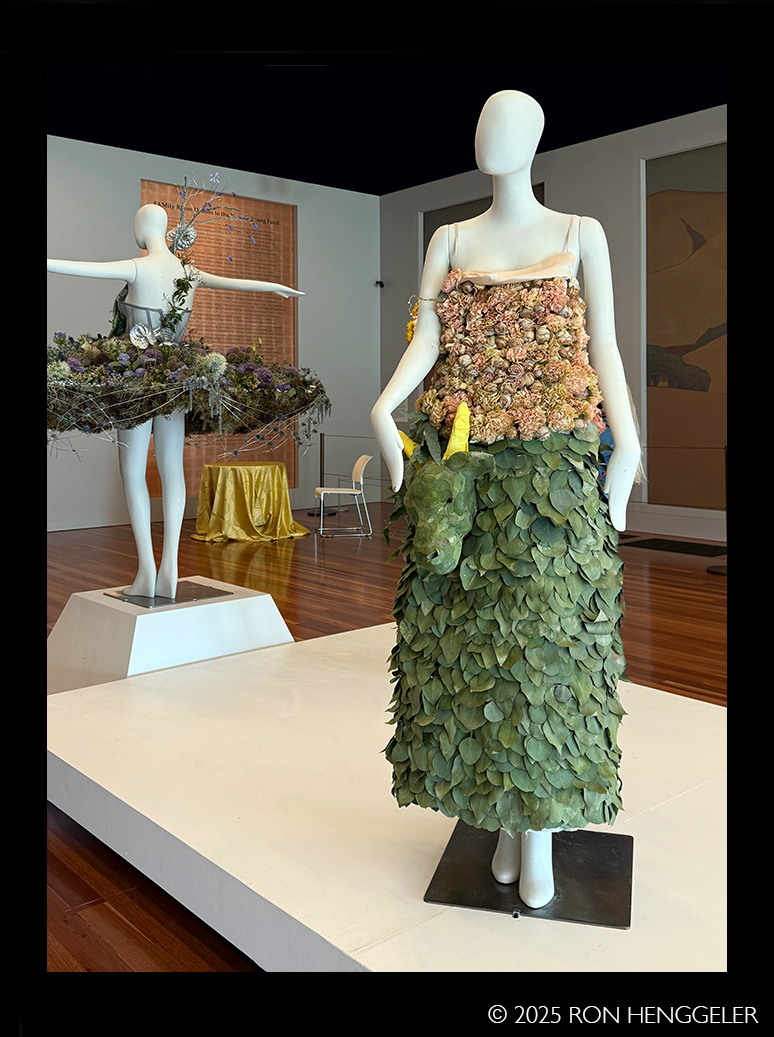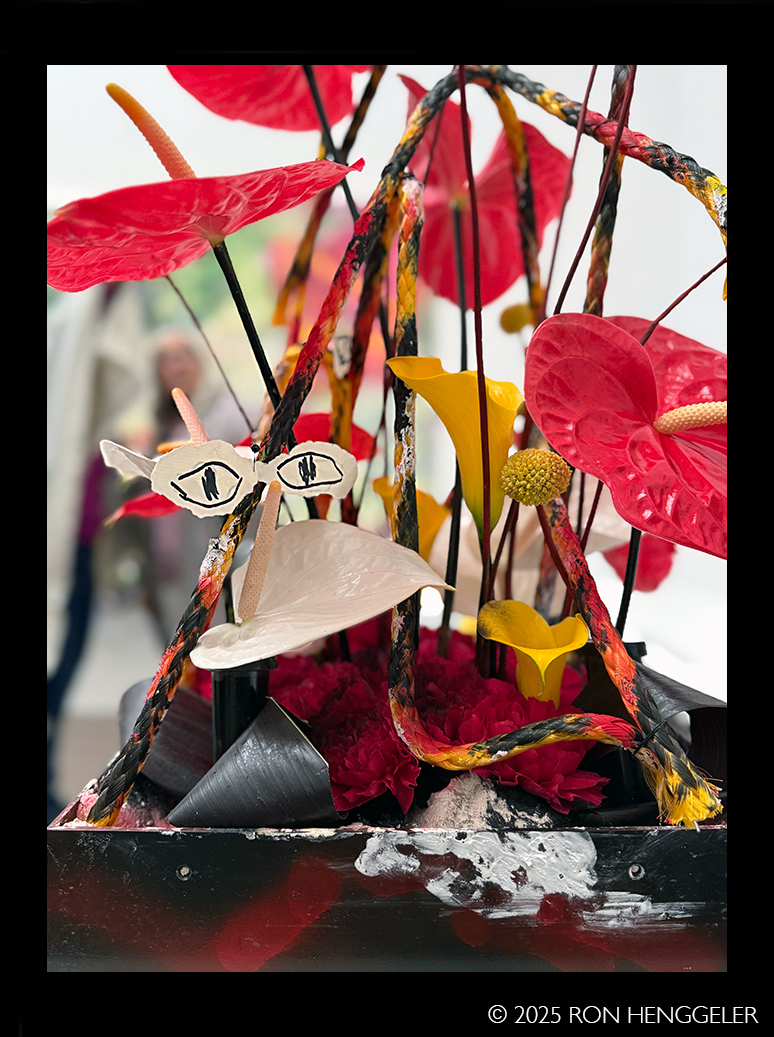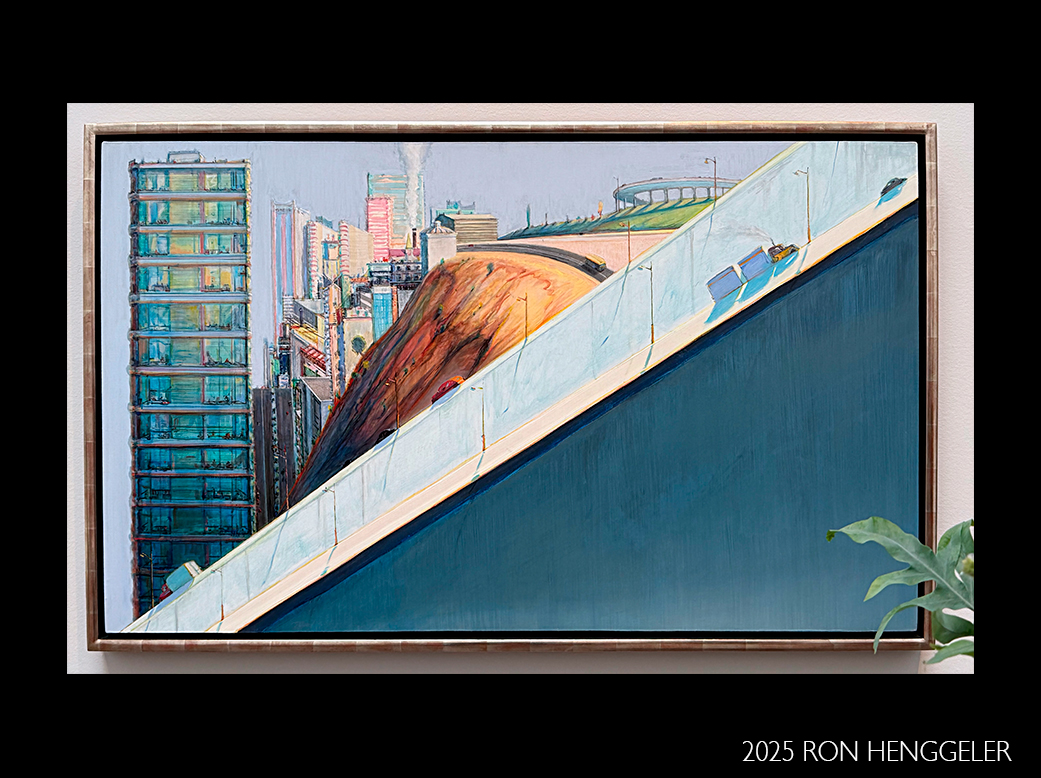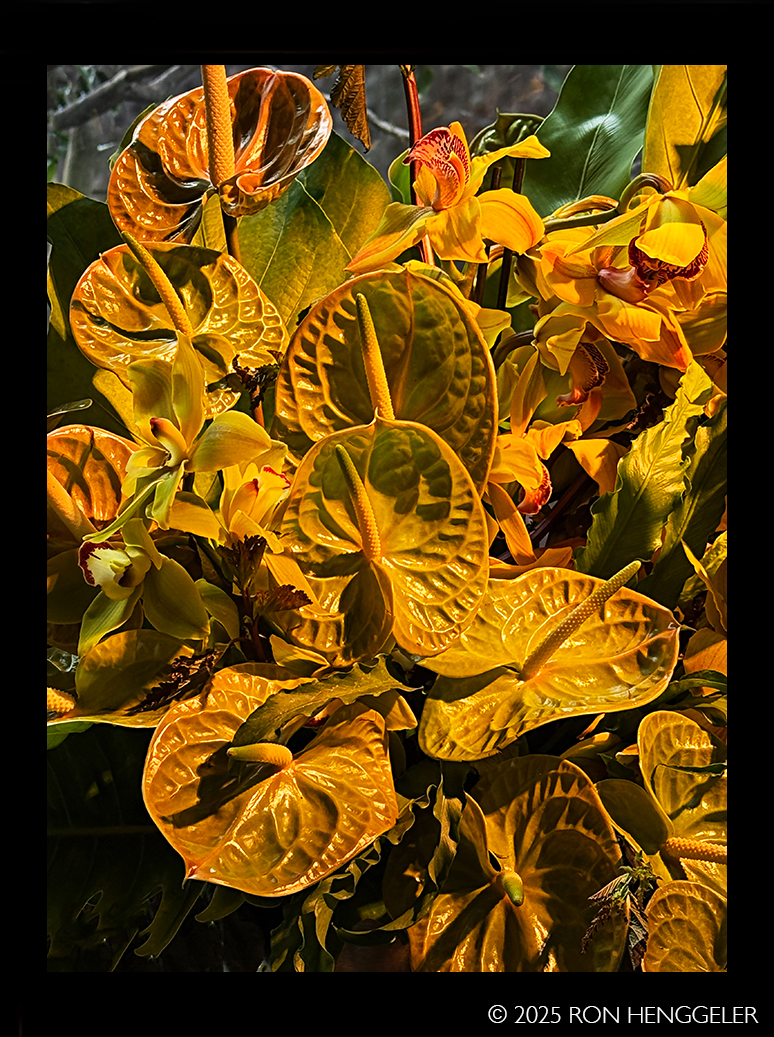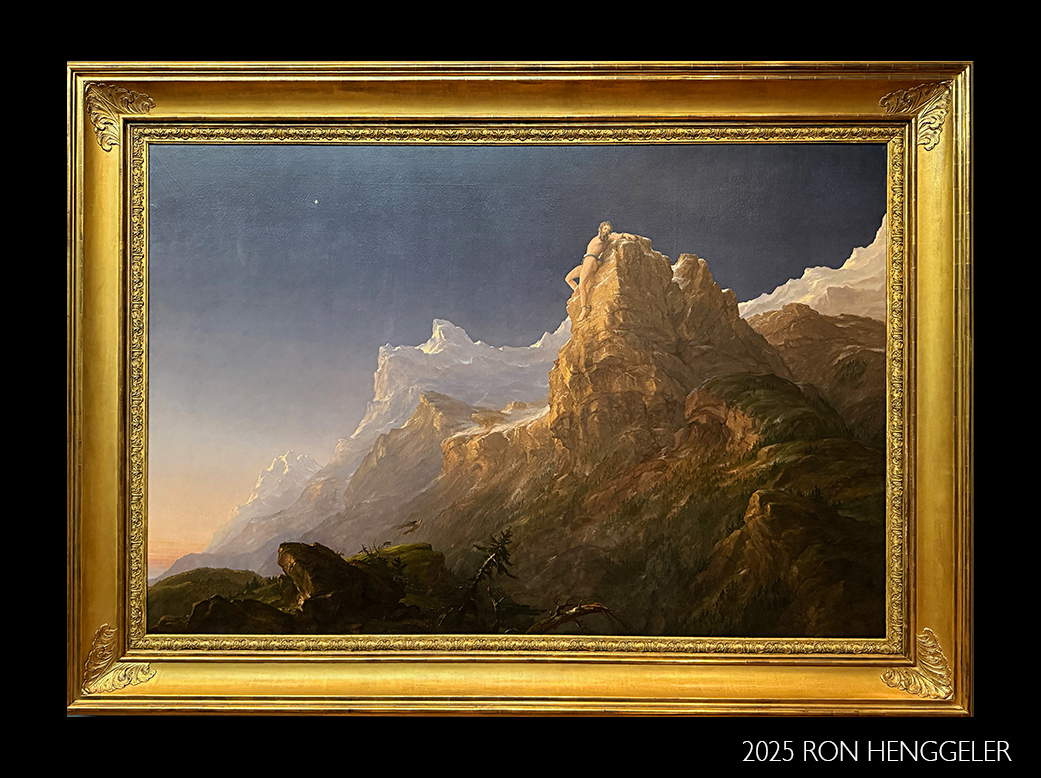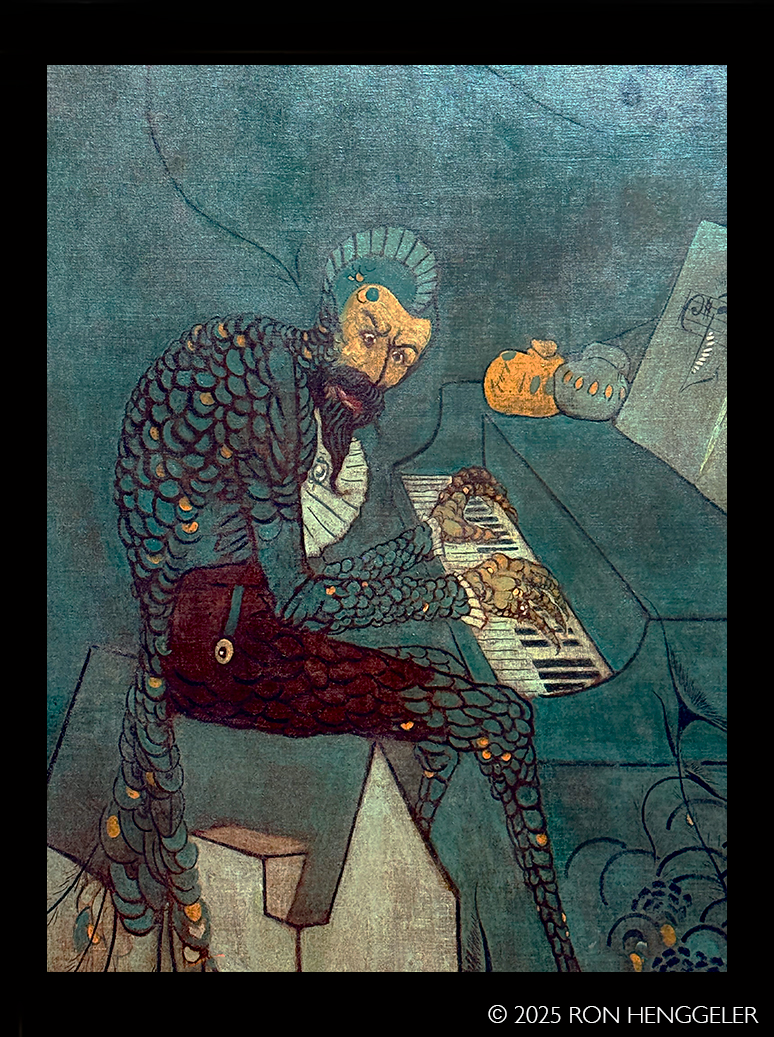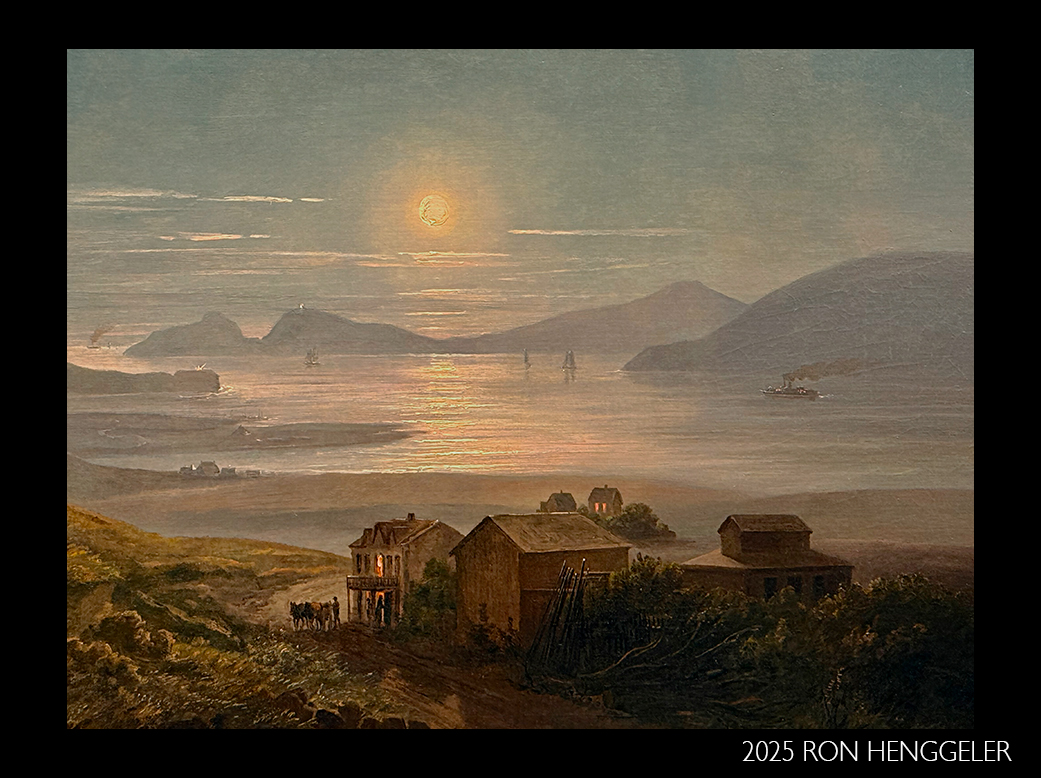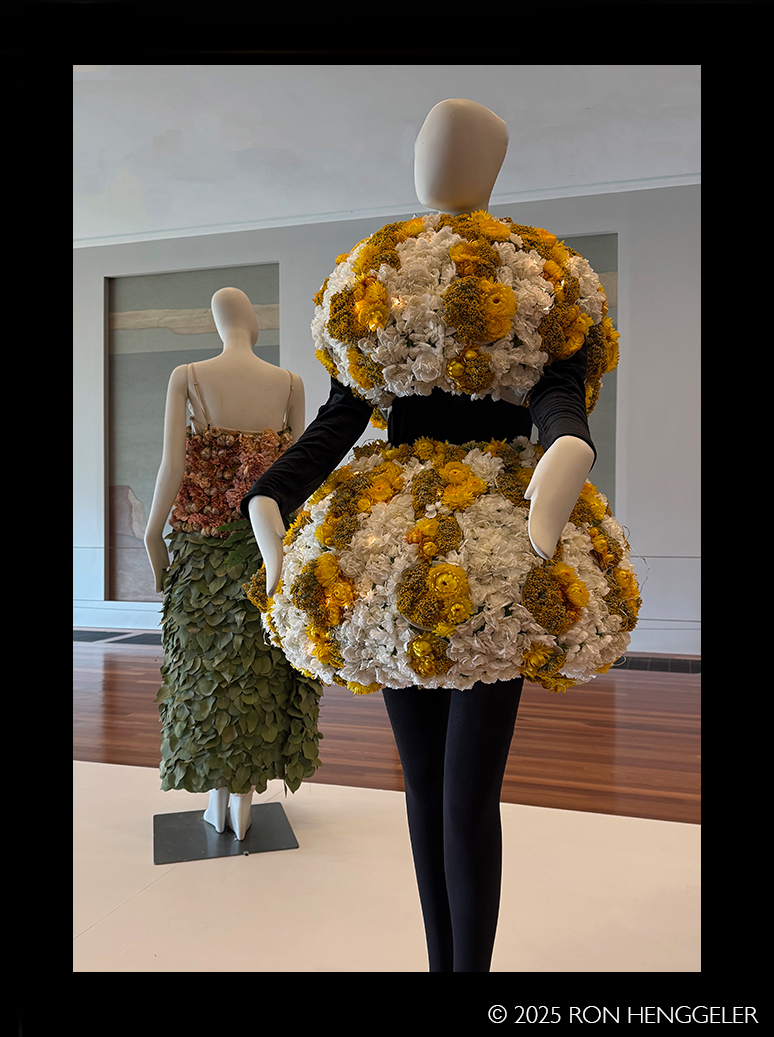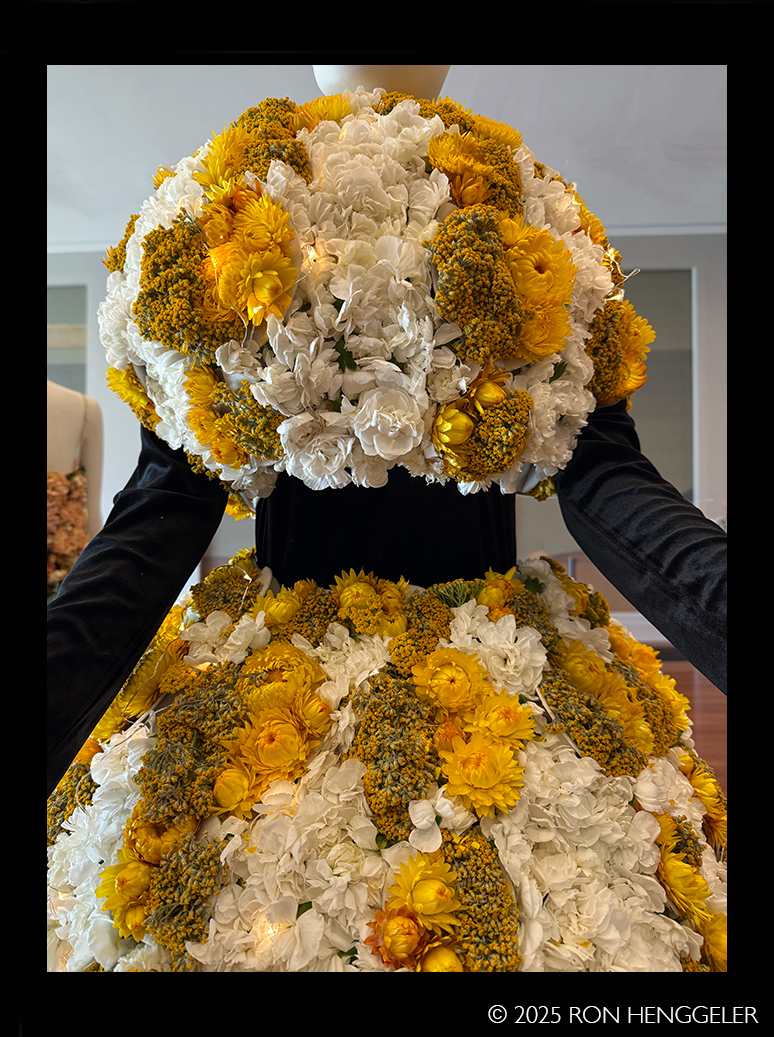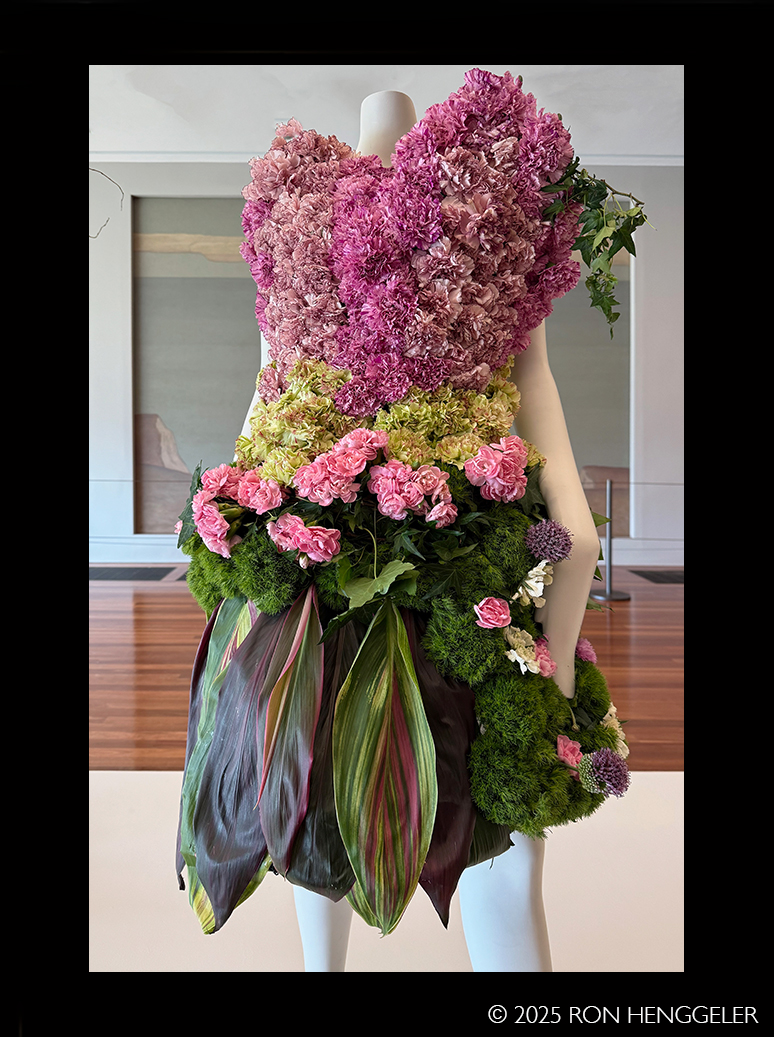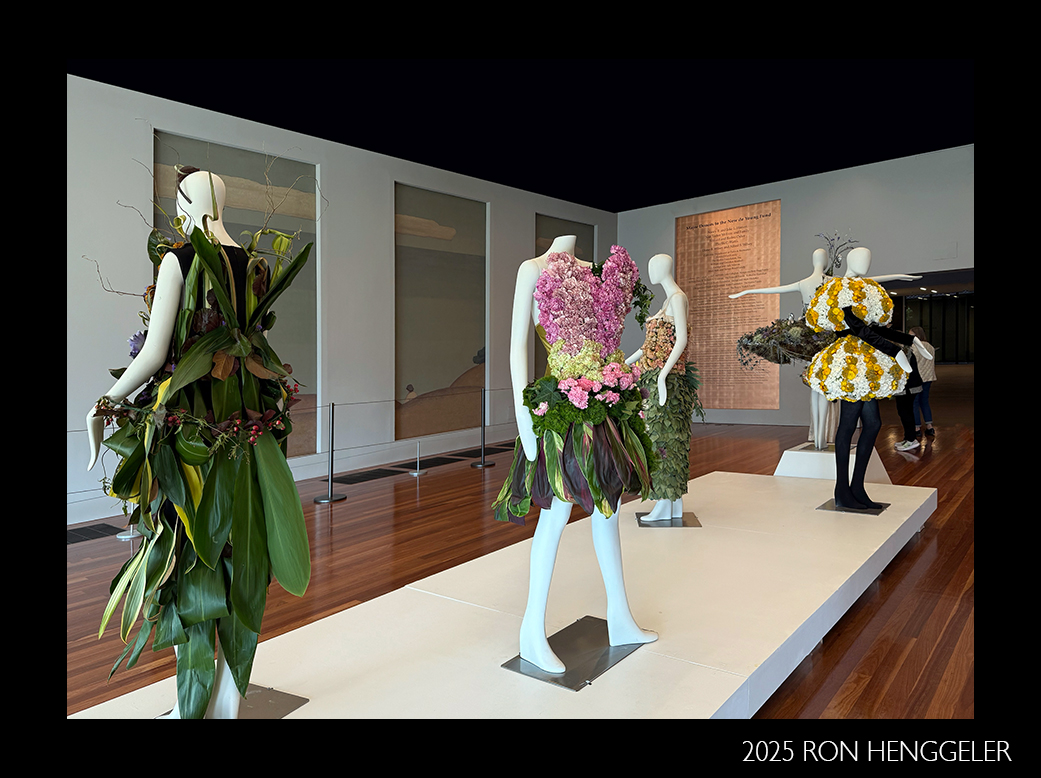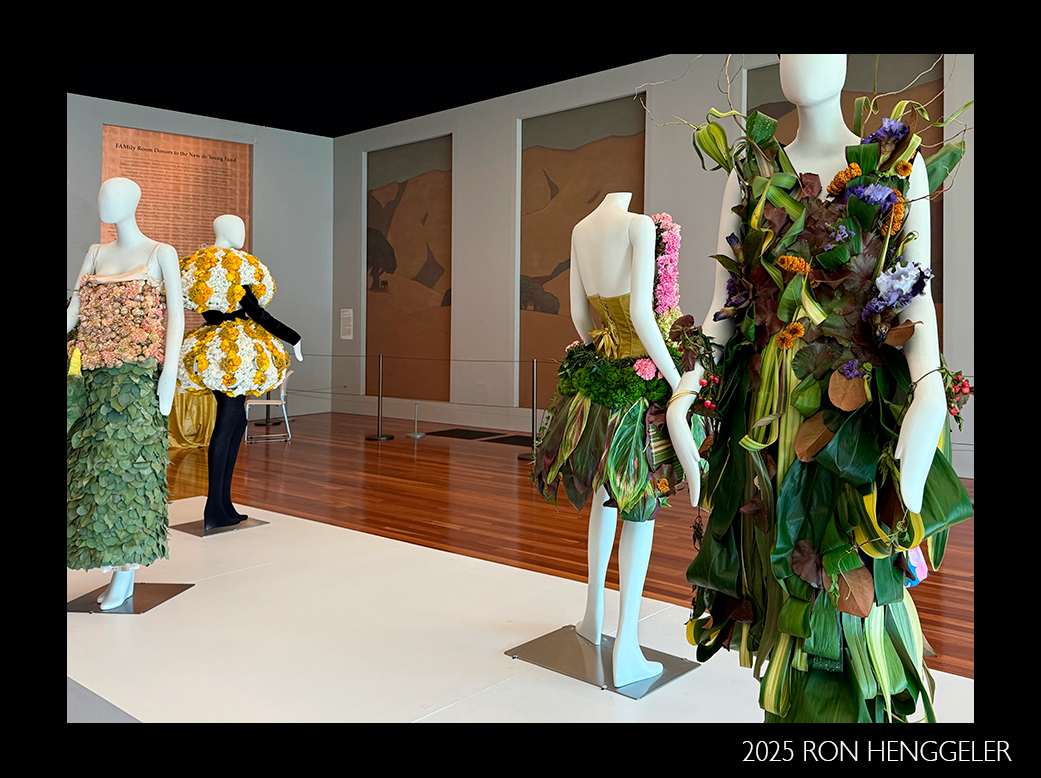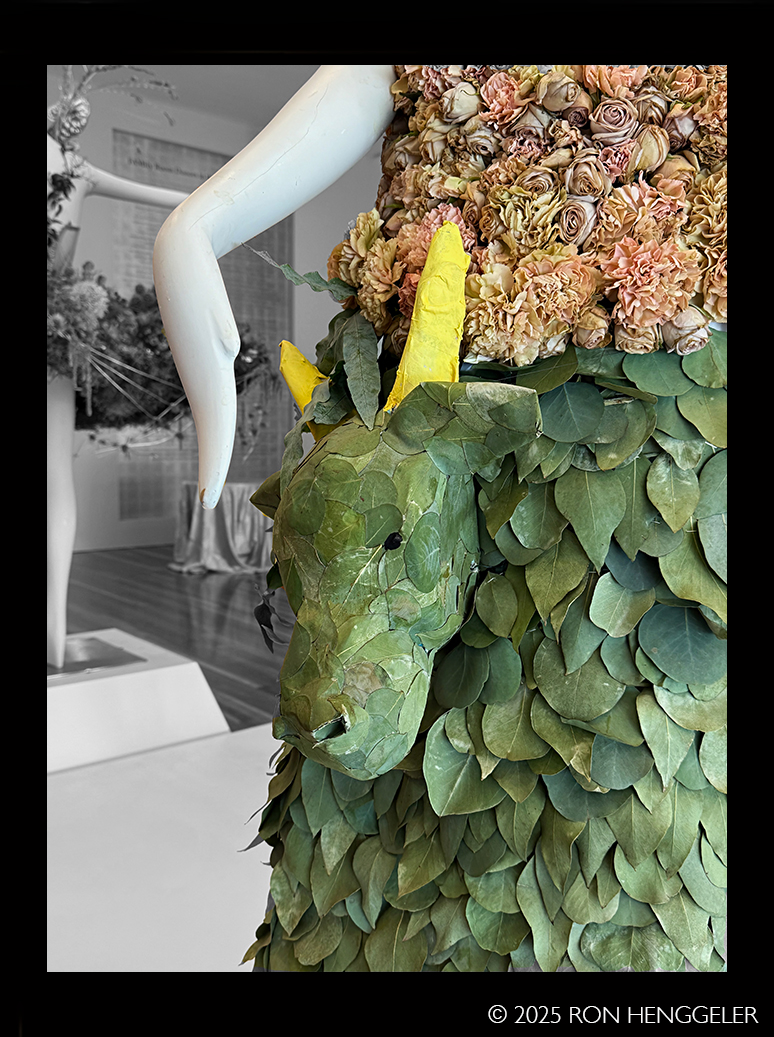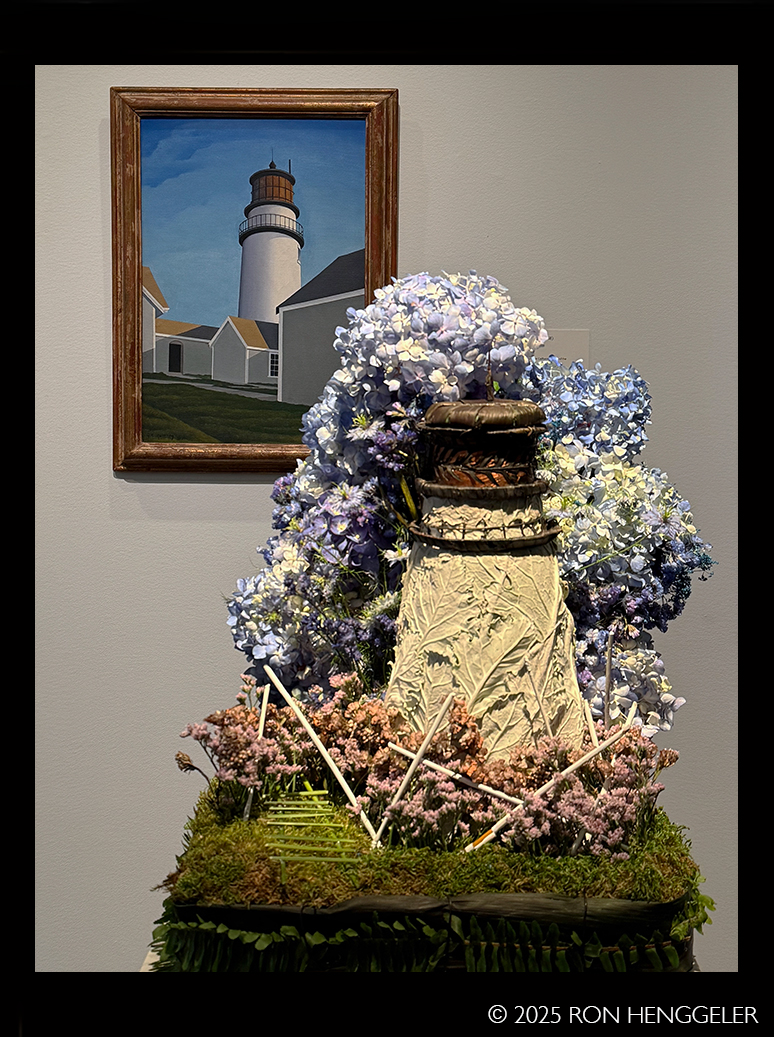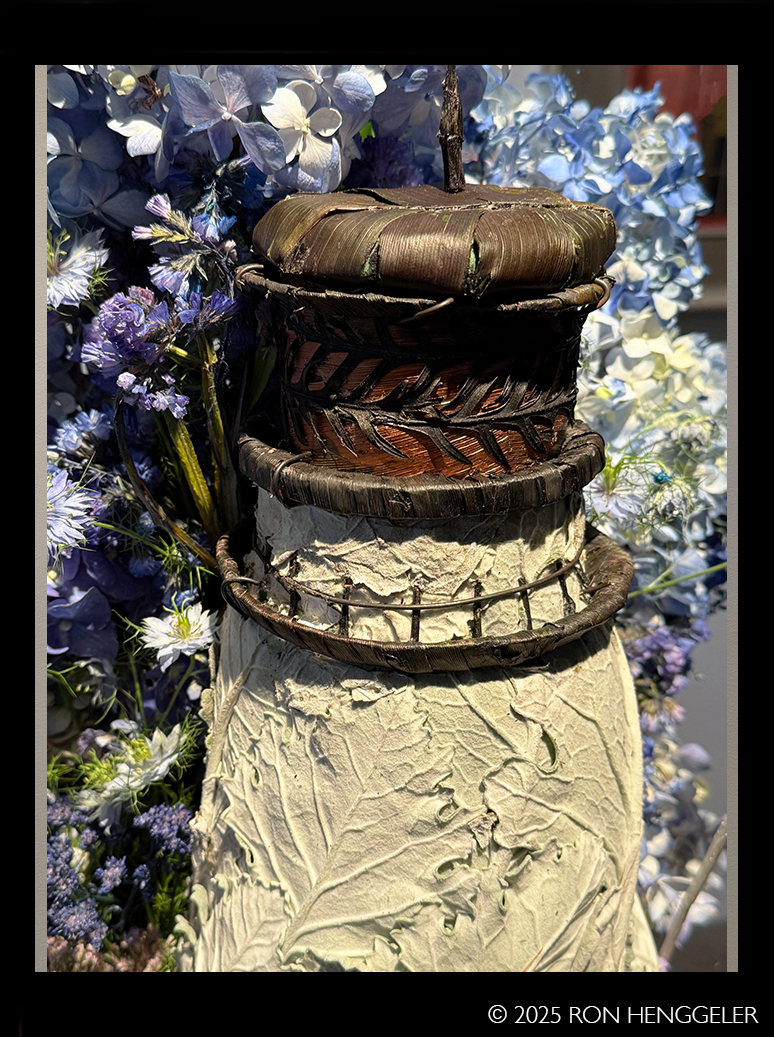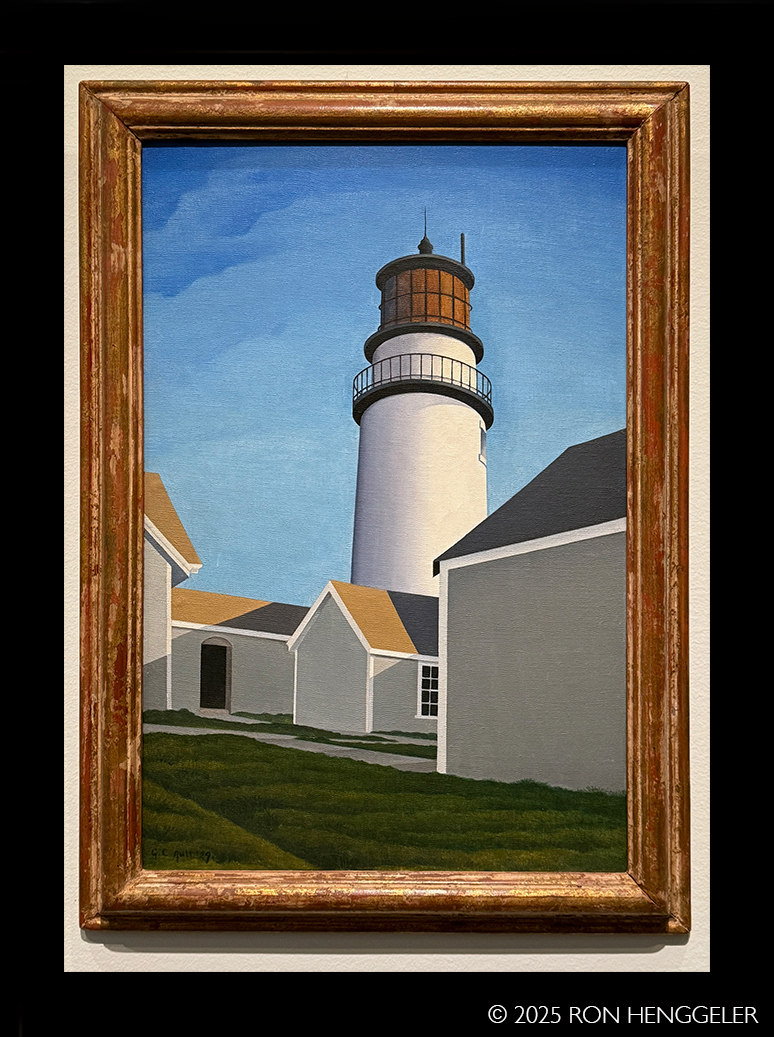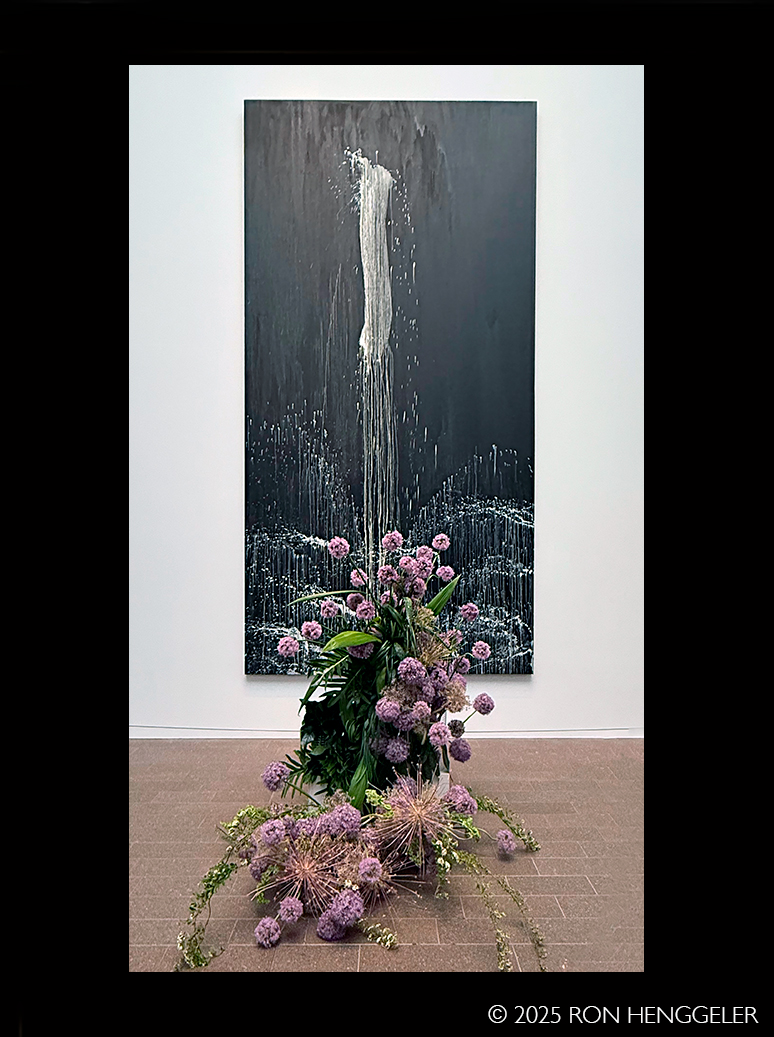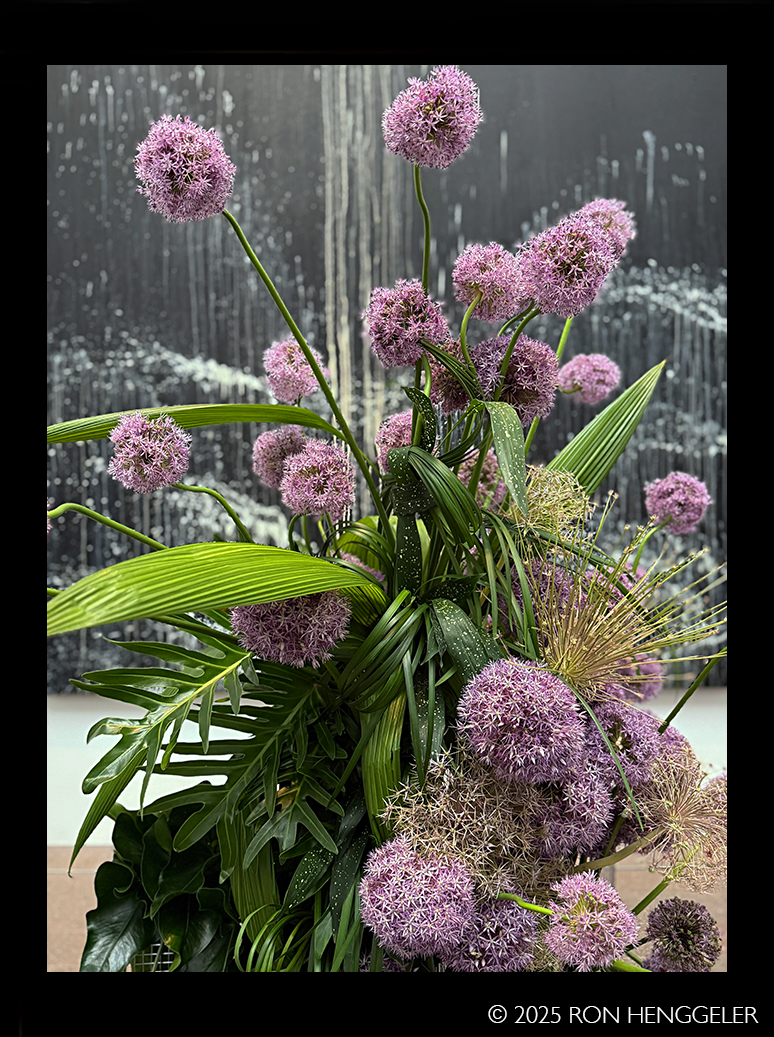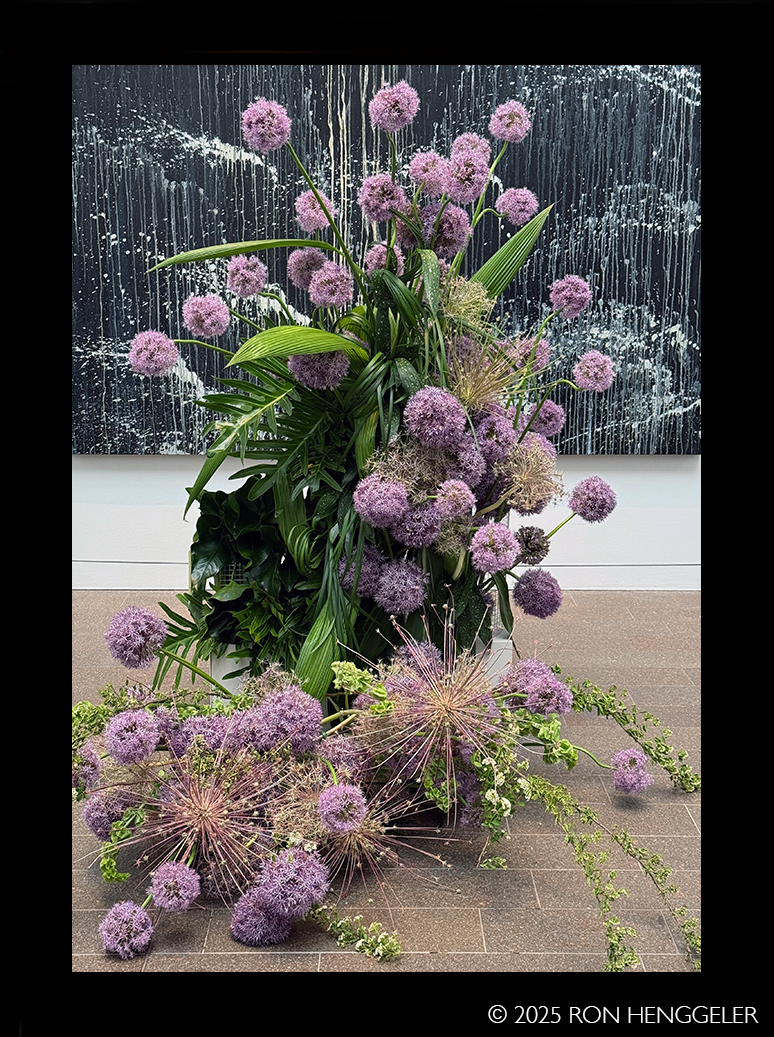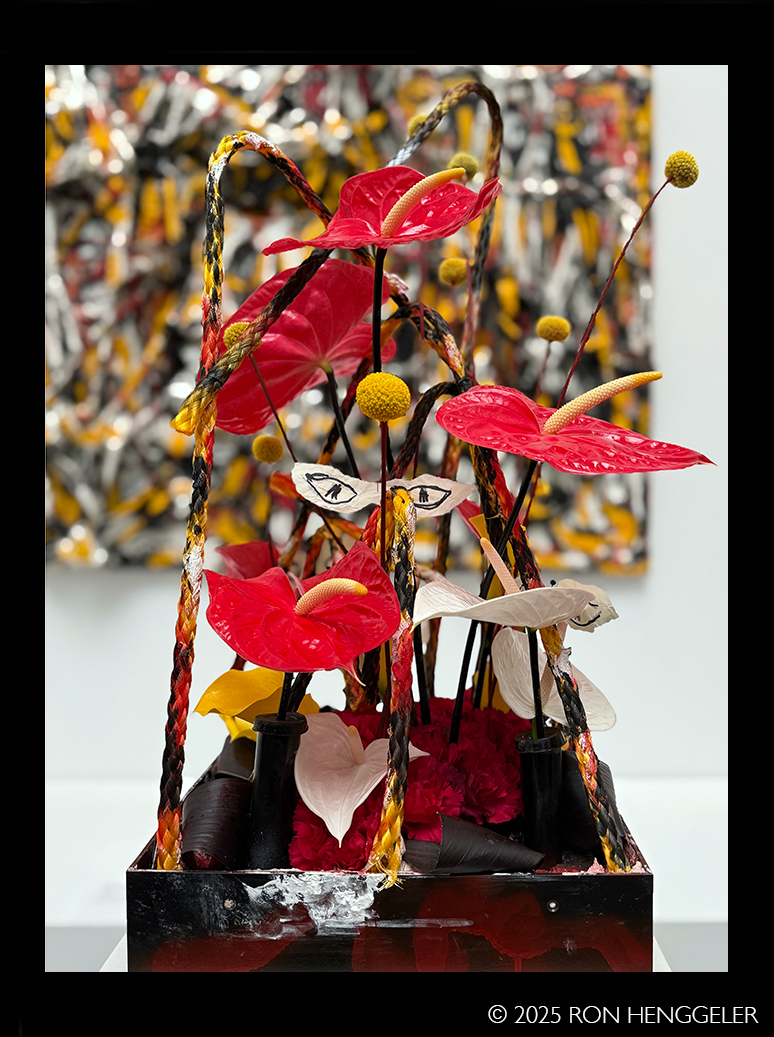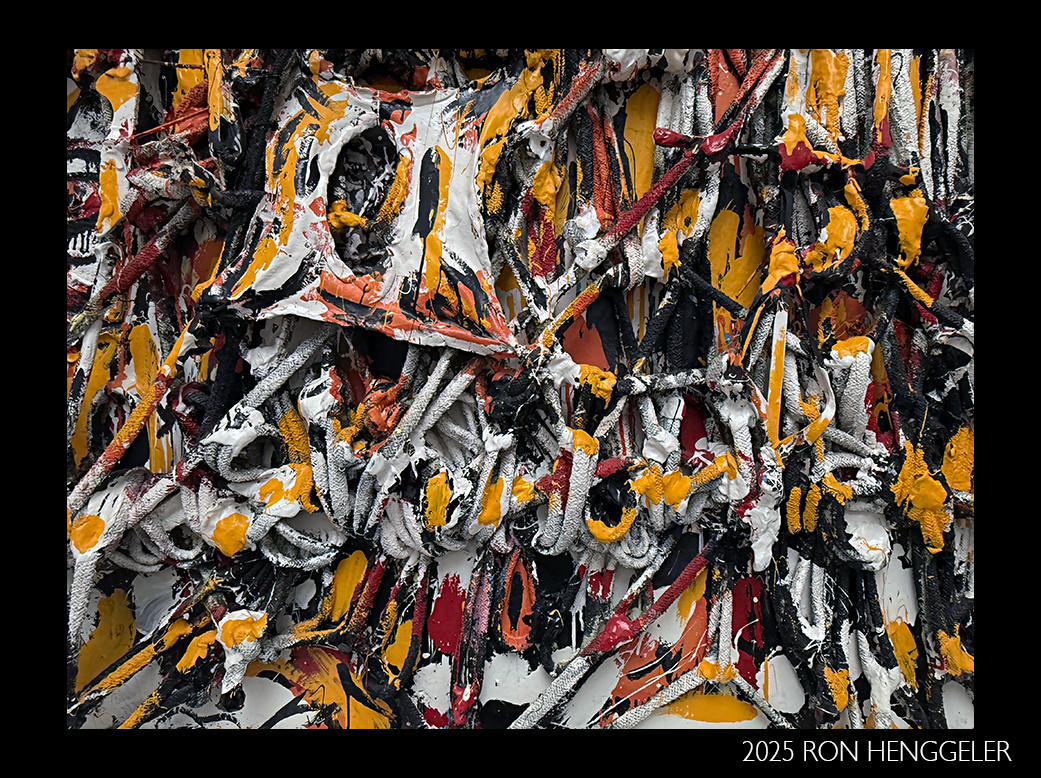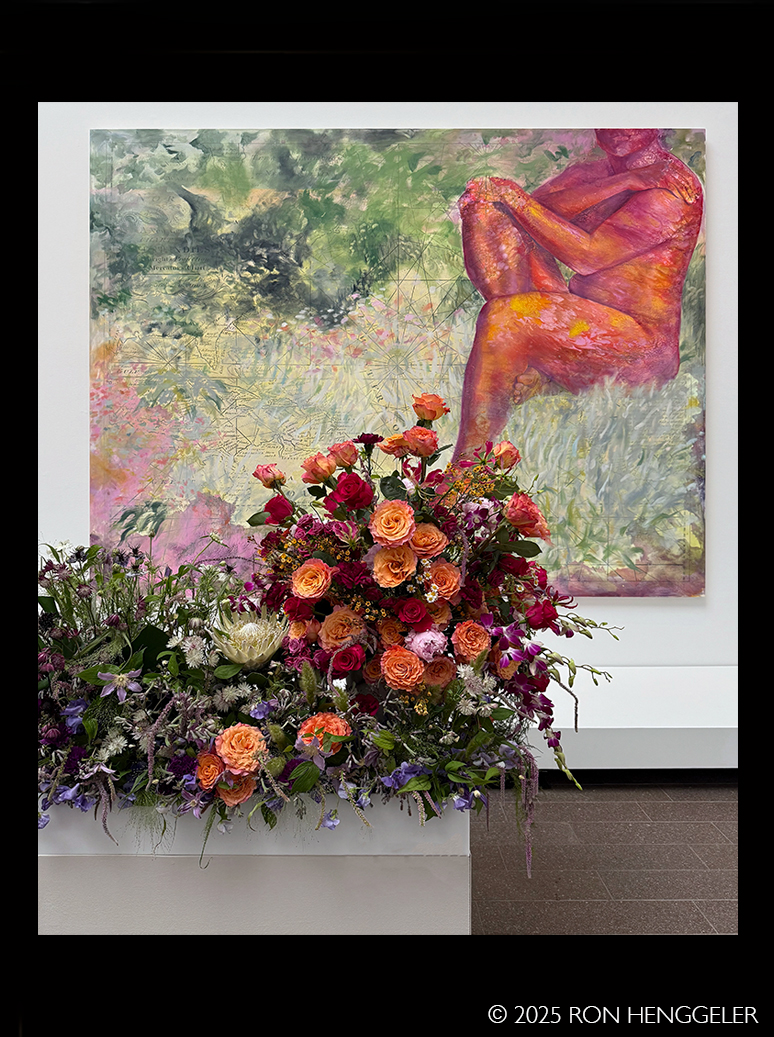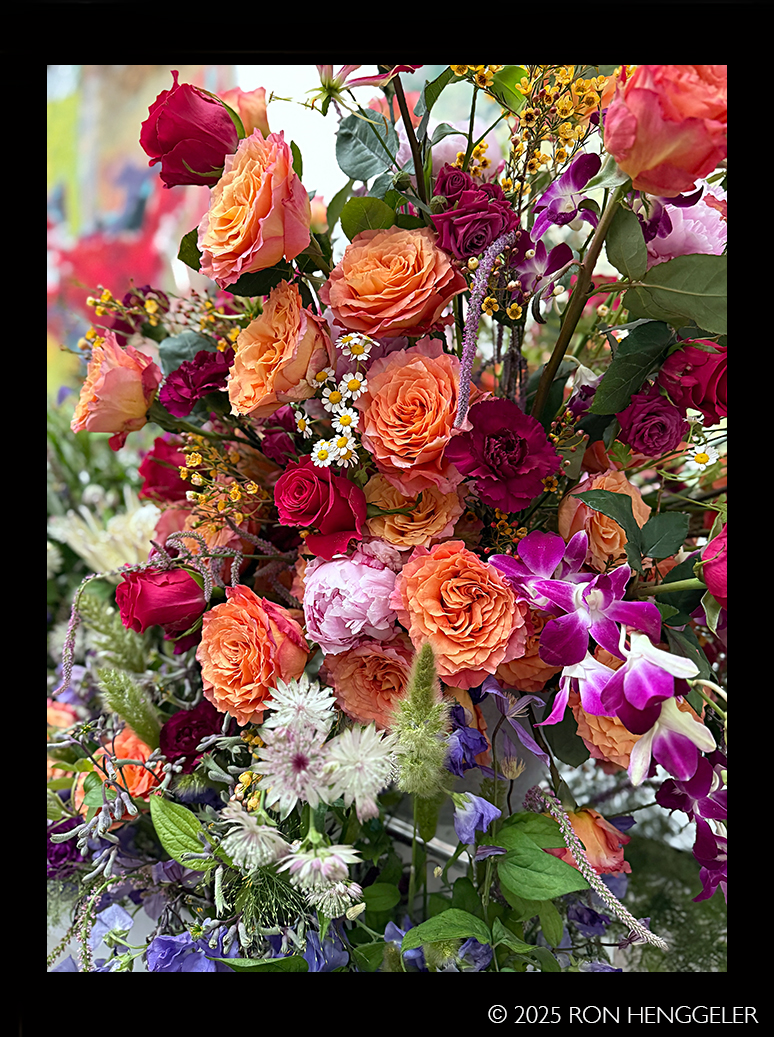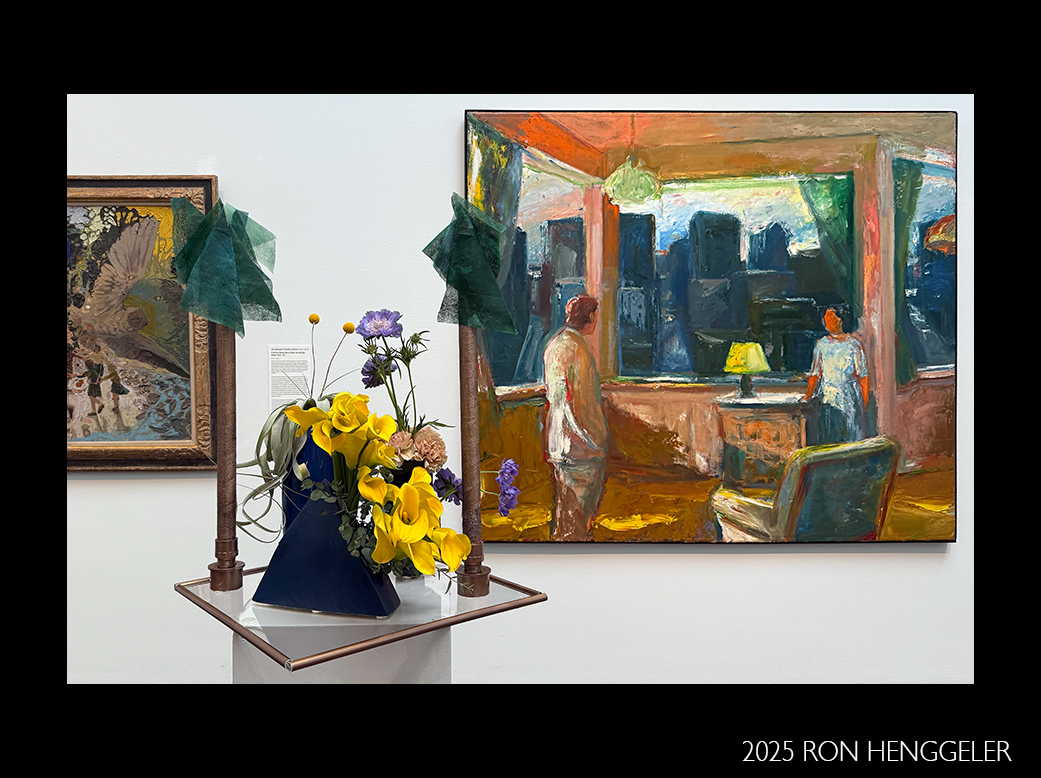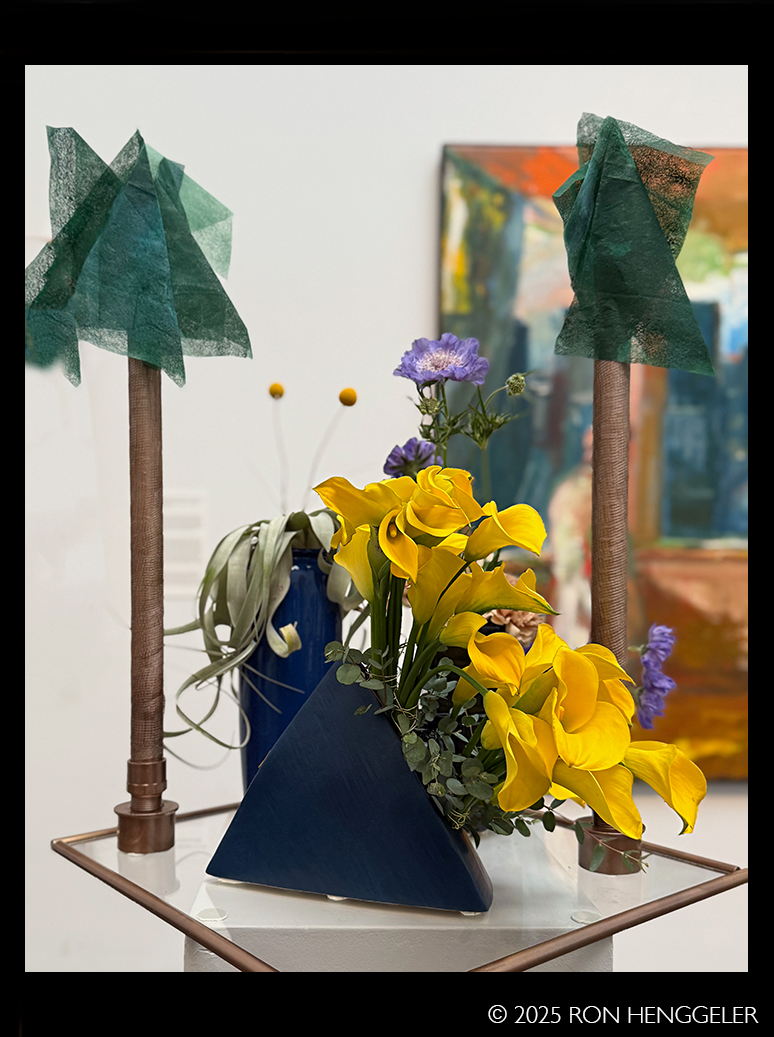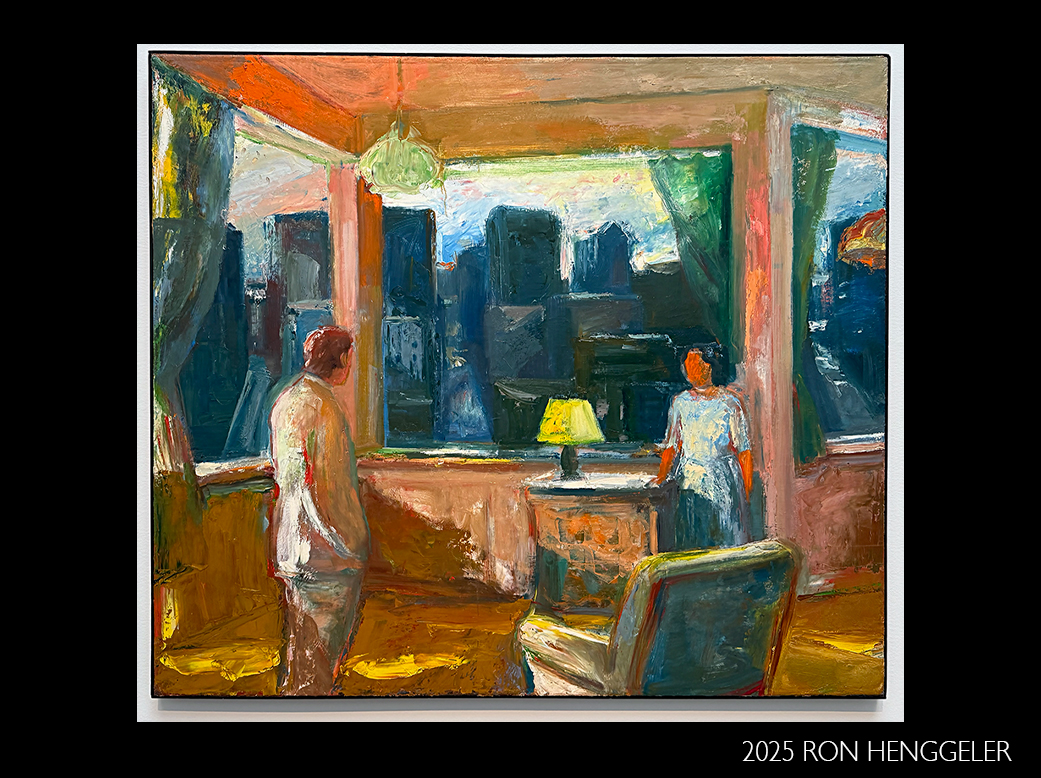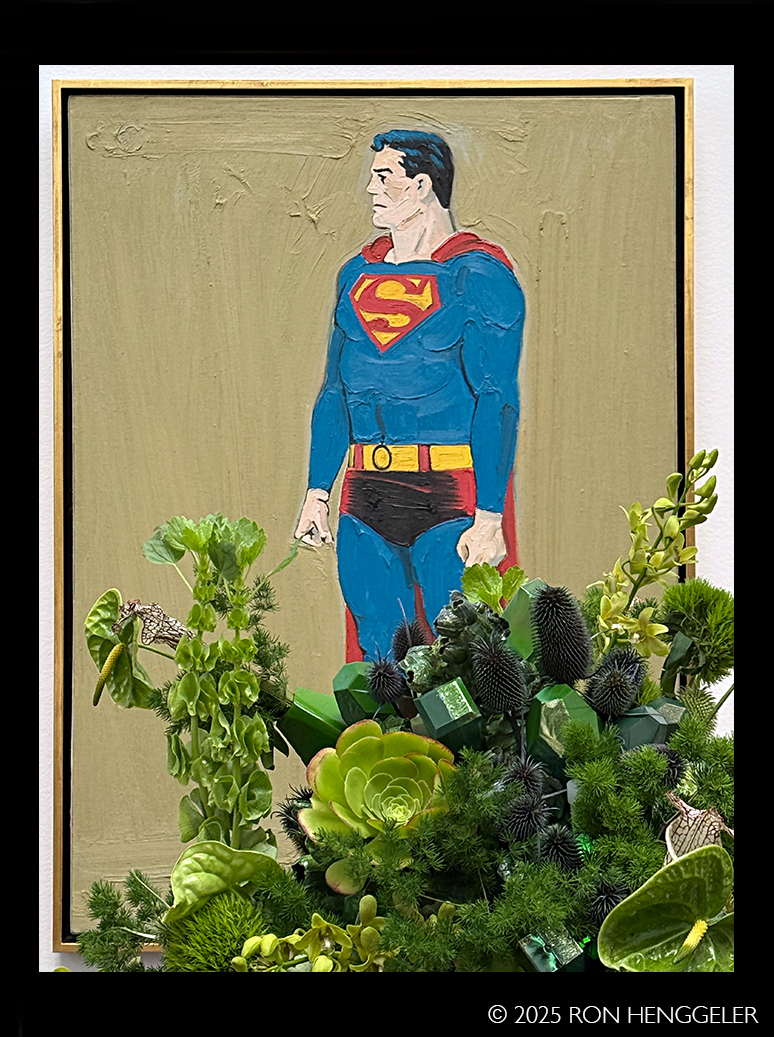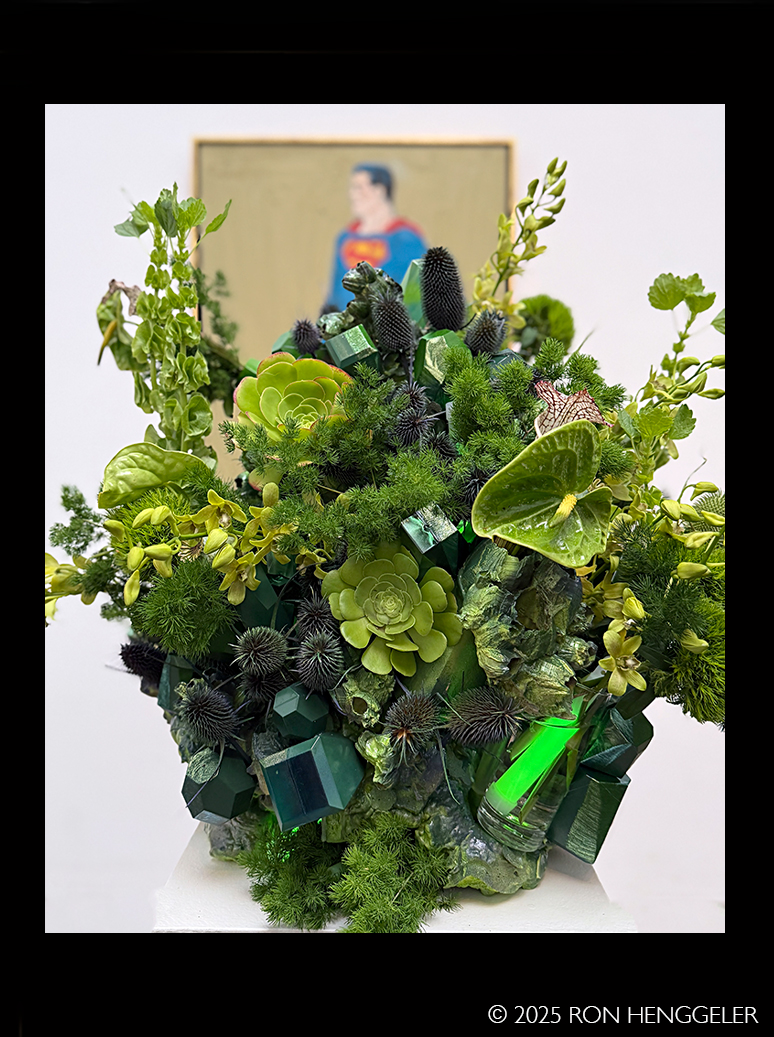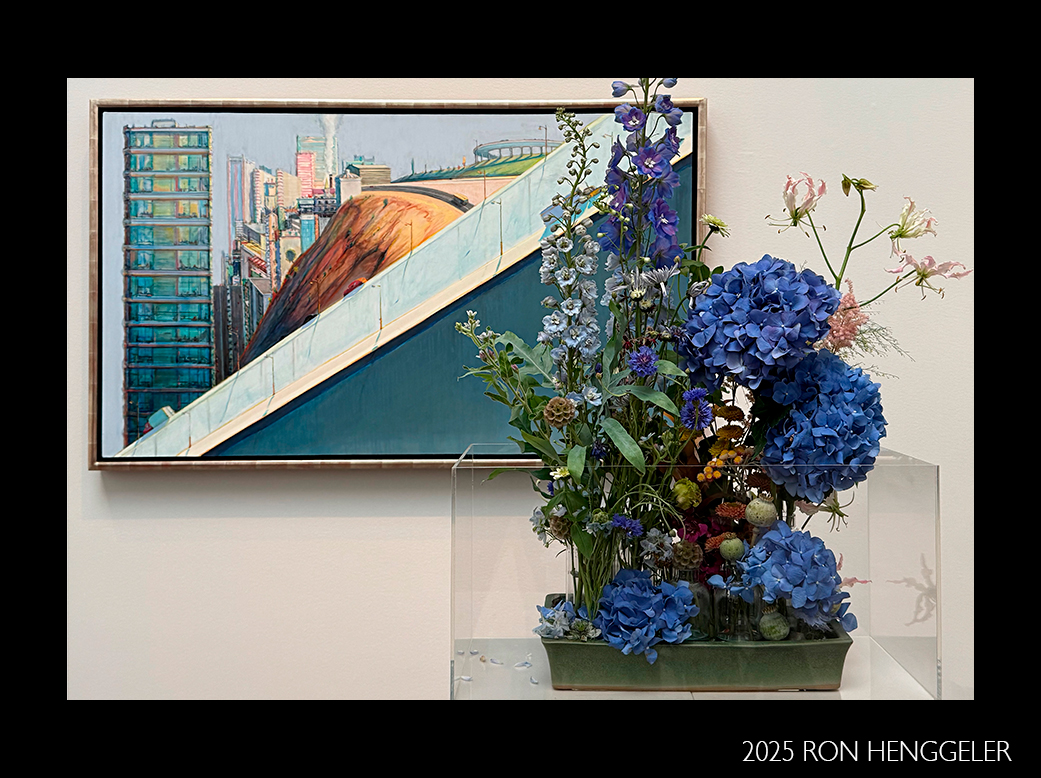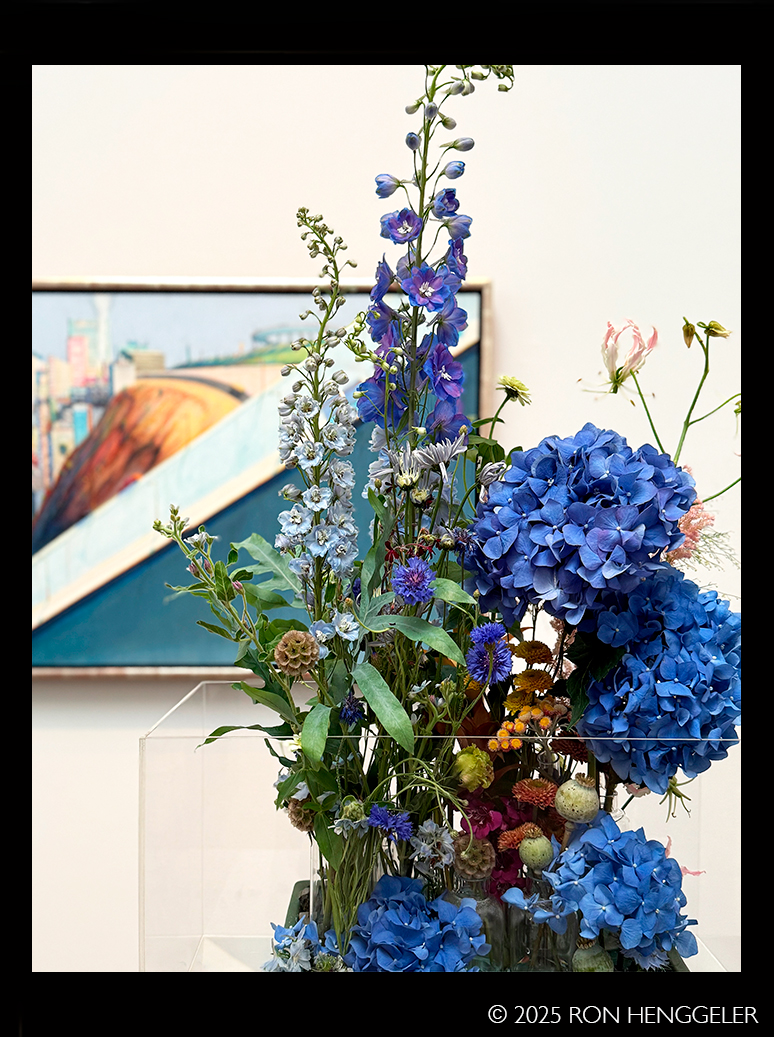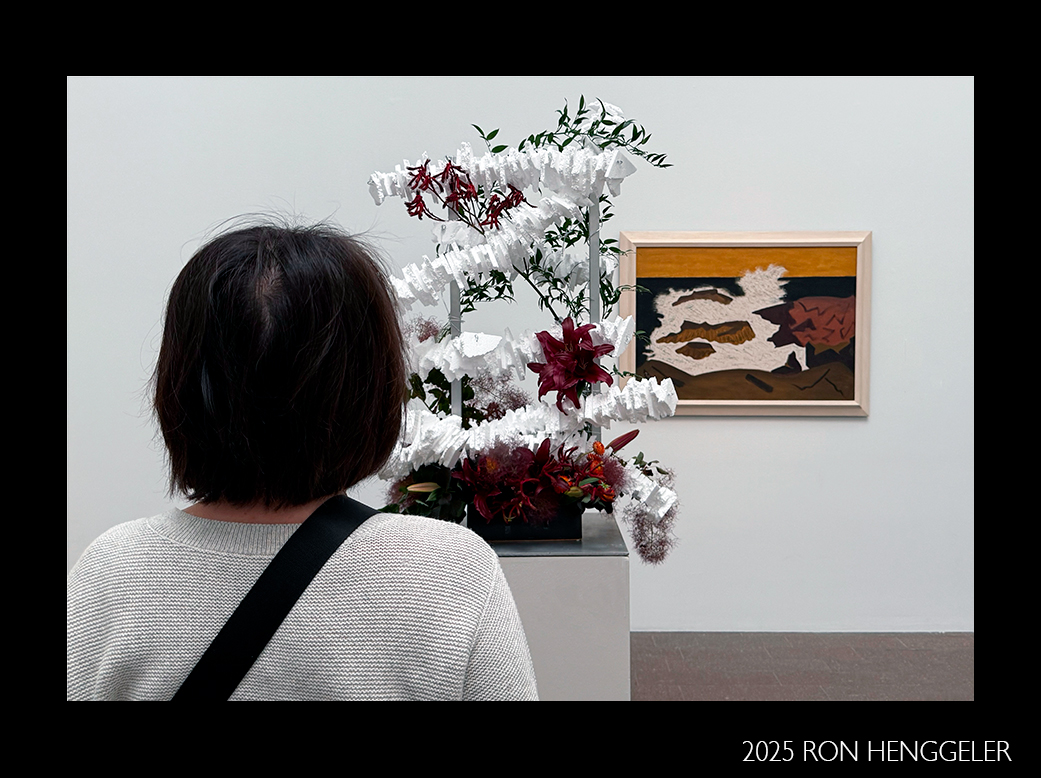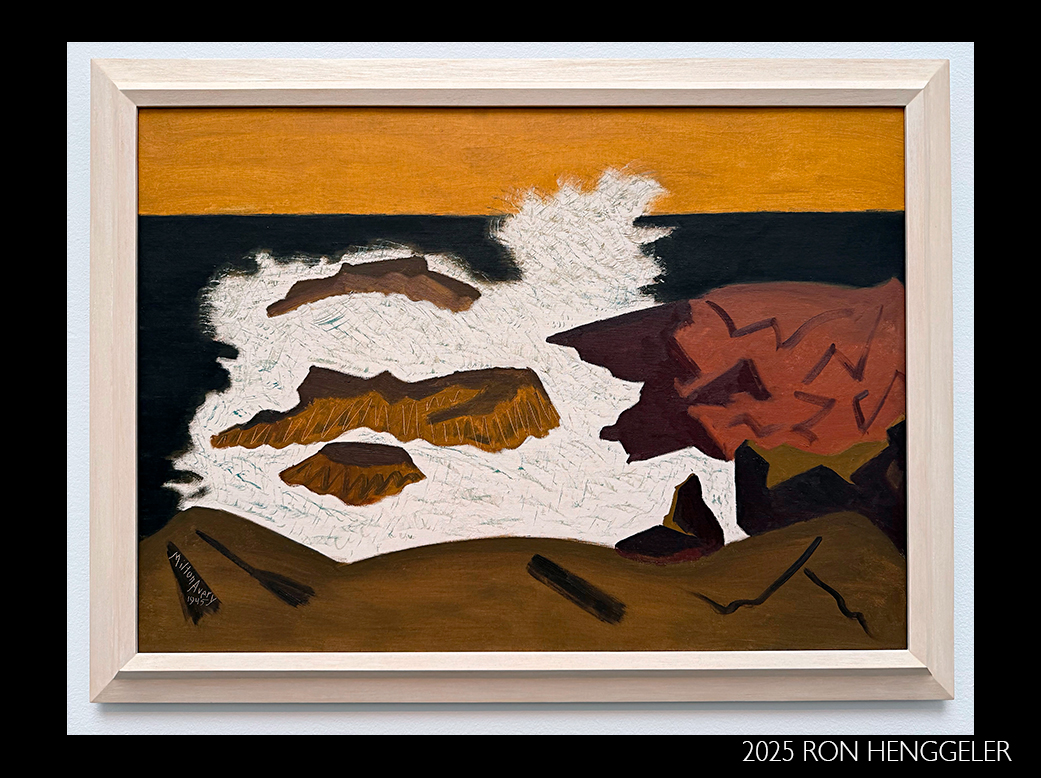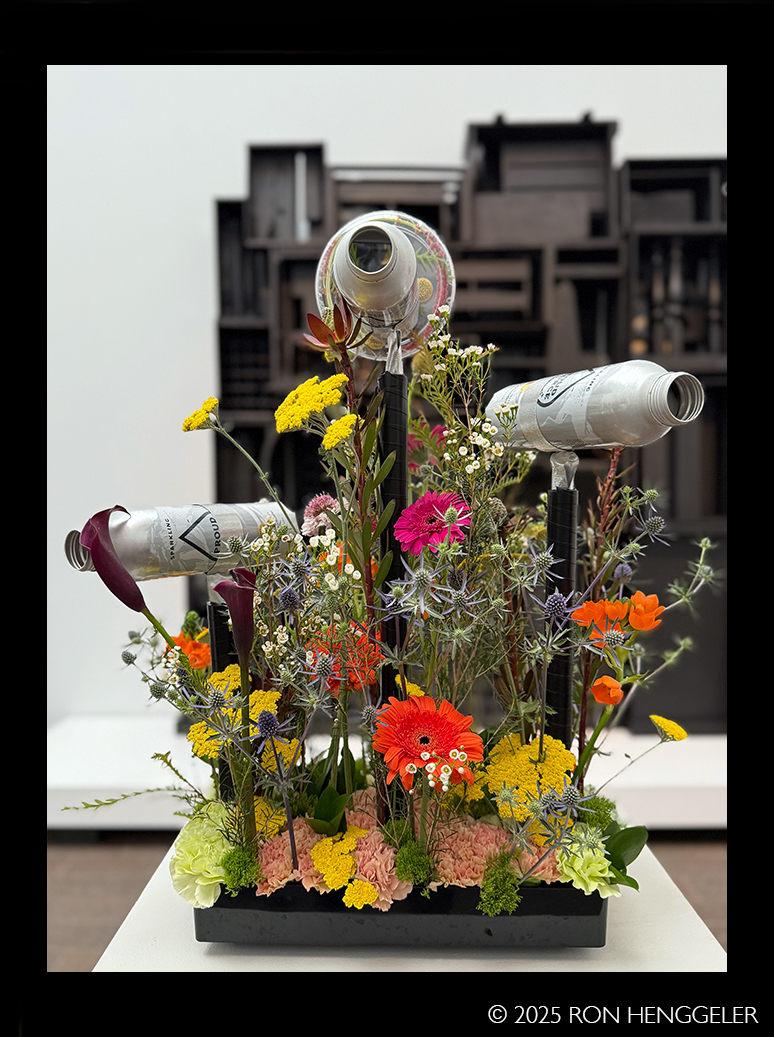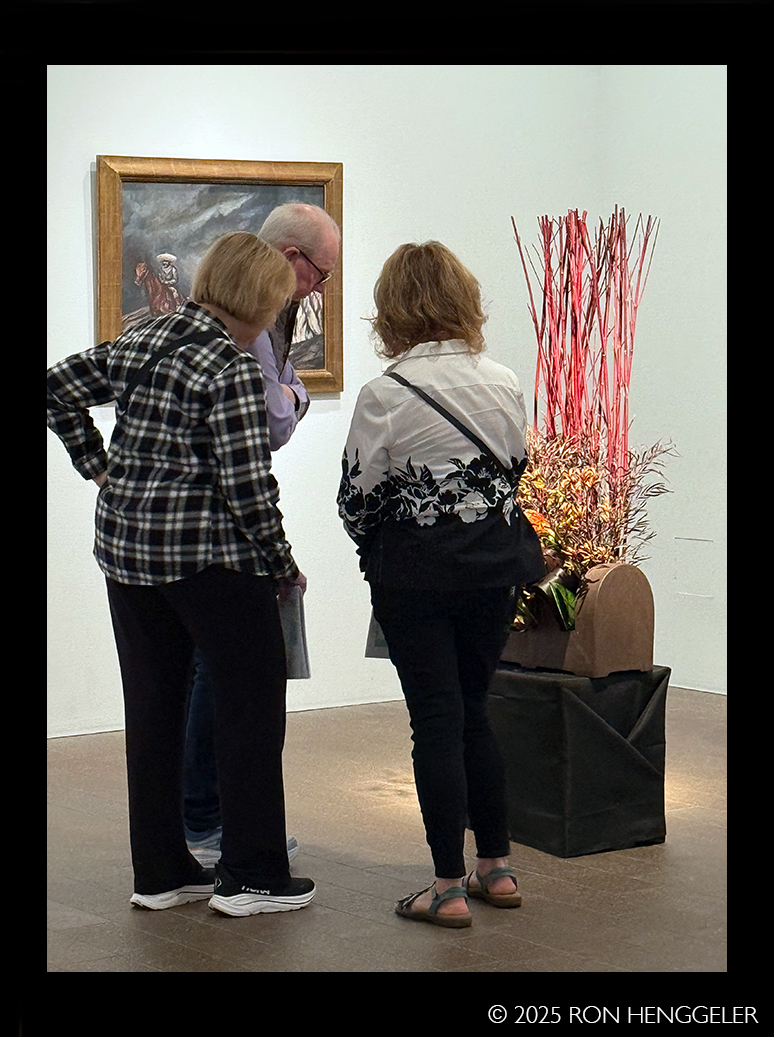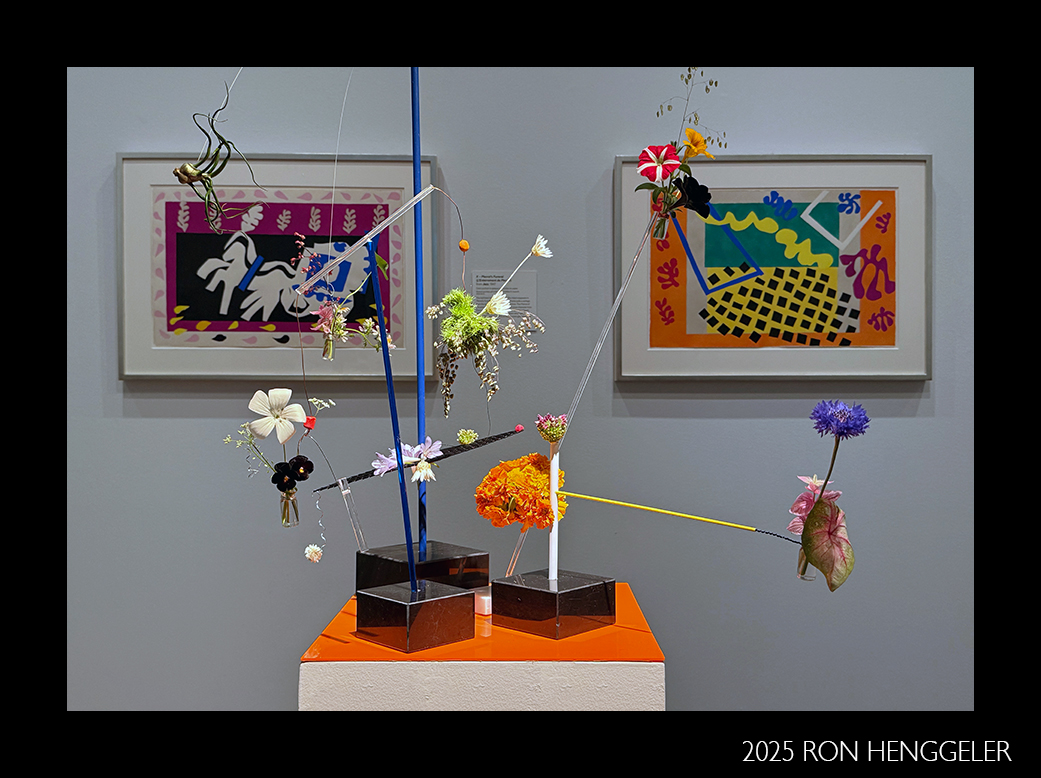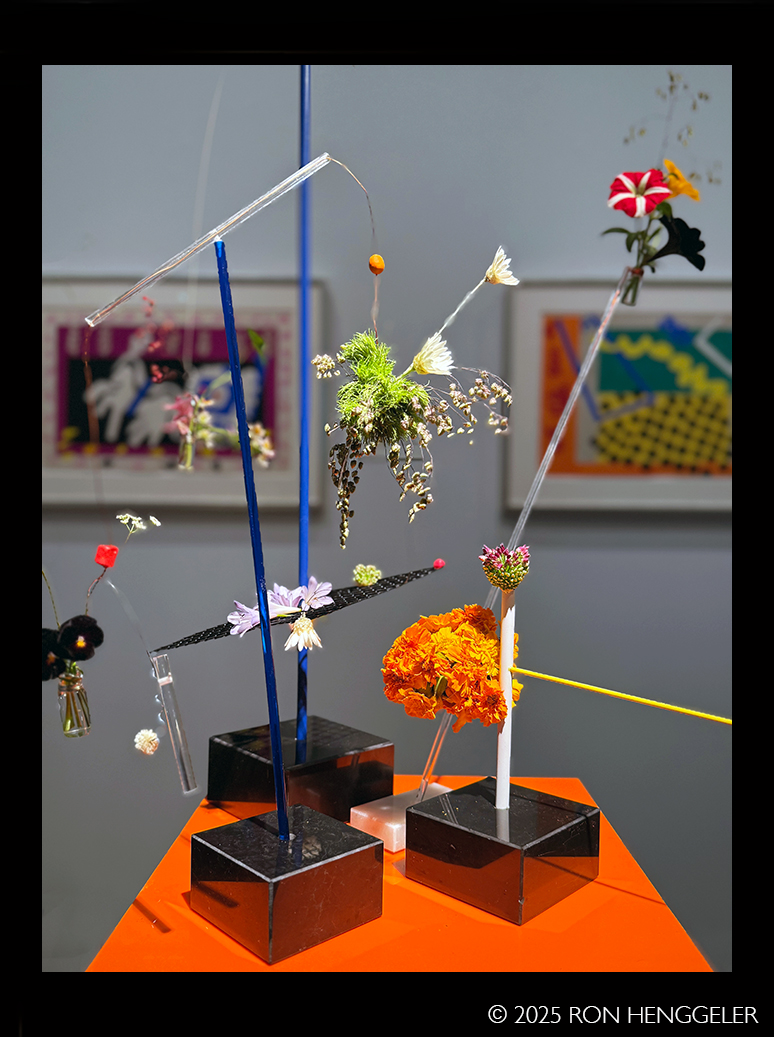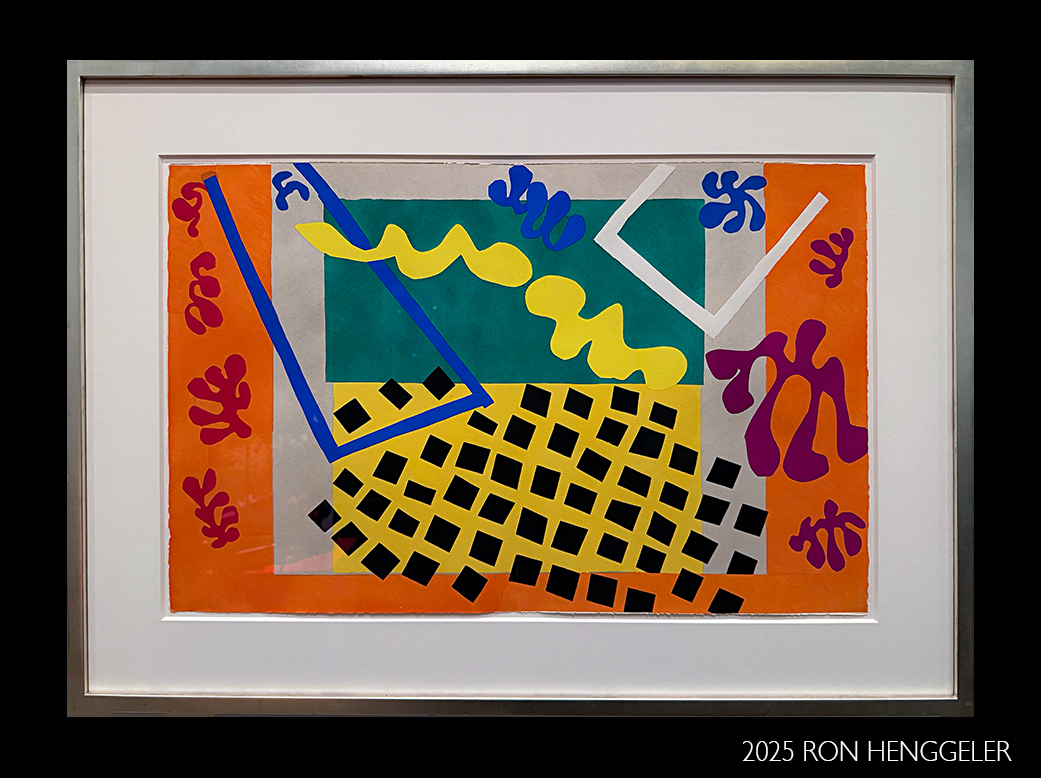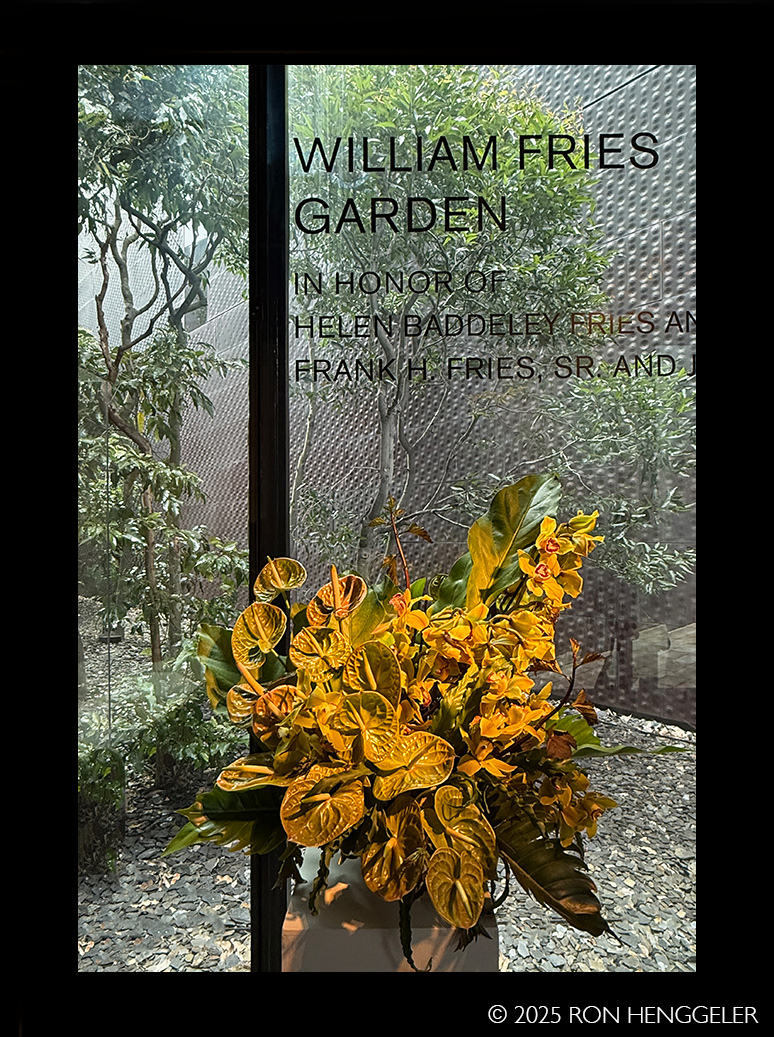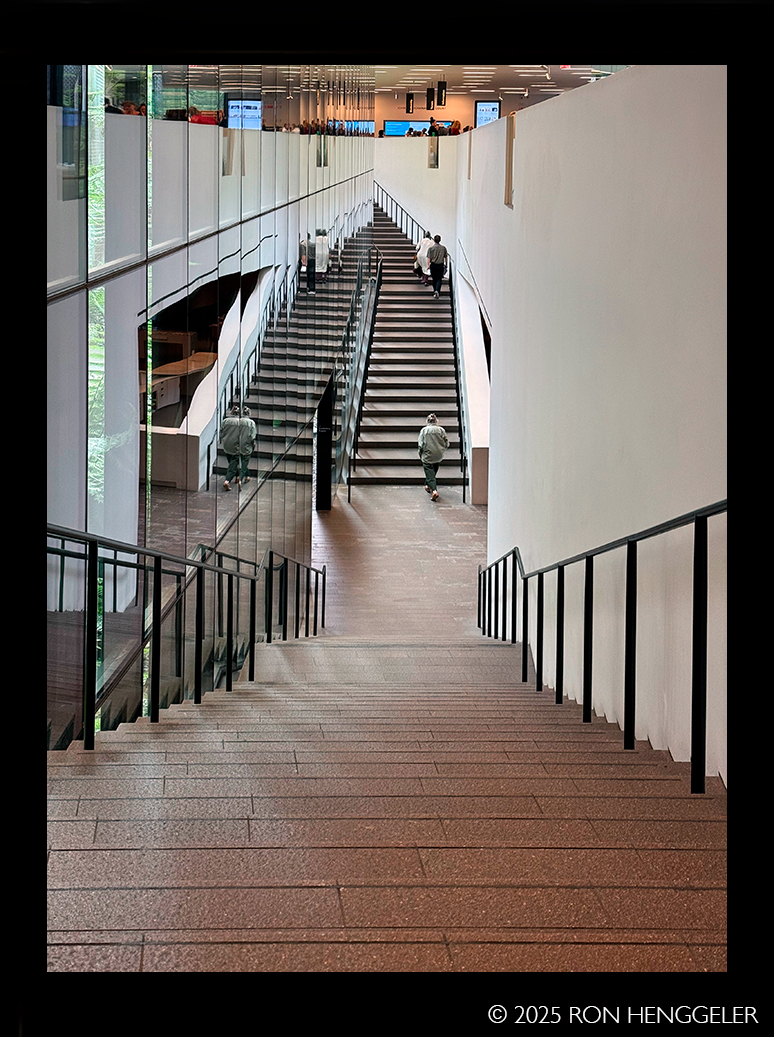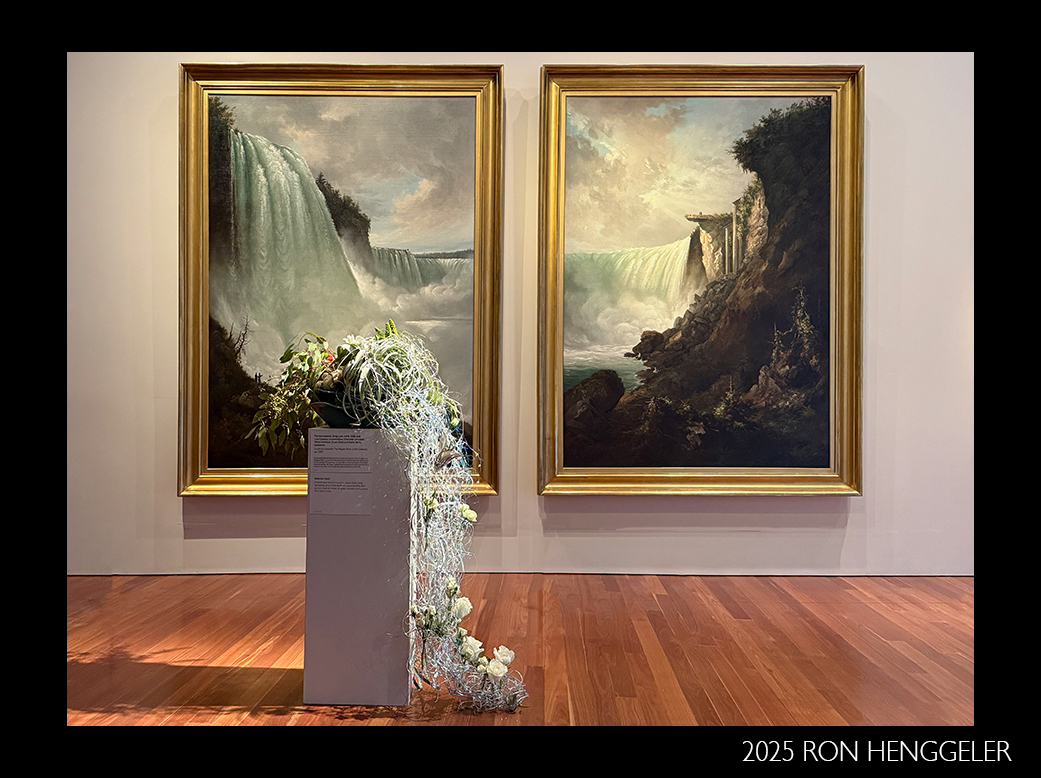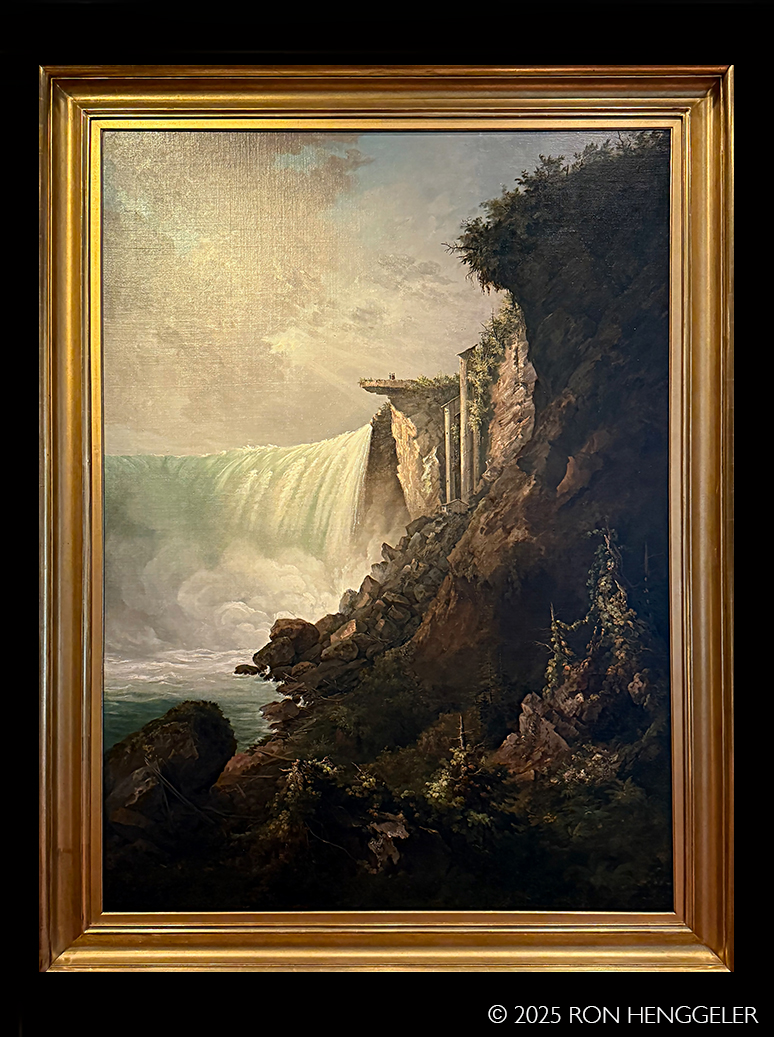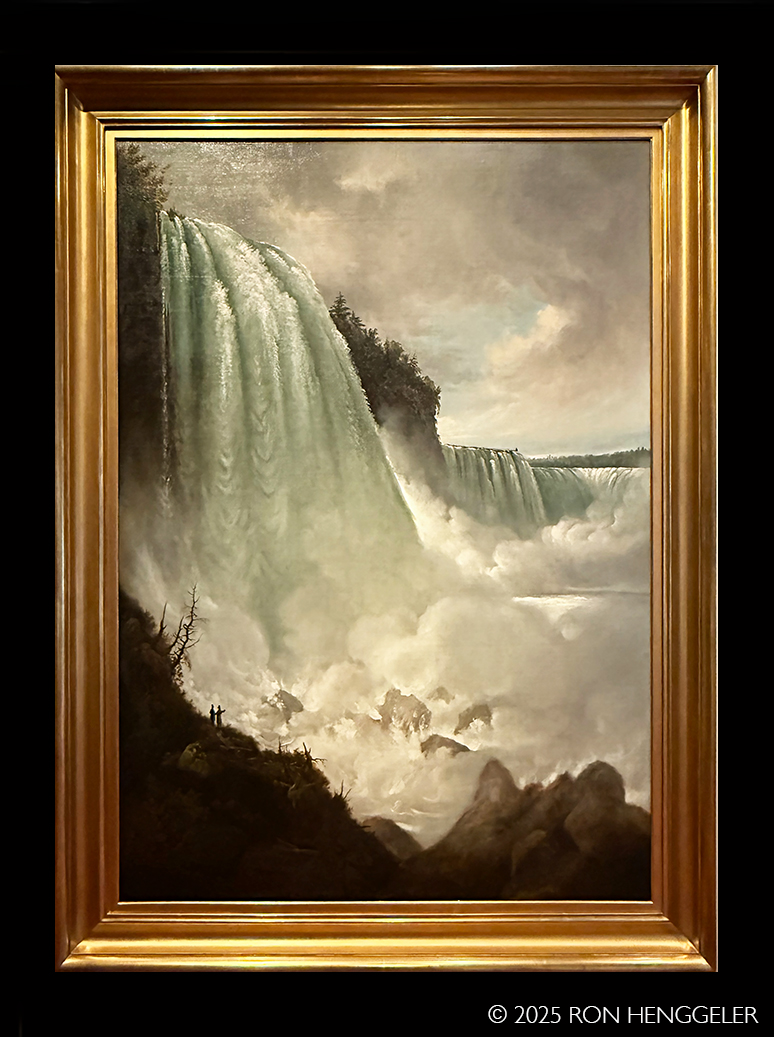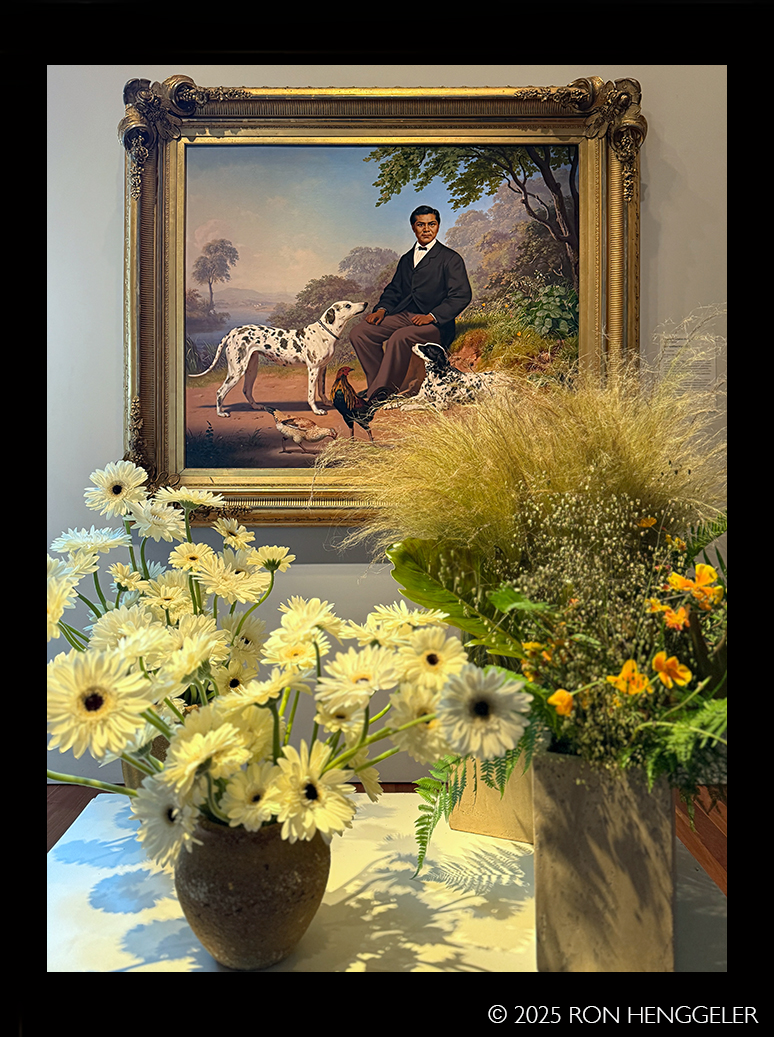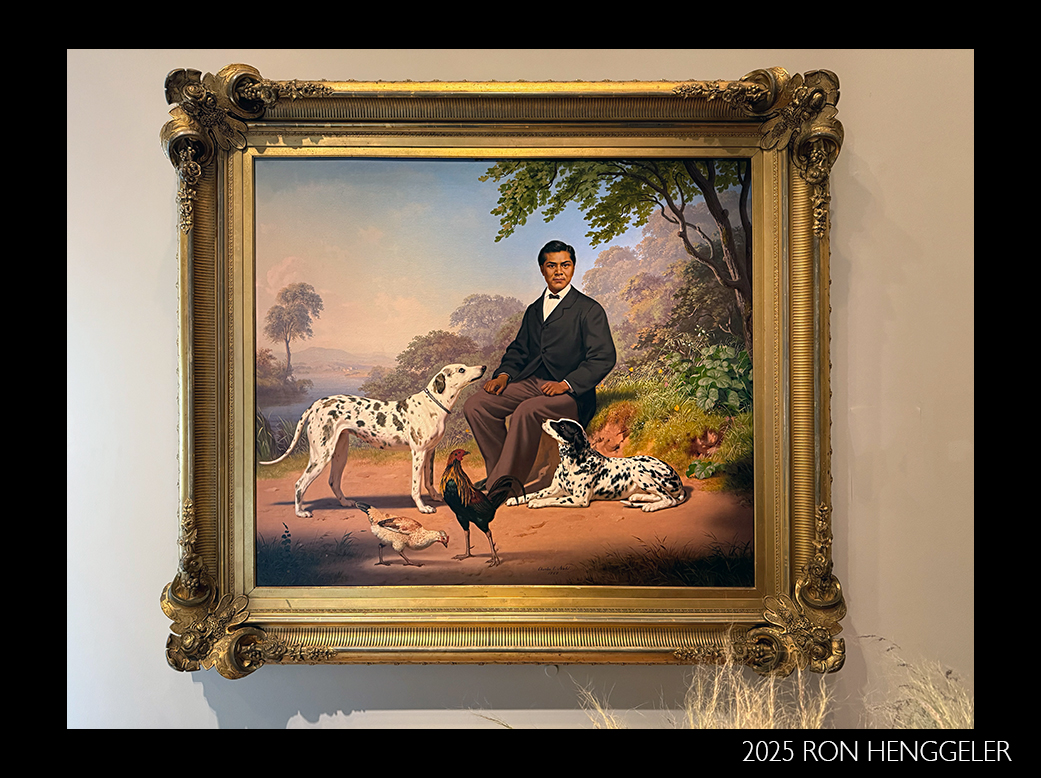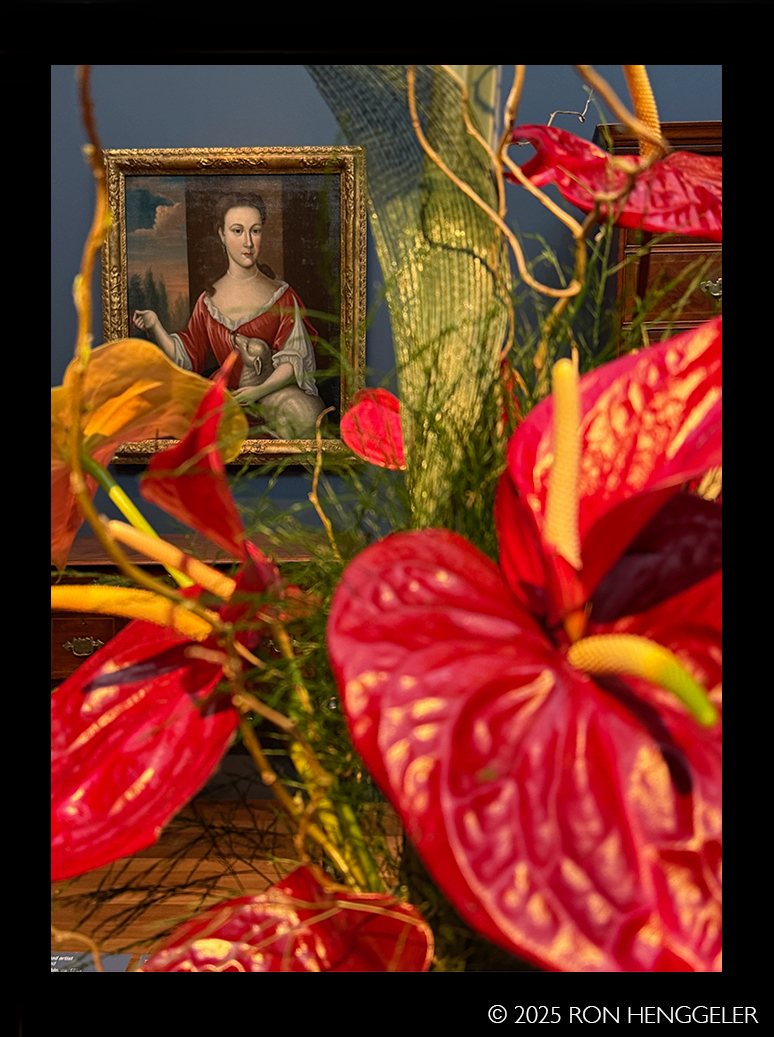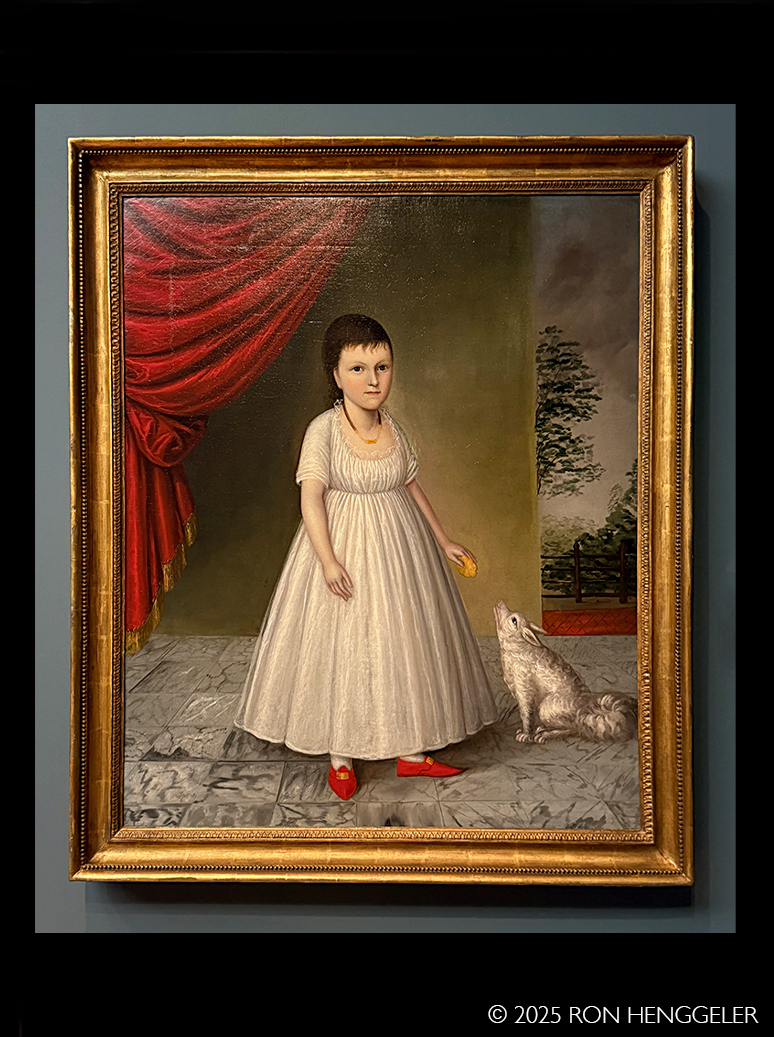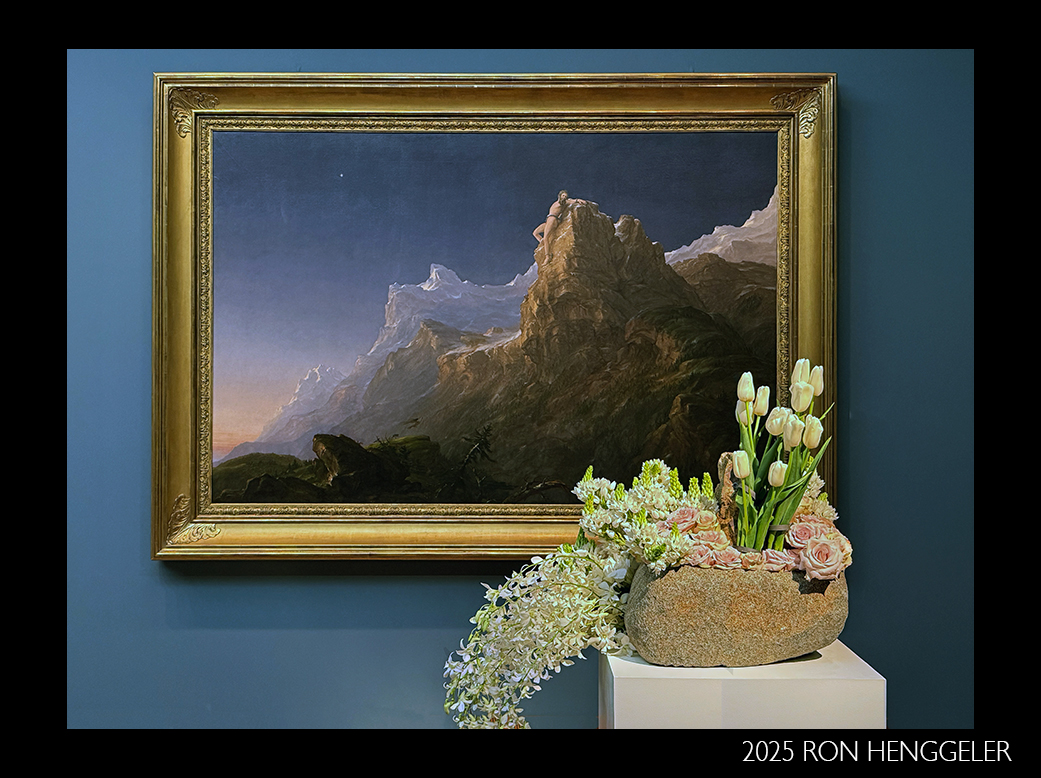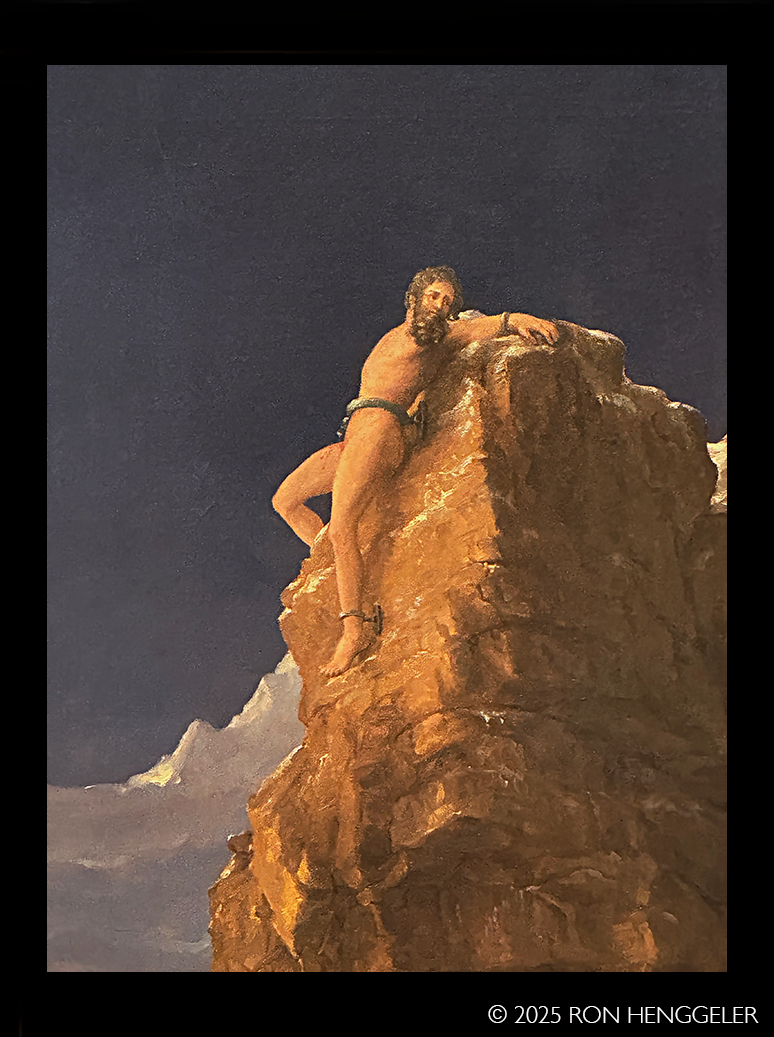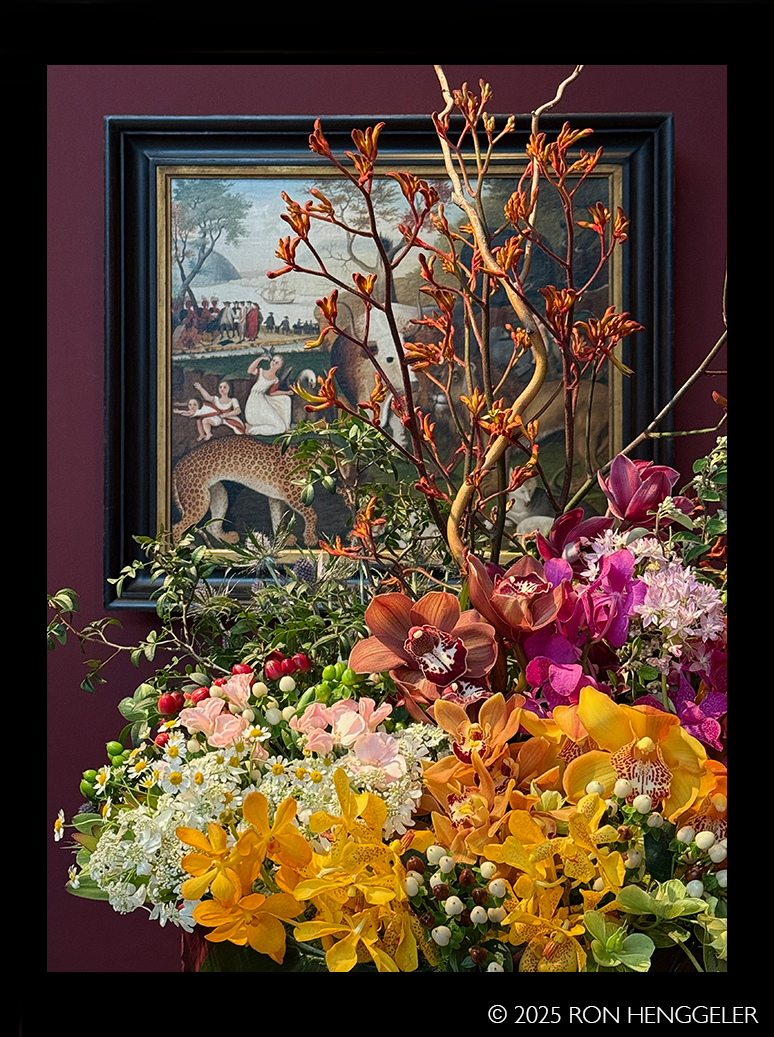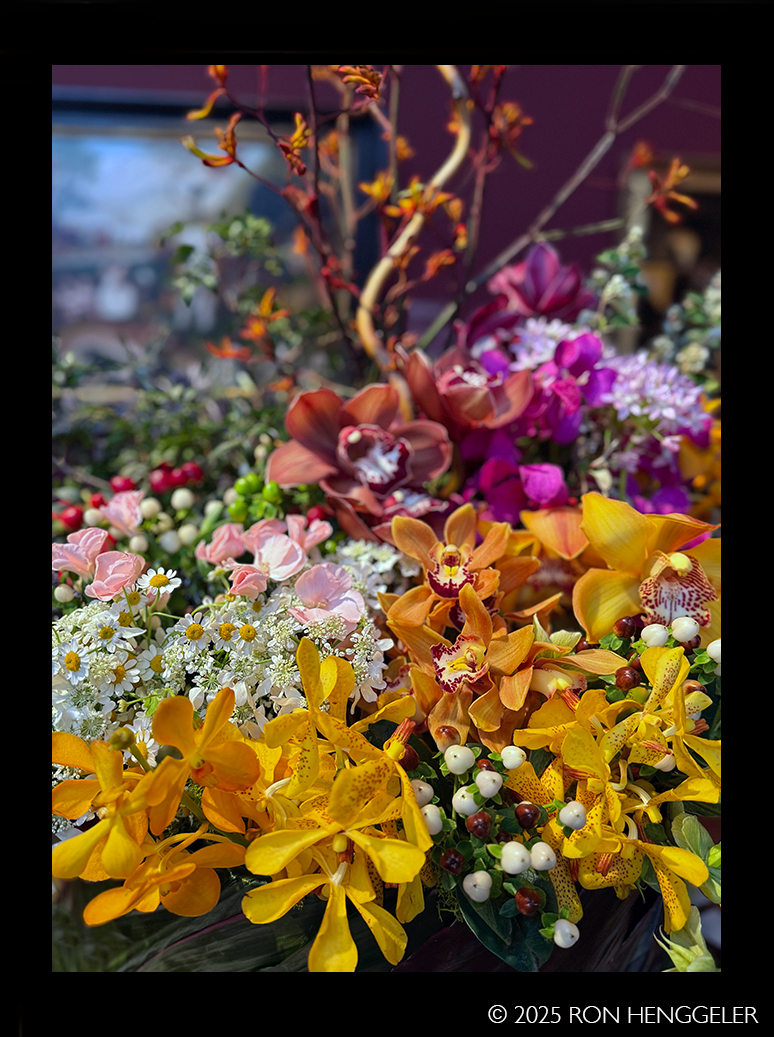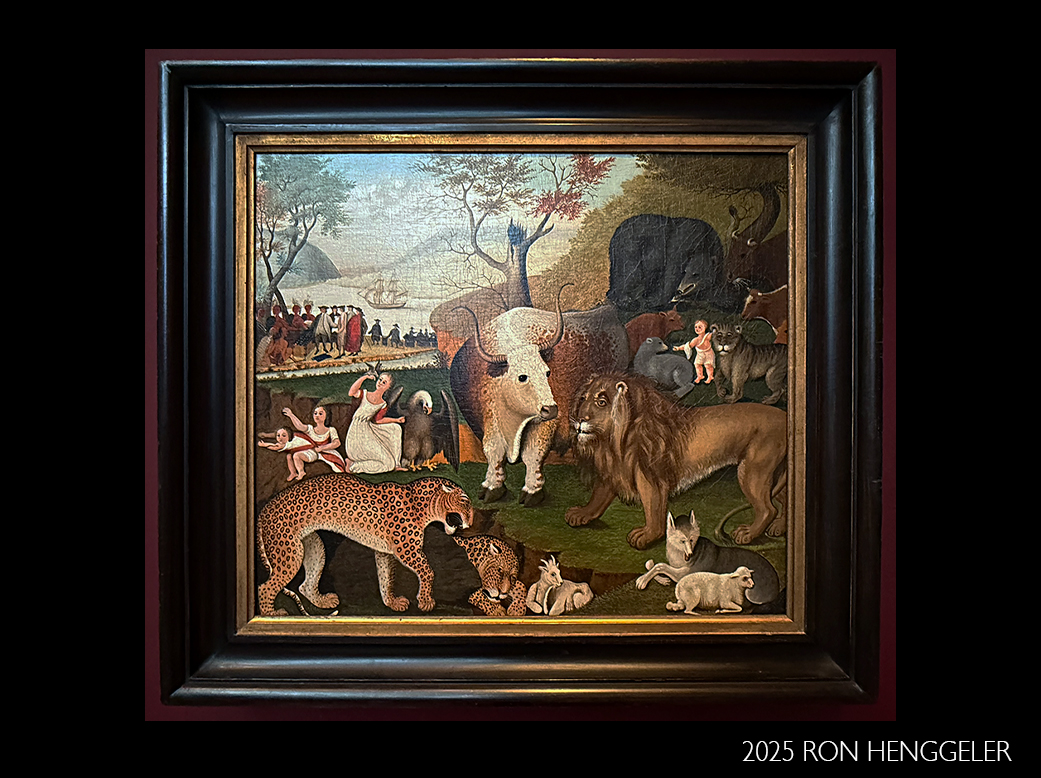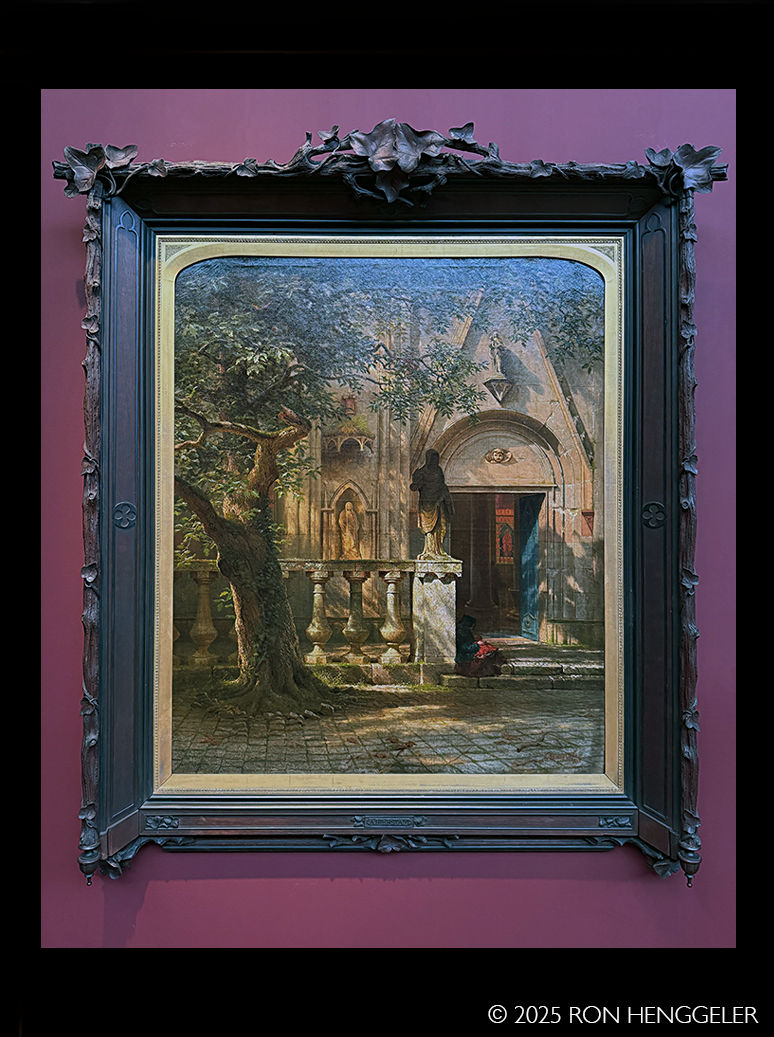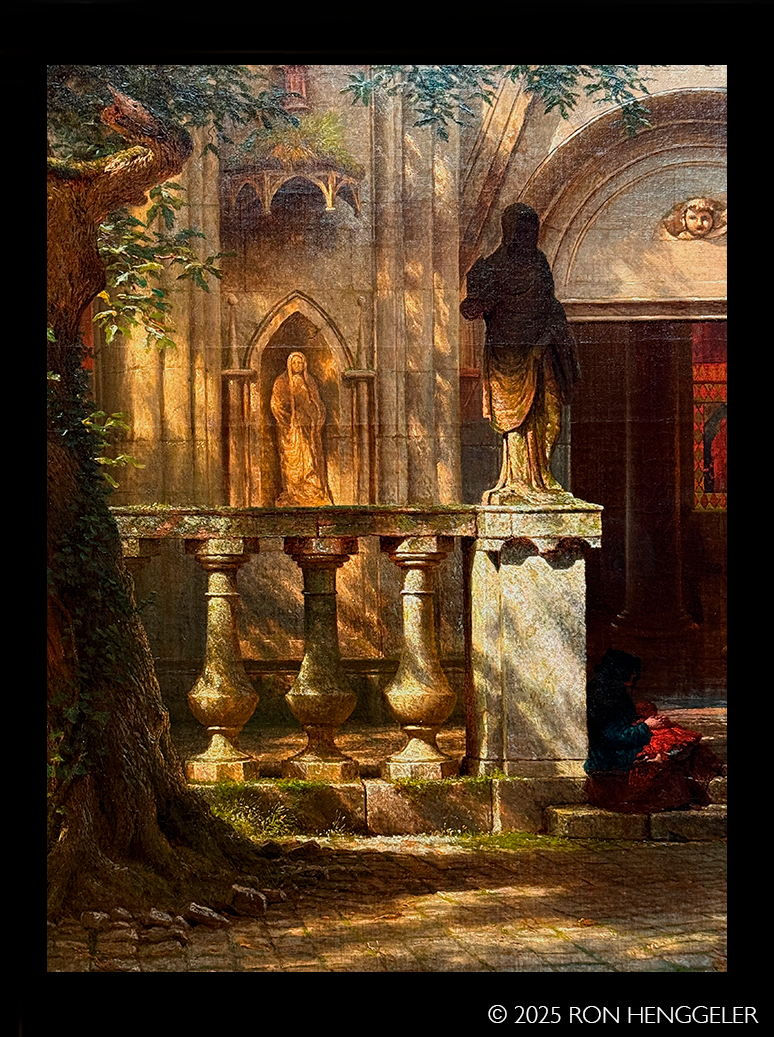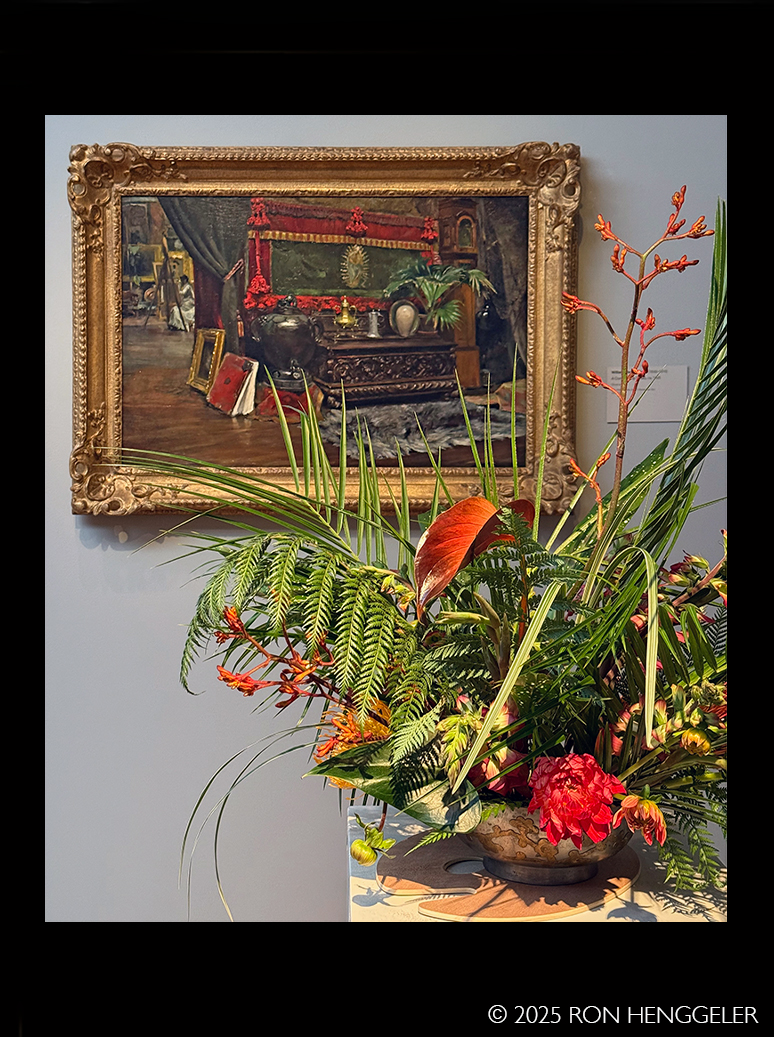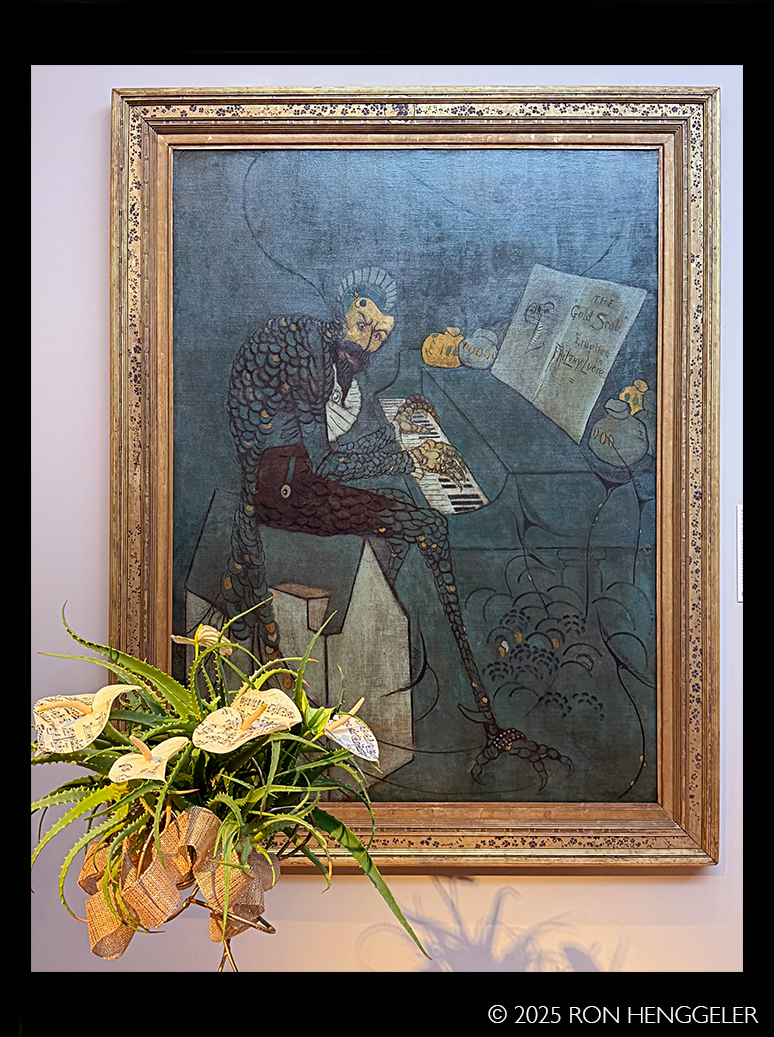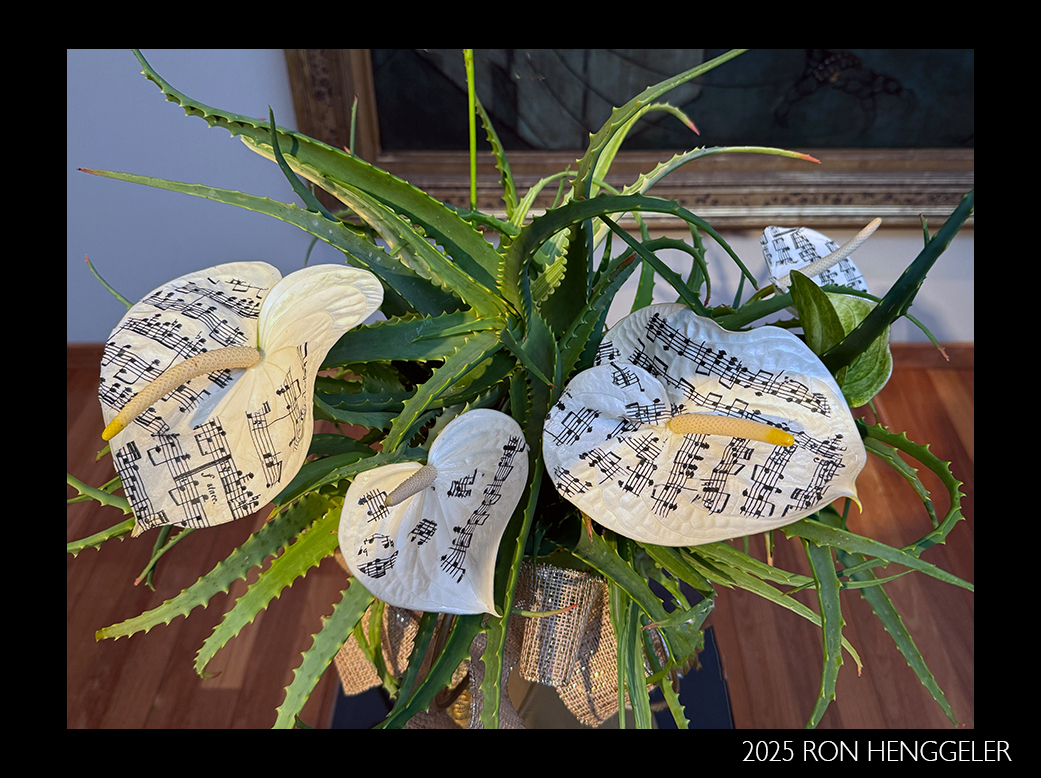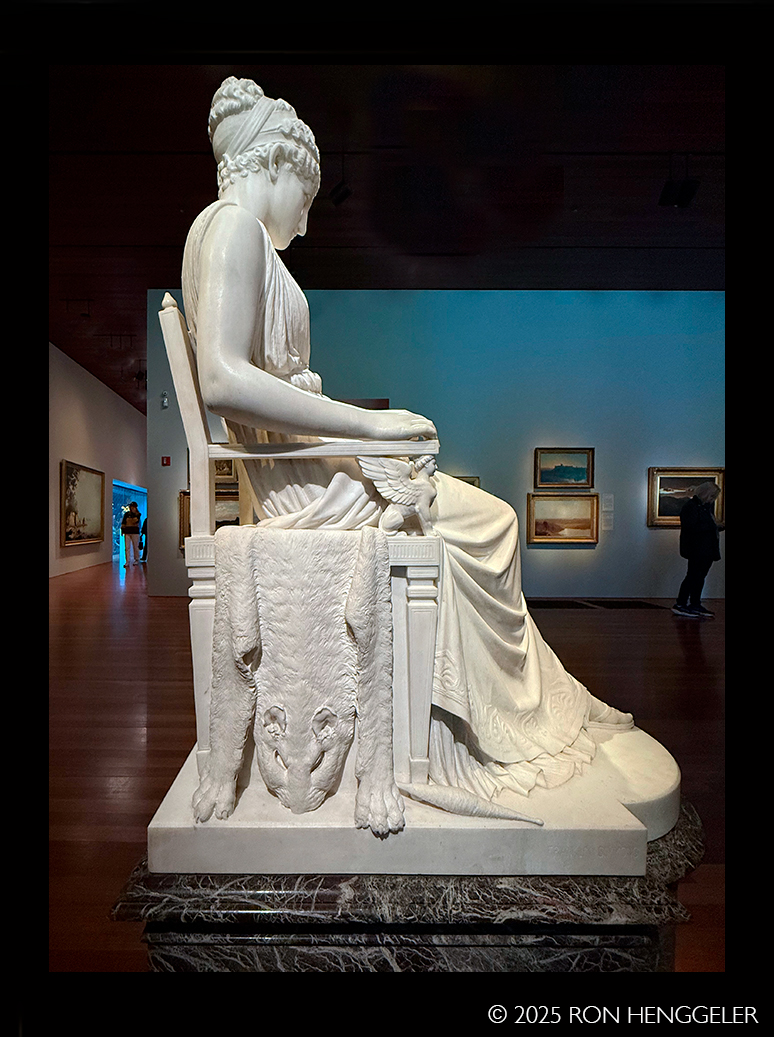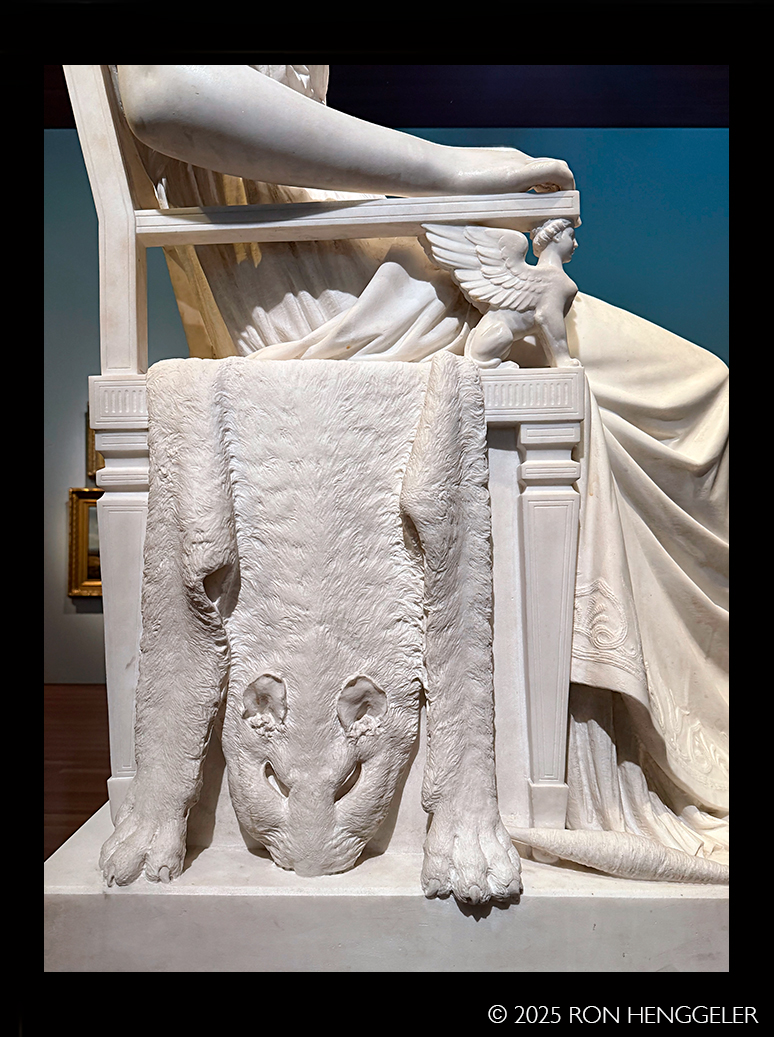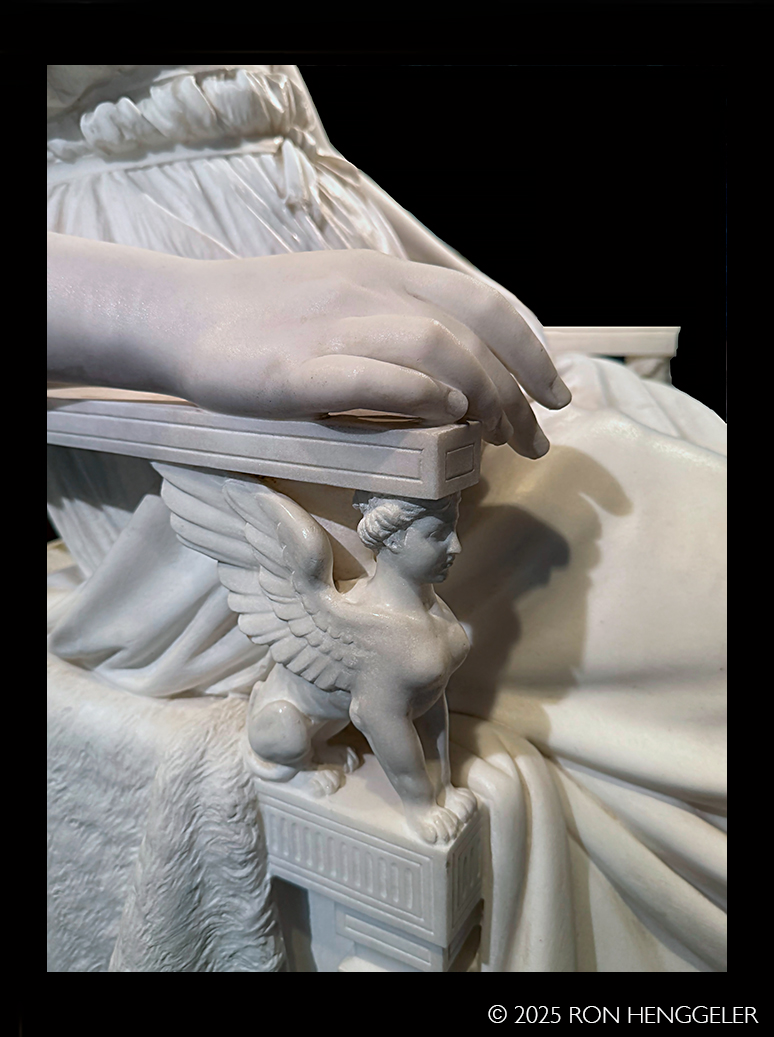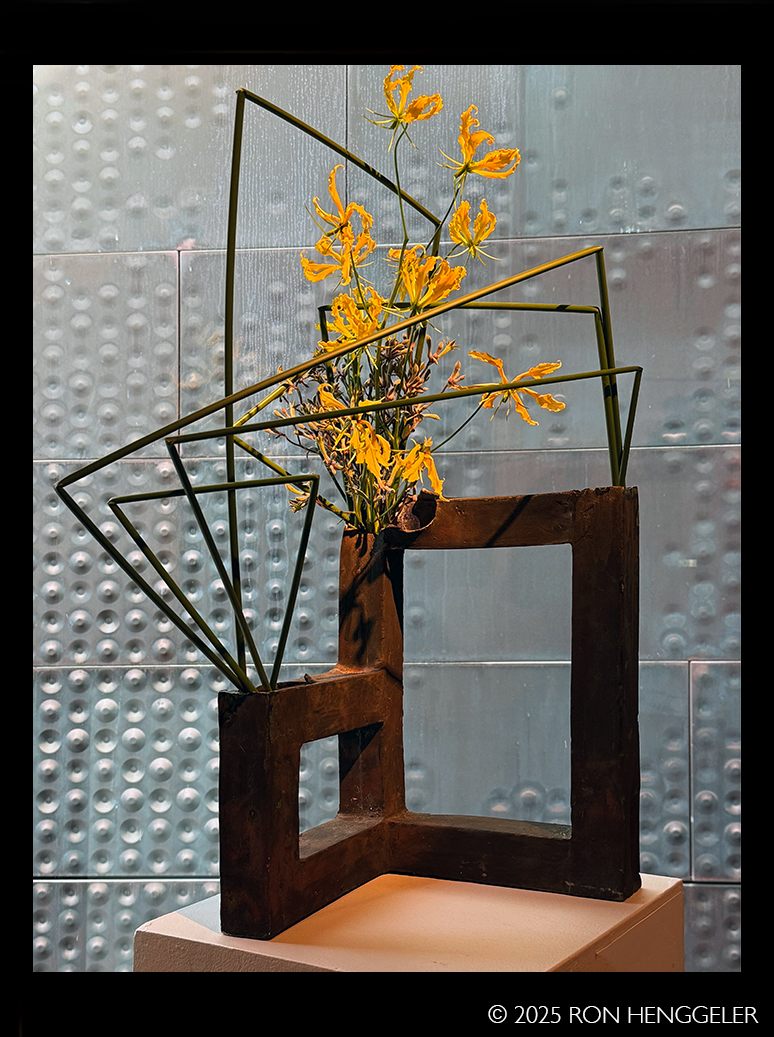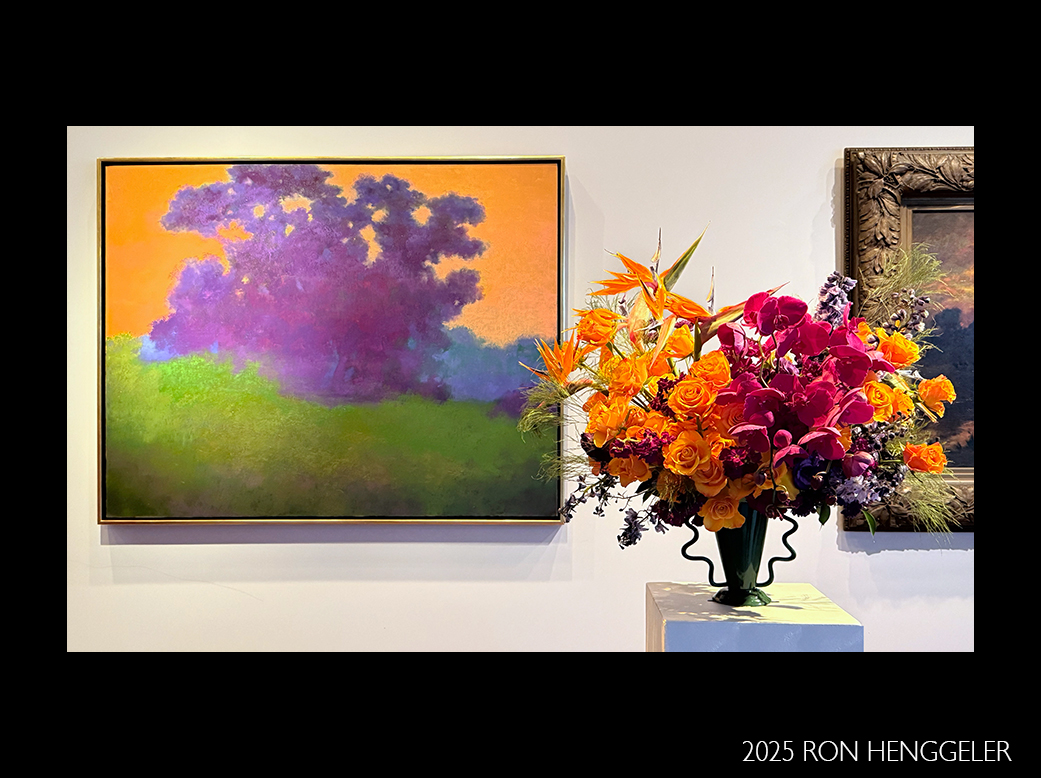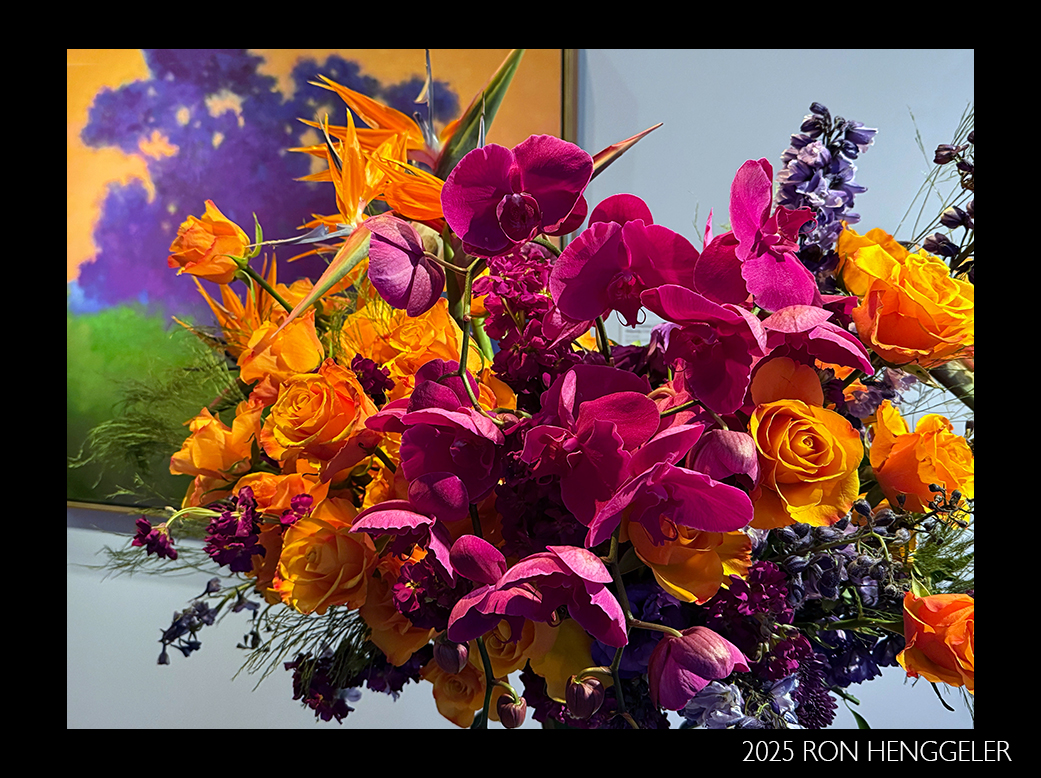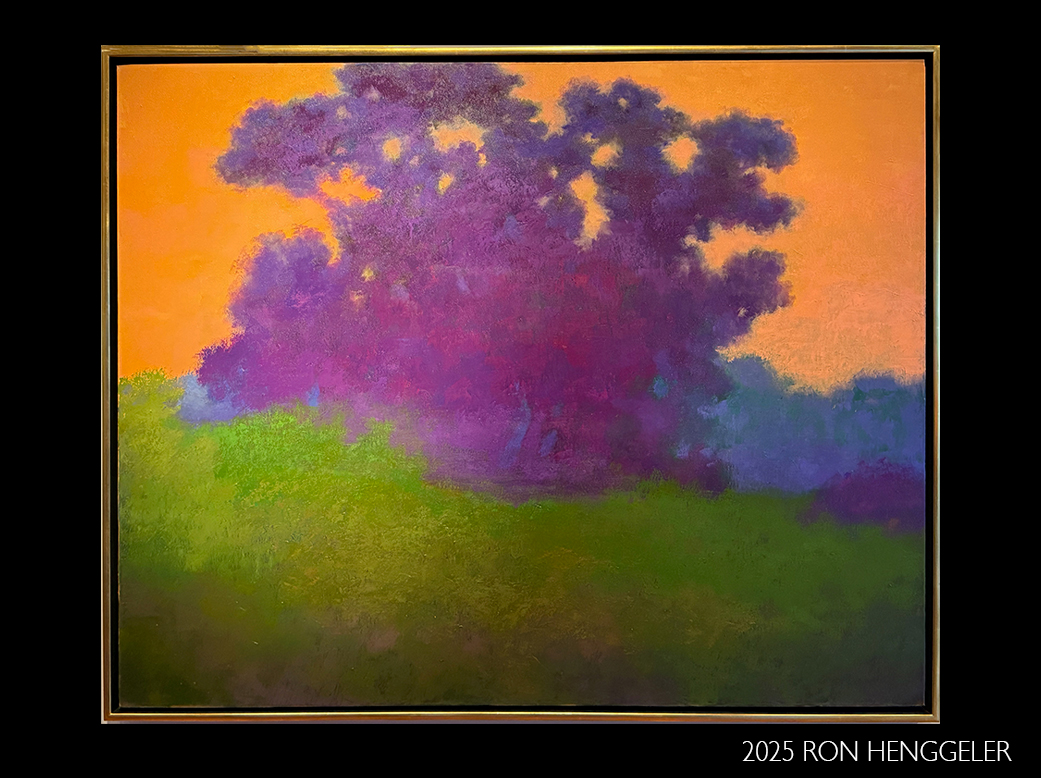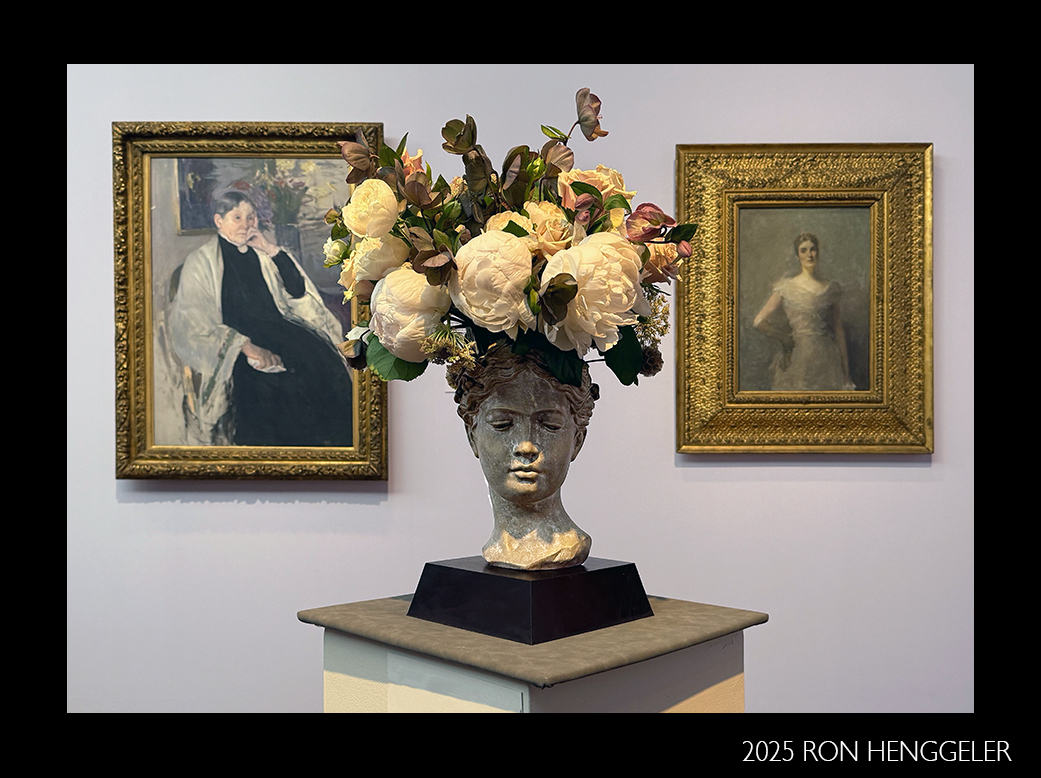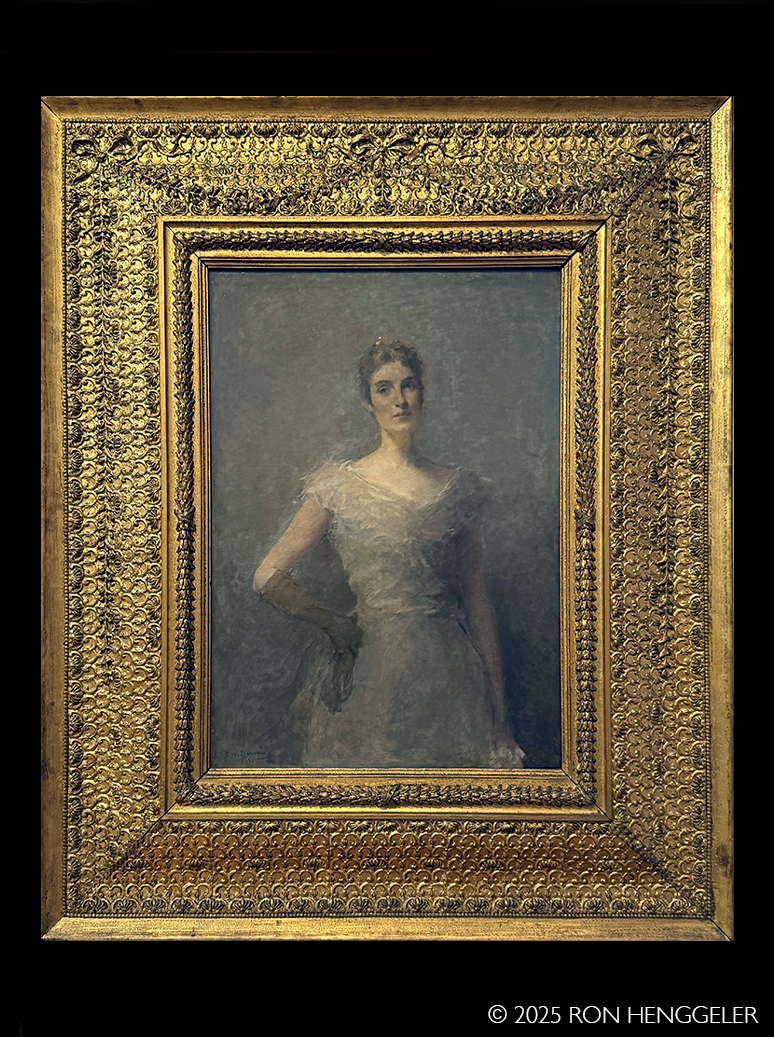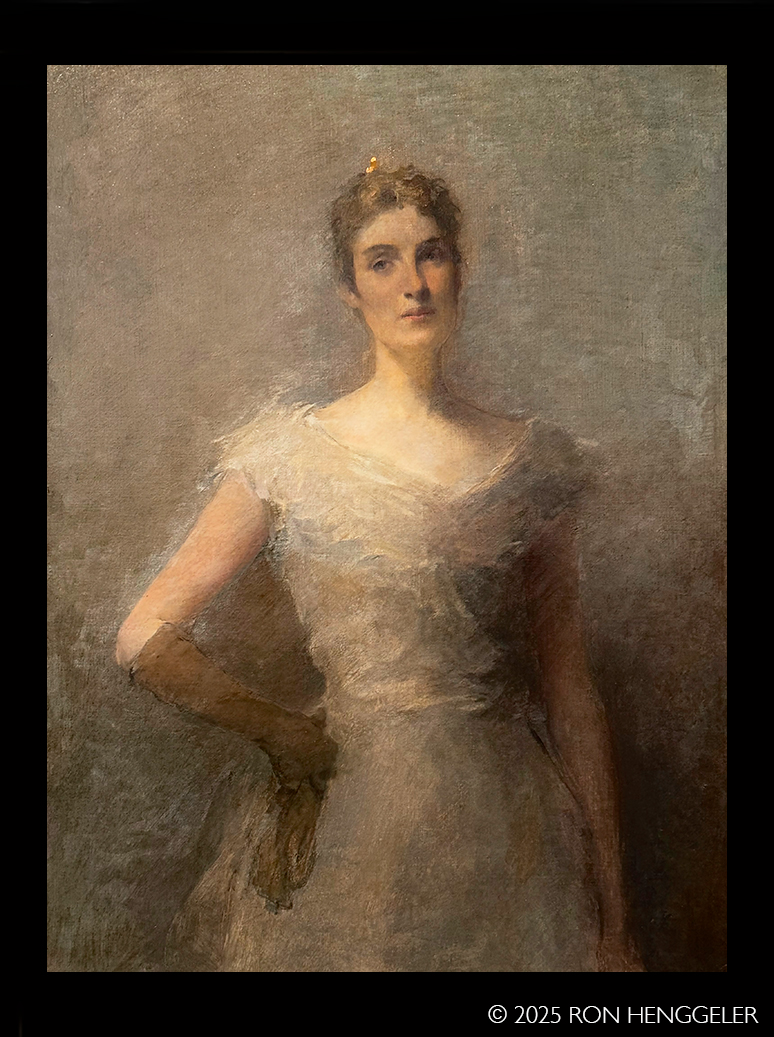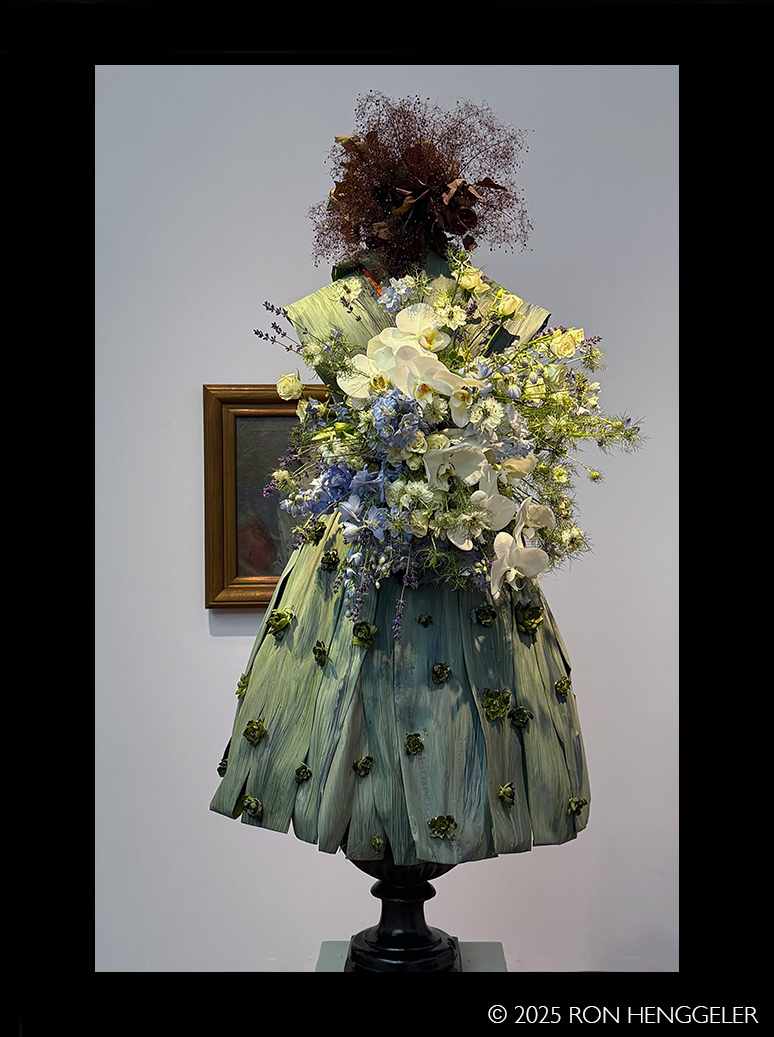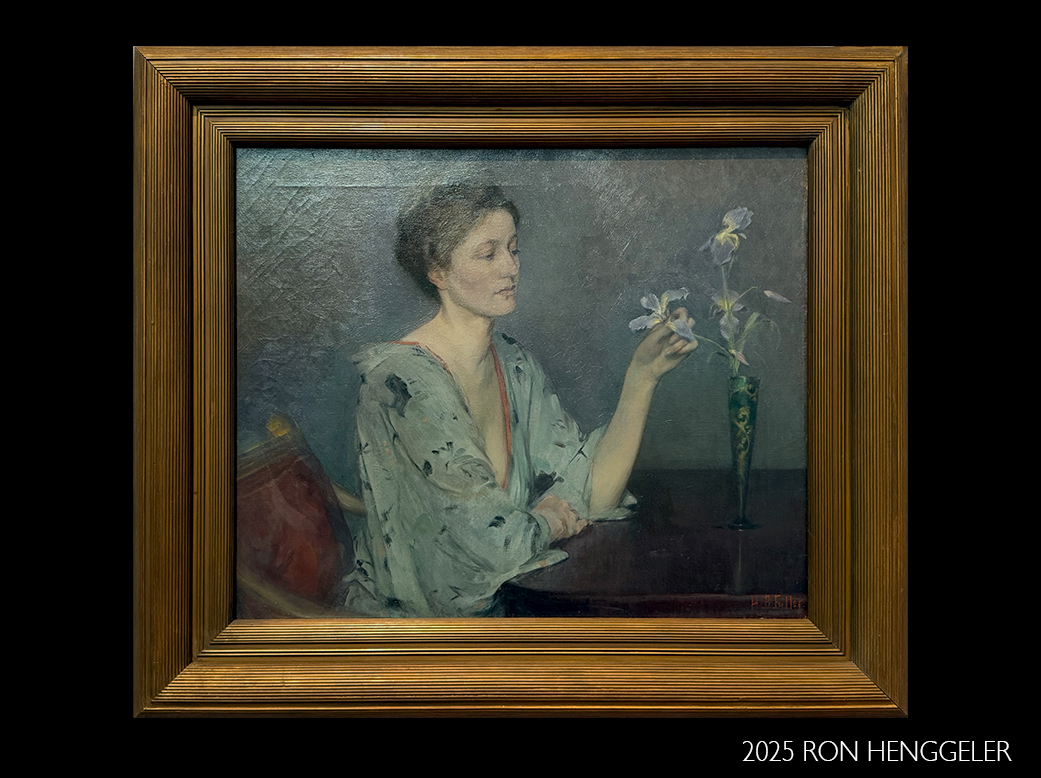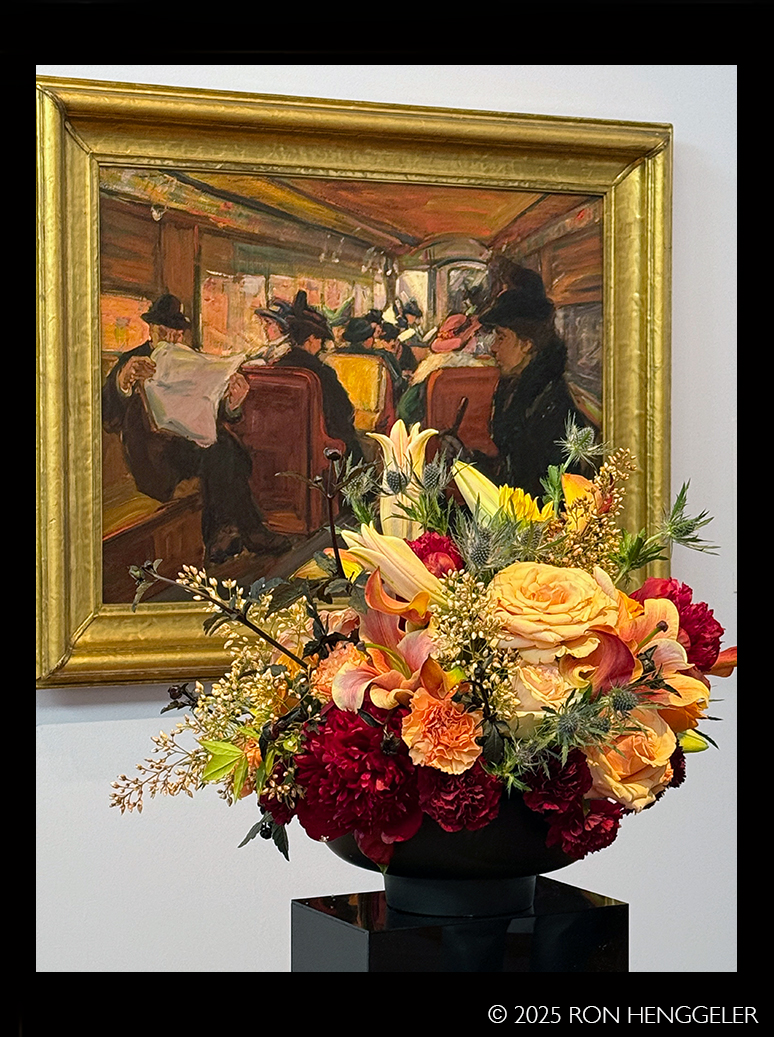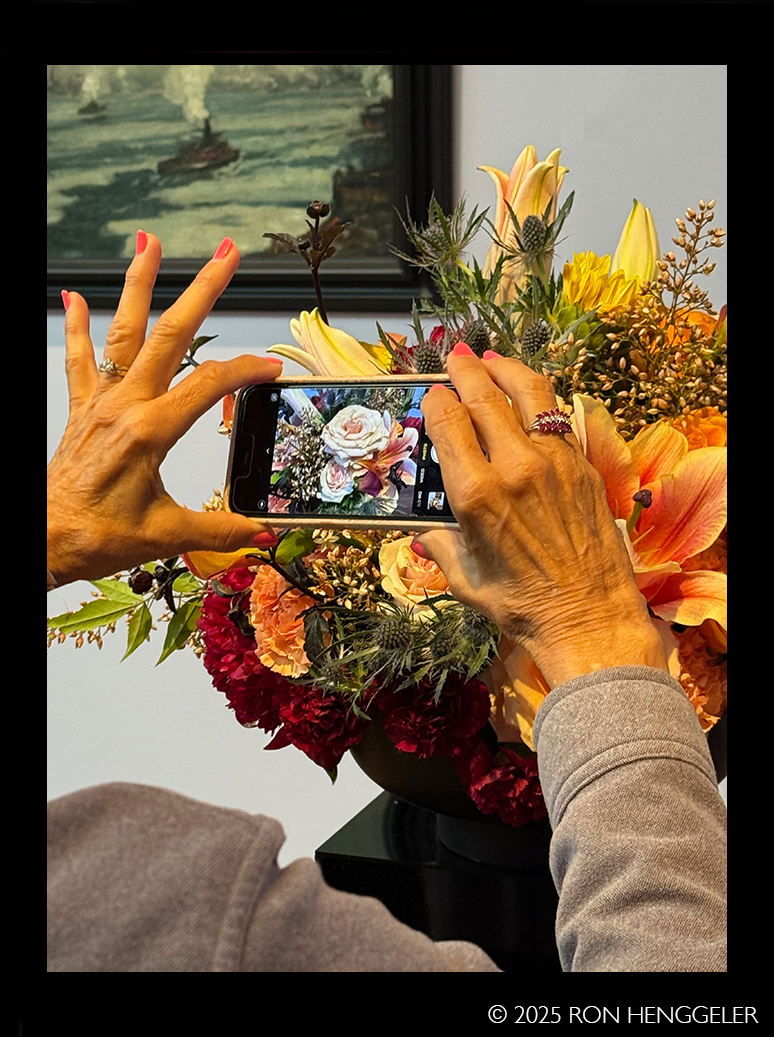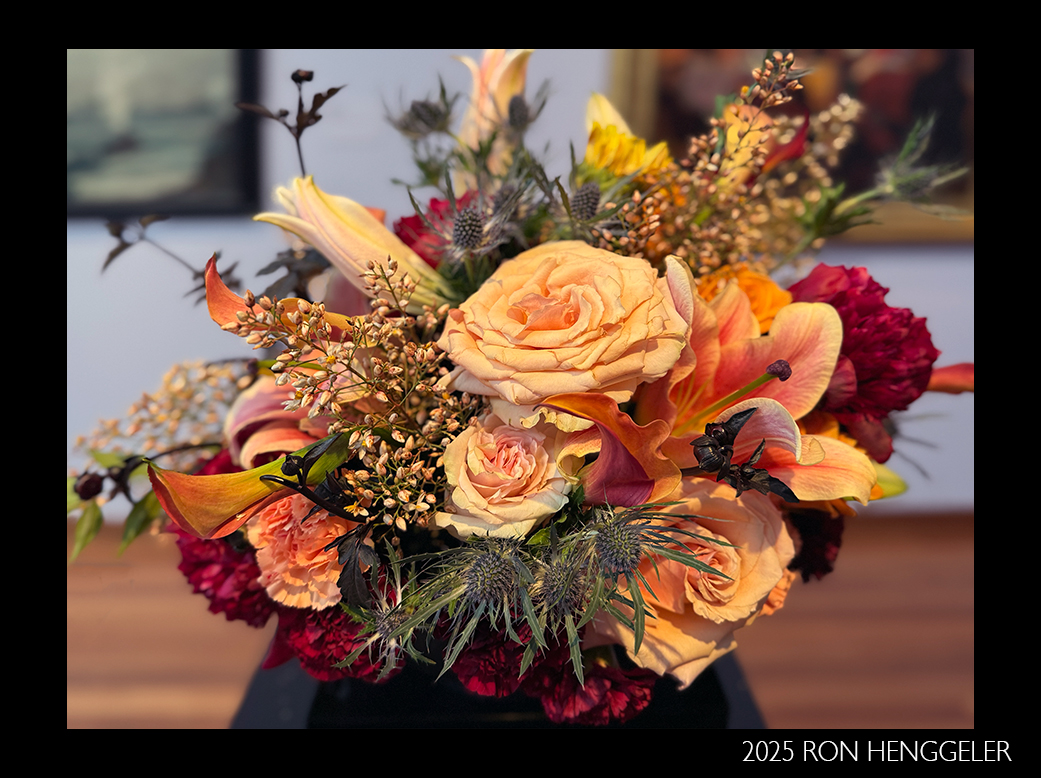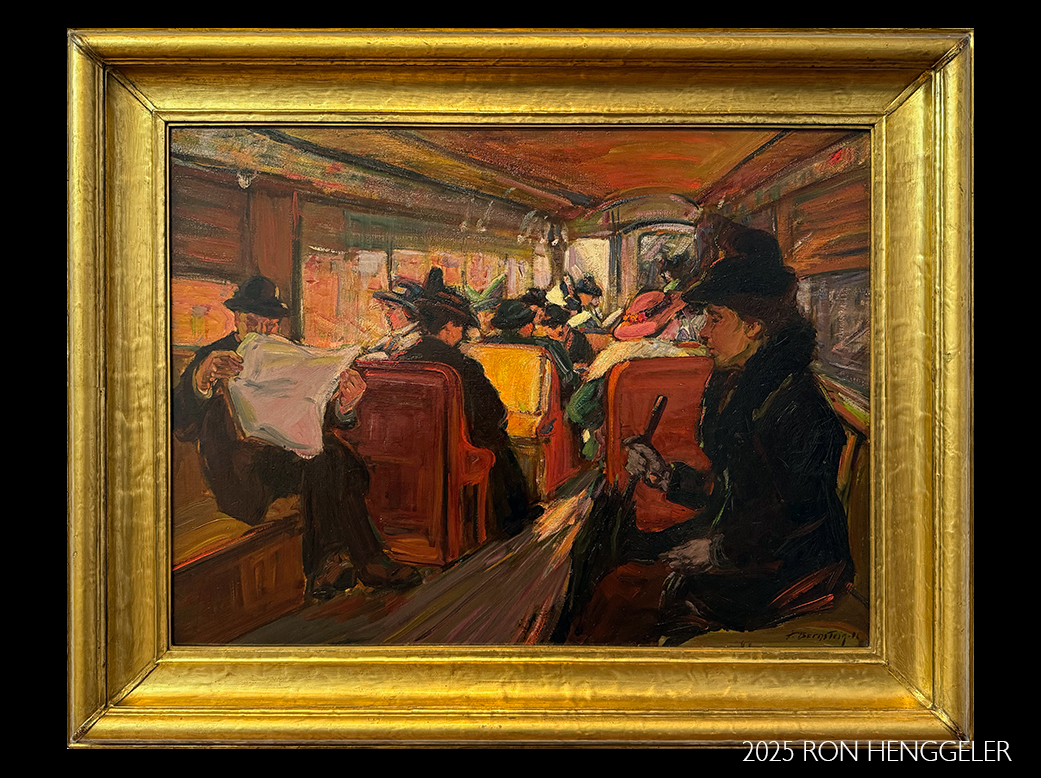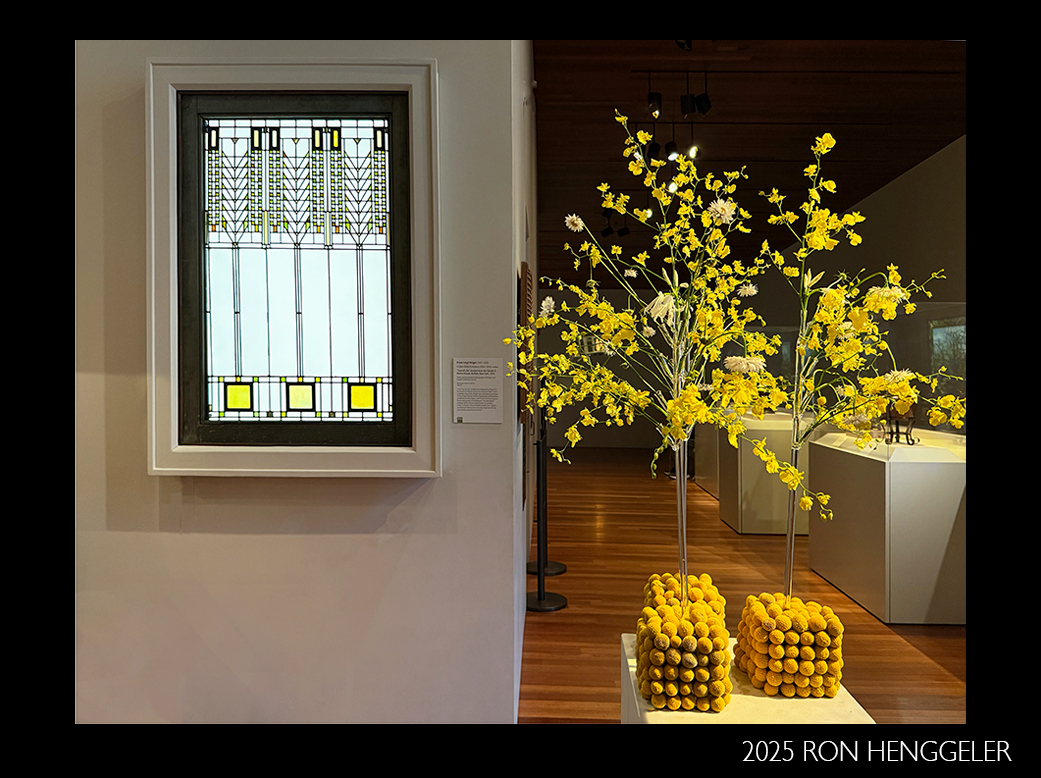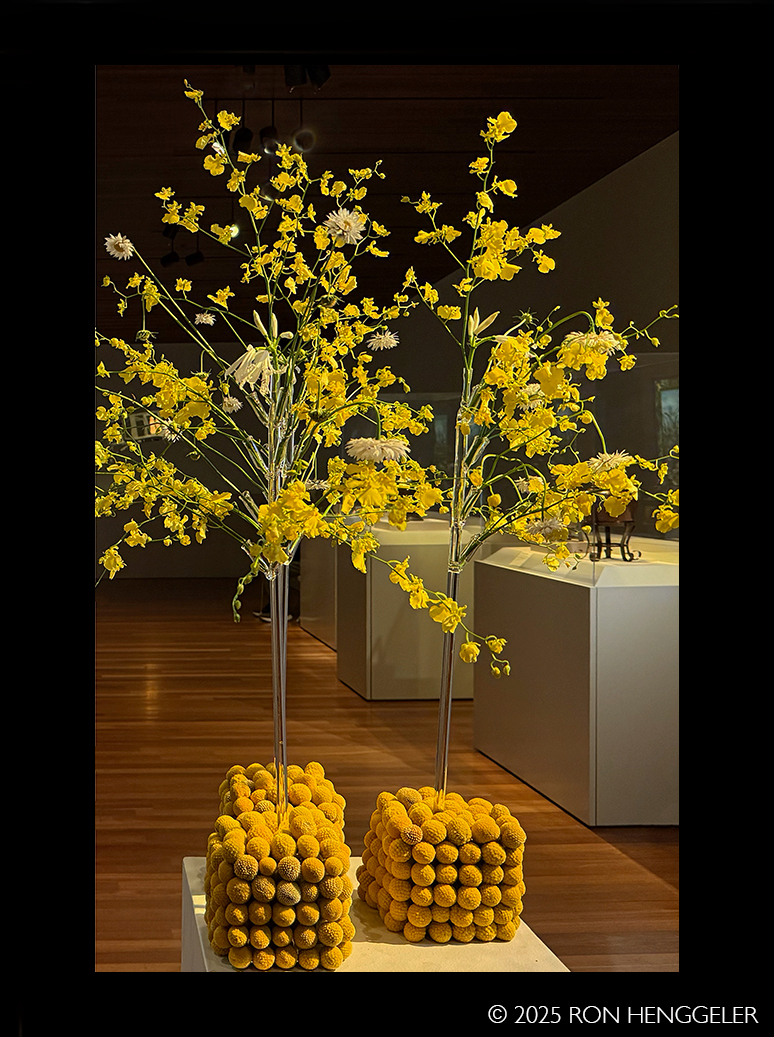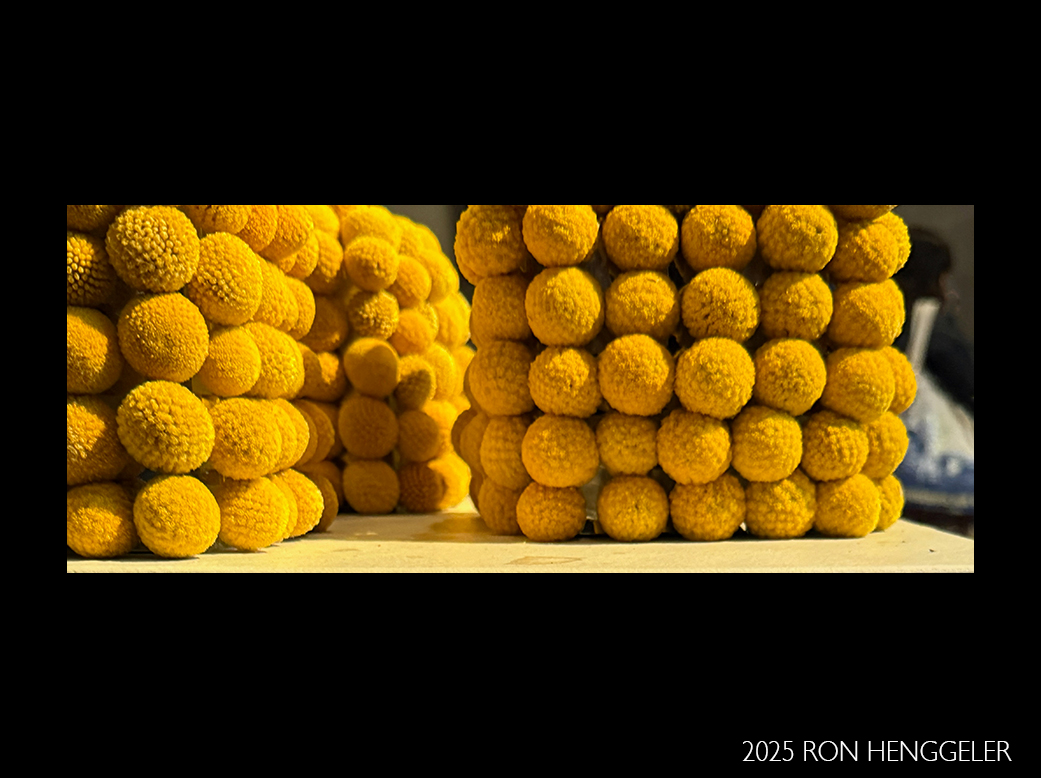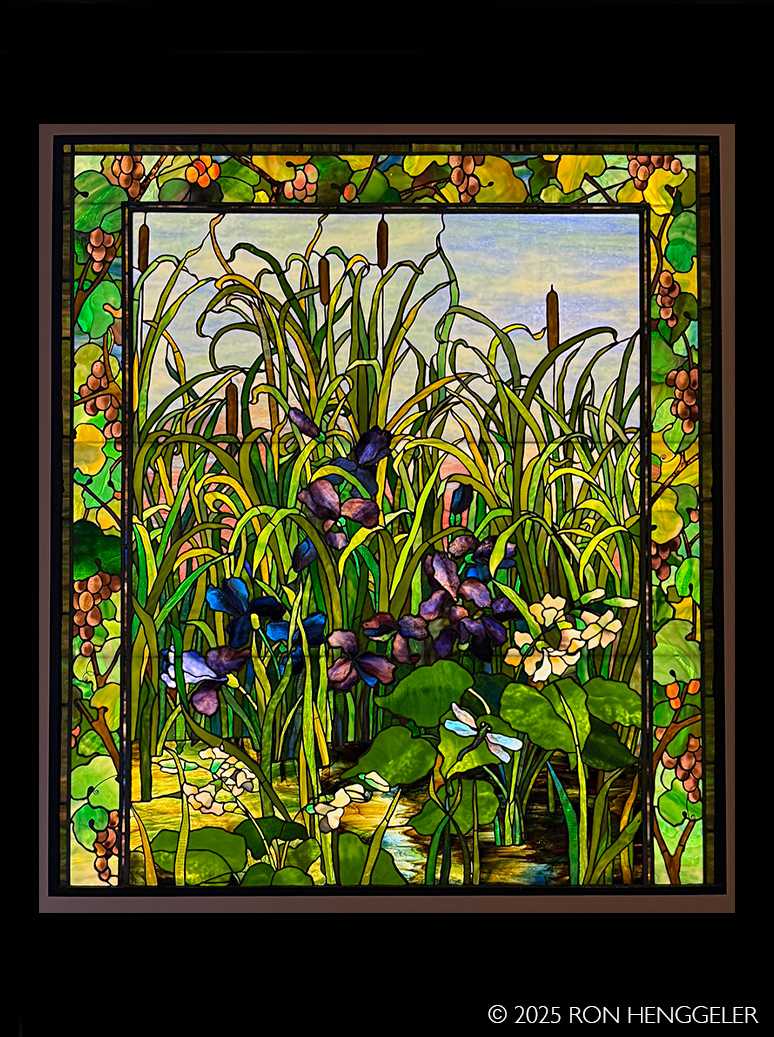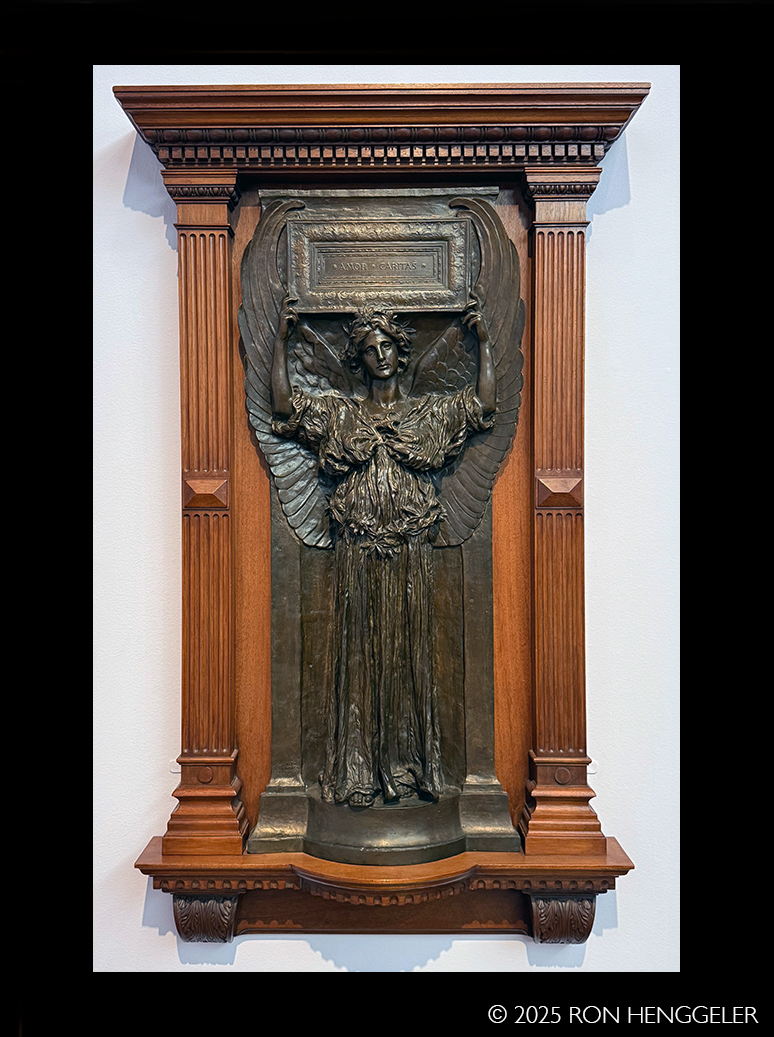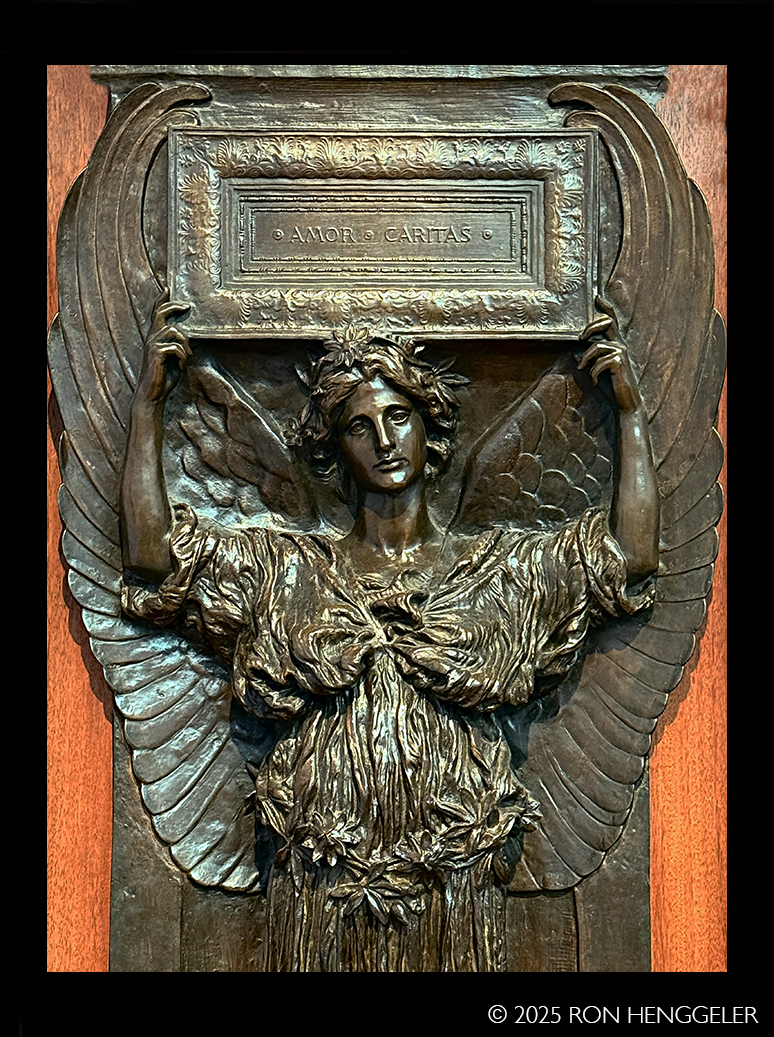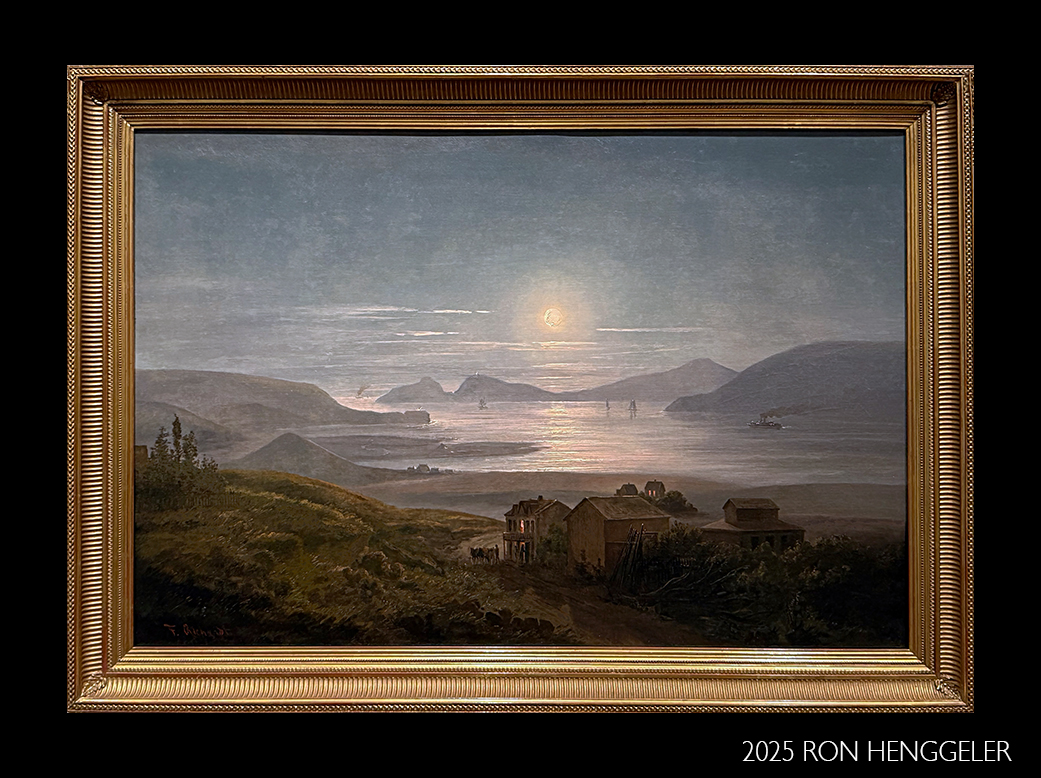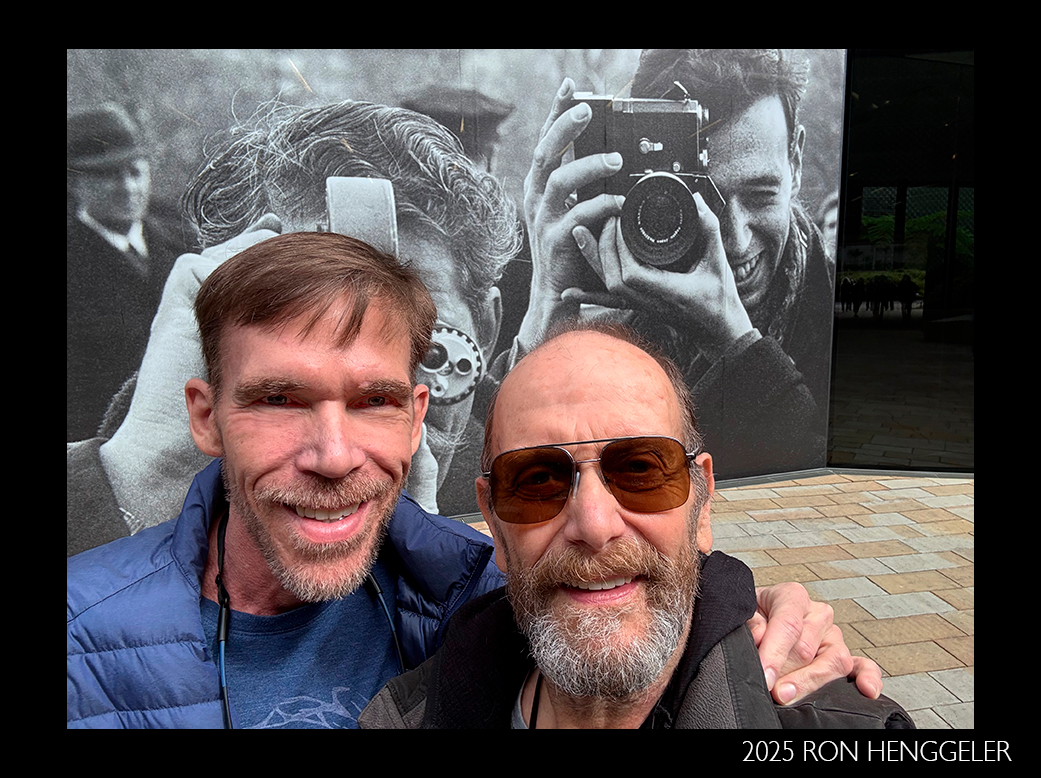| |
June 19, 2025
Bouquets to Art at the de Young Museum in Golden Gate Park |
|
| |
|
|
| |
On June 3th, my friend Stephen and I attended the Bouquets to Art exhibit at the de Young Museum in San Francisco. This annual exhibition is now celebrating its 41st year.
Bouquets to Art lasts only six days. It features stunning floral designs throughout the museum’s galleries that are inspired by artworks at the de Young.
Here are my photos from the recent visit to the de Young Museum in Golden Gate Park to see the Bouquets to Art. |
|
|
|
| |
|
|
| |
|
|
|
| |
|
|
| |
|
|
|
| |
|
|
| |
|
|
|
| |
For the first time in the 41-year history of Bouquets to Art, the Legion of Honor was also included in the annual event as part of the museum’s 100th anniversary celebrations. To see photos from my visit to the Legion of Honor
|
|
| |
|
|
|
| |
|
|
| |
|
|
|
| |
|
|
| |
|
|
|
| |
|
|
| |
|
|
|
| |
George C. Ault (1891-1948)
Highland Light, 1929
Oil on canvas |
|
| |
|
|
|
| |
|
|
| |
|
|
|
| |
Highland Light, 1929
Oil on canvas
George C. Ault (1891-1948)
George C. Ault embraced the American Precisionist movement, which fused the flat, geometric planes of European Cubism with an idealized form of realism to celebrate America's new industrial landscape of skyscrapers, factories, and bridges. The Precisionists generally did not include human figures in their works, preferring instead to depict forms so pristine that they almost appear to have manufactured themselves.
Ault's Highland Light depicts a sixty-six-foot-tall lighthouse built in 1857 in North Truro, Massachusetts, on Cape Cod.
The building was a technological relic whose beacon was converted from a kerosene lamp to electricity in 1932. Ault painted this work in the year of his father's death and of the suicides of two of his brothers. The columnar tower and beacon, suggestive of a memorial or a monument, seem to illustrate Ault's comment that his paintings were a means of
"creating order out of chaos." |
|
| |
|
|
|
| |
Black and White One-Stroke Waterfall,
1992
Oil on canvas
Pat Steir (b. 1940)
Pat Steir rose to prominence with the first generation of feminist artists in the early 1970s. A founding member of the important collective Heresies, she challenged the movements emphasis on making representational imagery. Deeply influenced by John Cage's ideas about improvisation and chance, Steir embraced a practice of throwing and drizzling paint and finding freedom in "being more attached to the process than the conclusion," as she put it.
Initiated in the 1980s, Steir's "Waterfall" series stemmed from her interest in Japanese woodcuts and Chinese landscape painting. Gestural and meditative, Black and White One-Stroke Waterfall features a single, central vertical brushstroke that fuses its material, technique, and subject-the descending cascade of white paint appears to churn up a spray, conveying the visceral sensation of standing at the foot of a towering waterfall. Steir stated, "[These works] are about flow, among other things-waterfalls, rivers and oceans, rainstorms and time-all things that flow and return in other forms." |
|
| |
|
|
|
| |
|
|
| |
|
|
|
| |
|
|
| |
|
|
|
| |
Laurel Designs, Laurel Ann Winzler
Materials Used
Anthurium, mini calla lilies, carnations, craspedia,
black ti leat
|
|
| |
|
|
|
| |
Detail of:
Blood and Meat: Survival for the World,
1992
Rope, carpet, copper wire, metal, canvas scraps, enamel, and Splash Zone compound on canvas on wood
Thornton Dial's life unfolded in tandem with institutionalized segregation and the gains of the civil rights movement. He first fabricated objects as a steelworker at the Pullman Standard Company in Bessemer, Alabama. When the company shuttered in 1981, Dial began to make sculptures, which developed into an artistic practice that included both fine art materials and found objects.
In his painted assemblages, Dial channeled a variety of perspectives on the politics and poetry of African American history. Blood and Meat: Survival for the World commemorates the martyrdom of civil rights activists with a tangle of anguished knots camouflaging the form of a tiger, Dial's personal surrogate and a symbol of the fight for justice.
Portraits of the assassinated Dr. Martin Luther King Jr. and President John F. Kennedy surround a central veil alluding to the brutal murder of Emmett Till. With its suggestions of racial violence, terror, bondage, and fury, Dial's work conveys an urgent-and enduring-sense of reckoning. |
|
| |
|
|
|
| |
Floral arrangement by Laurel Designs, Laurel Ann Winzler
Materials Used
Anthurium, mini calla lilies, carnations, craspedia,
black ti leat
|
|
| |
|
|
|
| |
Laure (New General Chart for the West Indies of E. Wright's Projection), 2021
Oil and acrylic on archival printed canvas
Painting by: Firelei Báez (b. 1981)
Born in 1981 in Santiago de los Caballeros, Dominican Republic, to a Dominican mother and a father of Haitian descent, Firelei Báez moved to Miami with her family at age nine. Reflecting her Afrodiasporic upbringing, Báez's work reclaims and celebrates the histories of the Caribbean.
The protagonist in this painting, named Laure after the Black model in Édouard Manet's Olympia (1863), inhabits a pastoral setting painted onto a reproduction of the first English-language sea atlas. The map depicts the infamous triangle traveled by British enslavers, who took British-manufactured goods to Africa and bartered them for kidnapped Africans, whom they enslaved, transported to the Americas, and exchanged for raw materials used in British factories. Báez visually buries the map under a lush composition in which figure and landscape appear to merge and bloom together-a visual tension that speaks to the Caribbean as a self-determined hybrid space of history and cultural identity.
Traci Joy Designs, Traci Joy Ramos;
Luis Garcia, assistant
Instagram: @tracijoydesigns |
|
| |
|
|
|
| |
Floral arrangement by Traci Joy Designs, Traci Joy Ramos;
Luis Garcia, assistant
Instagram: @tracijoydesigns
|
|
| |
|
|
|
| |
|
|
| |
|
|
|
| |
Floral arrangement by Floral Artists of the Bay Area, Liane Benedict, Brenda Bennett, Greg Lum, AIFD, Monica Peterson, and Natalia Shtein, co-exhibitors Elmer Bischoff
Our design reflects the quiet connections and emotions in the painting.
Soft yellows echo the warm glow of the lamp, while the cool blues mirror the cityscape's distant calm. The containers recall the urban lines beyond the window. Paper triangles suggest the curtains, creating a frame of intimacy and reflection.
Instagram: @floral_artists_of_the_bay_area
Le Bouquet, Ladan Shamskhou; Adriana Galarza and Marisa Khachadoorian, assistants
Air Plant, Calla Lily, Craspedia, Chrysanthemum, Scabiosa, Spray Rose, Mini-Carnation, Lily Grass, Eucalyptus
|
|
| |
|
|
|
| |
Yellow Lampshade, 1969
Oil on canvas
By Elmer Bischoff (1916-1991)
The pioneering Bay Area Figurative artist Elmer Bischoff consistently explored the tensions between abstraction and representation in his work, remarking, "My aim has been to have the paint in the canvas play a double role-one as an alive, sensual thing in itself, and the other conveying a response to the subject. Between the two is this tightrope."
Beginning in 1950, Bischoff participated in weekly drawing sessions from a model with David Park and Richard Diebenkorn, and two years later he shifted from his earlier Abstract Expressionist style to painting in a figurative mode.
Recalling the psychological intensity and ambiguity of scenes by Edward Hopper, Yellow Lampshade features a faceless man and woman in a light-filled, richly textured, and sparsely furnished interior space-their forms silhouetted against a looming gray city skyline. |
|
| |
|
|
|
| |
Superman, 1962
Oil on canvas
Mel Ramos (1935-2018)
Mel Ramos's first Pop Art painting depicts Superman, one of America's most famous cultural icons. In 1962, this comic book character provided a popular-culture antidote to the serious pretensions of contemporary art. Perceiving a link between the art of the past and that of the present, Ramos depicted his "comic book gods and goddesses" as contemporary counterparts to the ancient heroes and heroines of Greek mythology.
A larger-than-life figure from Ramos's childhood, Superman represented a Depression-era fantasy in which even an ordinary man such as Clark Kent could be transformed into a superhero. A twentieth-century equivalent to the nineteenth-century cowboy, Superman also seemed to embody America's belief in the ultimate triumph of good over evil and its self-perceived role as the definer and defender of that good. By 1962, such moral certainties had been complicated by events such as the Holocaust, the dropping of the atomic bomb, McCarthyism, and the Cold War. |
|
| |
|
|
|
| |
Floral arrangement by Acme Floral Co., Jeremiah Allen and Kirk Wilder, co-exhibitors
Mel Ramos,
Superman, 1962
Every hero has a weakness. Kryptonite is mine-an artful collision of florals and gemstone form. Structured with botanical muscle and verdant texture, it seduces with quiet power. This piece reimagines Superman's nemesis as a symbol of irresistible beauty-the kind that disarms not with force, but with elegance.
Instagram: @acmefloralco
Every hero has a weakness. Kryptonite is mine-an artful collision of florals and gemstone form. Structured with botanical muscle and verdant texture, it seduces with quiet power. This piece reimagines Superman's nemesis as a symbol of irresistible beauty-the kind that disarms not with force, but with elegance.
Instagram: @acmefloralco |
|
| |
|
|
|
| |
Diagonal Freeway, 1993
Acrylic on canvas
Wayne Thiebaud (1920-2021) |
|
| |
|
|
|
| |
Floral arrangement by Penflora Designs, Melissa Olson;
Wendy Eger, assistant
Wayne Thiebaud, Diagonal Freeway, 1993
Instagram: @penflora_designs
|
|
| |
|
|
|
| |
Diagonal Freeway, 1993
Acrylic on canvas
Wayne Thiebaud (1920-2021)
Wayne Thiebaud recalled being "fascinated, living in San Francisco, by the way the different streets came in and then just vanished.... No one view seemed to get this sense of edges appearing, things swooping around their own edges, that I loved." Thiebaud's vertiginous streetscapes reflect some of the anxieties of the modern age, their dizzyingly surreal vantages conveying a sense of the precariousness, fragility, and absurdity of human existence.
Reflecting the impacts of human encroachment on the landscape, Diagonal Freeway compresses a dramatically vertical cityscape and barren stretch of hillside into the upper quadrant of the composition. The rest of the painting is dominated by the roadway's striking geometries and vast expanse, against which the shadows of a few solitary vehicles are Silhouetted as they ascend an impossibly steep incline.
The special exhibition Wayne Thiebaud: Art Comes from Art is on view at our Legion of Honor museum from March 22-August 17, 2025. The accompanying exhibition catalogue is available for sale in the Museum stores, both here at the de Young and also at the Legion of Honor. |
|
| |
|
|
|
| |
Black Sea, 1945
Oil on canvas
Milton Avery (1885-1965) |
|
| |
|
|
|
| |
|
|
| |
|
|
|
| |
Black Sea, 1945
Oil on canvas
Milton Avery (1885-1965)
Milton Avery was perhaps the most influential artist to sustain a viable figurative tradition between the 1930s and 1950s, creating works that defied categorization and that were embraced by Abstract Expressionists and Color Field artists, who saw him as a kindred spirit. Bridging the divide between abstraction and representation, Avery's landscape paintings convey an almost spiritual confrontation with nature, distilling the artist's subjective experience of his surroundings into formally elegant and emotionally resonant compositions that are both timeless and universal.
Black Sea was almost certainly inspired by Avery's regular summer vacations in Gloucester, Massachusetts, where he sketched and painted outdoors. Avery often painted watercolors on site, and he would later translate these compositions into oils in his New York studio. The striking black and yellow colors evoke the moments after sunset, when the sunlight gradually fades into darkness. |
|
| |
|
|
|
| |
Sky Cathedral's Presence I, 1959-1962
Painted wood and found objects
Louise Nevelson (1899-1988)
Louise Nevelson created her wall-size constructions from cast-off wood and metal scavenged from the streets of New York City. Nevelson's "Sky Cathedral" sculptures were inspired by diverse sources that included ancient Mayan temples, Gothic European cathedrals, and Manhattan's urban landscape, which she described "as a great big sculpture." The boxes of fragments in Sky Cathedral's Presence / contain enigmatic signs and symbols that are open to any number of interpretations.
Nevelson linked her first use of coffin-like black boxes to the trauma inflicted by World War Il, in which her son served.
The works in Nevelson's "Sky Cathedral" series address the issue of religious belief in an existential age wrought by the horrors of war, the Holocaust, and the atomic bomb.
Balancing fragmentation and unity, they reflect our perennial desire for something larger than ourselves-a mythical and mysterious "presence" that is spiritually sustaining. |
|
| |
|
|
|
| |
|
|
| |
|
|
|
| |
|
|
| |
|
|
|
| |
Floral arrangement by Lela, Maria Daniela Quiros;
Phoebe Connell, assistant
Henri Matisse, XI - The Codomas (Les Codomas)
from Jazz, 1947
|
|
| |
|
|
|
| |
XI - The Codomas (Les Codomas) from Jazz, 1947
Color pochoir in opaque watercolor on paper
Henri Matisse
Matisse named this particularly colorful plate The Codomas, after a family of trapeze artists. Indeed, a trapeze act unfolds in the composition, with two yellow figures in midair, swinging toward each other from blue and white bars. Beneath them, a sea of small black squares makes up the net below that ensures their safety during this daring feat. |
|
| |
|
|
|
| |
|
|
| |
|
|
|
| |
|
|
| |
|
|
|
| |
|
|
| |
|
|
|
| |
Floral arrangement by Flowers Indeed!, Greg Lum, AIFD, EMC and Lisa Casazza, co-exhibitors; Charlotte Umstead, Olivia Umstead, Susan Gold and Kathy Dere, assistants
Gustav Grunewald,
The Niagara River at the Cataract, ca. 1832
Grunewald believed that nature was seen as evidence of God's presence.
Niagara Falls is a powerful natural spectacle that held spiritual significance for Grunewald. The painting is an example of using landscape to establish national identity. We have created three arrangements that converge into a single composition that reflects the scale and power of the Falls.
Materials Used
3 Handmade ceramic bowls by Susan Gold, roses, carnations, green trick dianthus, craspedia (Billy Ball yarrow), Spanish moss, lily grass, rhipsalis cactus and a IKEA lamp shade. |
|
| |
|
|
|
| |
Horseshoe Falls from below the High Bank, ca. 1832
Oil on canvas
Gustav Grunewald (1805-1878) |
|
| |
|
|
|
| |
The Niagara River at the Cataract, ca. 1832
Oil on canvas
Gustav Grunewald (1805-1878) |
|
| |
|
|
|
| |
Floral arrangement by Le Bouquet, Ladan Shamskhou; Adriana Galarza and Marisa Khachadoorian, assistants
Charles Christian Nahl, Unidentified Man, 1867
Instagram: @lebouquetsf |
|
| |
|
|
|
| |
Unidentified Man, 1867
Oil on canvas
Charles Christian Nahl
(1818-1878)
This painting depicts a Nisenan-Maidu man who may have been named "Wahla" and was likely educated and employed in the household of California businessman Samuel Brannan. He later worked as a coachman for California politician Milton S. Latham, who was reportedly so impressed by him that he commissioned Charles Christian Nahl, California's foremost portraitist, to paint him.
In celebrating and documenting the sitter's conformity to American settlers' standards, Nahl's work puts forth a colonialist narrative of peaceful assimilation-one that belies the reality of the US government's violent efforts to"Americanize" Native people. In Northern California, this violence is evidenced by accounts of Californian Indian children being kidnapped and forcibly "civilized" through Indian boarding schools.
|
|
| |
|
|
|
| |
Floral arrangement by Walnut Creek Garden Club, Cora Metivier;
Mary Jane Herr and Kathy Smith, assistants
The De Peyster Painter, Maria Maytilda Winkler, ca. 1735
In a quiet, tender moment, worldly troubles fade away.
The lamb held gently exudes innocence and calm.
|
|
| |
|
|
|
| |
Letitia Grace McCurdy, ca. 1800-1802
Oil on canvas
Joshua Johnson (ca. 1763-ca. 1824)
A freed slave and self-taught painter working in Baltimore, Maryland, Joshua Johnson is the earliest-known African American artist. This charming image portrays the daughter of a wealthy Baltimore merchant. Her Empire gown, stylish Napoleonic bangs, and Turkish shoes (known as "straights" because they could fit on either foot) reveal the influence of French fashion in America.
|
|
| |
|
|
|
| |
Prometheus Bound, 1847
Oil on canvas
Thomas Cole (American, 1801-1848)
Flowers by Hunt Littlefield, Neil Hunt
Instagram: @hunt_littlefield |
|
| |
|
|
|
| |
Prometheus Bound, 1847
Oil on canvas
Thomas Cole (American, 1801-1848) |
|
| |
|
|
|
| |
Detail of: Prometheus Bound, 1847
Oil on canvas
Thomas Cole (American, 1801-1848) |
|
| |
|
|
|
| |
Floral arrangement by Blooming Floral Design, Kaori Hashimoto, AIFD Edward Hicks, The Peaceable Kingdom, ca. 1846
Materials Used
Cymbidium &. Mokara Orchids, Helleborus, Kangaroo Paw, Erygium Blue, Orlaya White, Ti Leaf, Hypericum, Leucadendron, Allium, Dianthus Solomon, Hydrangea, Brunches. |
|
| |
|
|
|
| |
Materials Used
Cymbidium &. Mokara Orchids, Helleborus, Kangaroo Paw, Erygium Blue, Orlaya White, Ti Leaf, Hypericum, Leucadendron, Allium, Dianthus Solomon, Hydrangea, Brunches. |
|
| |
|
|
|
| |
The Peaceable Kingdom, ca. 1846
Oil on canvas
Edward Hicks (1780-1849)
Edward Hicks was a prominent Pennsylvania member of the Religious Society of Friends, or Quakers, whose values of equality, peace, and simplicity provided a contrast to the inequality, conflict, and excess characterizing the decades before and after the Civil War.
Hicks painted more than sixty versions of The Peaceable Kingdom, a prophecy of the establishment of God's kingdom on earth, inspired by the biblical text Isaiah 11:6-9: "The wolf also shall dwell with the lamb, and the leopard shall lie down with the kid; and the calf and the young lion and the fatling together; and a little child shall lead them." In the background, Quaker leader William Penn signs the 1682 purchase treaty with the Delaware/Lenape Indians, which the artist perceived as a historical model of a peaceable kingdom on earth-albeit one that came at the expense of another group's homelands. |
|
| |
|
|
|
| |
Sunlight and Shadow, 1862
Oil on canvas
Albert Bierstadt (1830-1902)
Albert Bierstadt's view of the Gothic Revival chapel of the Löwenburg royal castle near Kassel, Germany, was based on an oil sketch he made in 1855, while studying art at the Düsseldorf Academy. Bierstadt's poetic title evokes associations with spiritual enlightenment and darkness. However, he also contrasts the man in a top hat inside the sunlit church with the impoverished woman nursing her infant, a traditional Christian symbol of charity cast in shadow on the steps outside.
The oak tree, symbolizing enduring faith in the face of adversity and Christ's cross, crucifixion, and resurrection, was adopted as the national tree of Germany. Bierstadt incorporated oak branches and leaves into his Gothic Revival frame. This historicizing style, inspired by medieval precedents, sought to endow many machine-made, mass-produced goods of the industrial era with an aura of spiritual value.
|
|
| |
|
|
|
| |
Detail of: Sunlight and Shadow, 1862
Oil on canvas
Albert Bierstadt (1830-1902) |
|
| |
|
|
|
| |
Floral arragement by Lala Kirst
A Corner of My Studio, ca. 1895
William Merritt Chase's eclecticism and mastery of light resonate deeply with me as a painter. His piece captures the tranquility and warmth of a creative space, echoing my own studio experiences. For this tribute, I'm drawn to flowers that reflect his fascination with exoticism and styles, allowing me to explore the intersection of art and nature.
|
|
| |
|
|
|
| |
A Corner of My Studio, ca. 1895
Oil on canvas
William Merritt Chase (1849-1916) |
|
| |
|
|
|
| |
James McNeill Whistler (1834-1903)
The Gold Scab: Eruption in Frilthy Lucre (The Creditor), 1879
Oil on canvas |
|
| |
|
|
|
| |
James McNeill Whistler (1834-1903)
The Gold Scab: Eruption in Frilthy Lucre (The Creditor), 1879
Oil on canvas
In this painting, Whistler deployed his notorious wit to caricature his former patron Frederick R. Leyland, who had commissioned Harmony in Blue and Gold:
The Peacock Room (1876, Freer Gallery of Art, Smithsonian Institution) for his London townhouse, but who battled with the artist over his unauthorized changes to the room and their cost. After suing the English art critic John Ruskin for libel in 1877, Whistler was forced to file for bankruptcy, and Leyland was his chief creditor, having himself sued Whistler for the Peacock Room's overexpenditures. The Gold Scab viciously depicts Leyland as a hideous peacock, surrounded by money bags and sitting astride Whistler's house, which had to be sold. |
|
| |
|
|
|
| |
|
|
| |
|
|
|
| |
|
|
| |
|
|
|
| |
|
|
| |
|
|
|
| |
|
|
| |
|
|
|
| |
Ikebana International San Francisco, Sharon Doi-Swan; Bonnie Min, assistant
The ancient art of Ikebana, Japanese flower arranging, often utilizes the concept of Contrast.
This vase was created by a Potter who also studied Sogetsu Ikebana.
My arrangement contrasts the vase's Brutalist influenced design with the delicacy of the Gloriosa Lily, a splash of color against the rough, raw surfaces of the vase.
Instagram: @ikebanasf31 |
|
| |
|
|
|
| |
Text |
|
| |
|
|
|
| |
ATEMPO Flowers, Melissa Vazquez; Scott Koranda,
assistant
Richard Mayhew, Rhapsody, 2002
Instagram: @atempoflowers.events
Materials Used
Tycoon roses, Delphinium, Phalaeonopsis orchids, bird of paradise, stock
Our design reflects the quiet connections and emotions in the painting.
Soft yellows echo the warm glow of the lamp, while the cool blues mirror the cityscape's distant calm. The containers recall the urban lines beyond the window. Paper triangles suggest the curtains, creating a frame of intimacy and reflection. |
|
| |
|
|
|
| |
Rhapsody, 2002
Oil on canvas
Richard Mayhew (1924-2024)
Born in a coastal town on Long Island, near the Atlantic Ocean, Richard Mayhew experienced firsthand the complex interplay of water, earth, and sky. He also gained a deep appreciation for nature from his Native American grandmother, who, he has said, taught him "nature lore, ways, and attitudes." Mayhew's extraordinary color harmonies and animated natural elements draw inspiration from the atmospheric and romantic nineteenth-century landscapes by Tonalists such as George Inness to express "the essence of nature, the unique spiritual mood of the land," especially in California, where he lived for many years. |
|
| |
|
|
|
| |
Floral arrangement by Nob Hill Florist, Leslie Kaye and John Gruenig, co-exhibitors
|
|
| |
|
|
|
| |
Floral arrangement by Nob Hill Florist, Leslie Kaye and John Gruenig, co-exhibitors |
|
| |
|
|
|
| |
Elizabeth Platt Jencks, 1895
Oil on canvas
Thomas Wilmer Dewing
(1851-1938)
Originally from Boston, Thomas Wilmer Dewing trained at the Académie Julian in Paris and, upon returning to the United States, became known for painting atmospheric landscapes and dreamy portraits of women. Dewing frequently drew from his own wardrobe of studio garments to outfit his sitters, and the loose fit of this subject's gown may attest to its origins as a prop.
Dewing painted this portrait of the confident Elizabeth Platt Jencks, an organizer of the Baltimore Women's Civic League, while he was living in Cornish, New Hampshire, shortly after returning from a stay in Europe. In London, Dewing shared a studio with the artist James McNeill Whistler, and the brushwork and muted palette of this composition reflect Whistler's influence.
|
|
| |
|
|
|
| |
Elizabeth Platt Jencks, 1895
Oil on canvas
Thomas Wilmer Dewing
(1851-1938)
|
|
| |
|
|
|
| |
Floral aggangement by Miss Scarlett's Flowers, Joy Somersett, CFD
Henry Brown Fuller, Ebba Bohm, ca. 1905
I always choose a painting with a woman and a flower because I want to put a bouquet in her hands.
Website: MissScarlettsFlowers.com
Materials Used
Painted Ti Leaves and an assortment of flowers. |
|
| |
|
|
|
| |
Ebba Bohm, ca. 1905
Oil on canvas
Henry Brown Fuller
(1867-1934)
Known for his depictions of classical and symbolic subjects, Henry Brown Fuller lived and worked in the vibrant artist colony in Cornish, New Hampshire. Here he depicted Ebba Bohm, a Swedish model who lived with the Fuller family. Lost in thought, she contemplates a trio of irises, a traditional Christian symbol of the Holy Trinity and a flower widely celebrated in Japanese poetry and art.
Bohm wears what appears to be a Japanese silk kimono with a floral pattern that echoes the blossoms she admires. The garment reflects Japonisme, the fascination with Japanese objects and aesthetics that proliferated throughout the later nineteenth and early twentieth centuries, leading many Western artists such as Fuller to present Eastern cultures through an exoticized and eroticized lens.
|
|
| |
|
|
|
| |
Theresa Bernstein, In the Elevated, 1916
Floral arrangement by Hillsborough Garden Club, Lisa Cleveland and Liz Horton, co-exhibitors; Patricia Foster, assistant
|
|
| |
|
|
|
| |
|
|
| |
|
|
|
| |
Floral arrangement by Hillsborough Garden Club, Lisa Cleveland and Liz Horton, co-exhibitors; Patricia Foster, assistant
|
|
| |
|
|
|
| |
In the Elevated, 1916
Oil on canvas
Theresa Bernstein
(1890-2002)
Working at a time when women artists experienced gender prejudice, Theresa Bernstein often concealed her first name so that her work would be judged fairly by all-male exhibition juries. She became known informally as the ninth member of the group of realist painters known as The Eight.
This work depicts a passenger car on the Ninth Avenue Elevated railway, which Bernstein took between her parents' apartment on West 94th Street and her studio on West 55th Street in New York City. Like Honoré Daumier's Third-Class Carriage, on view at the Legion of Honor, In the Elevated captures the experience of modern city dwellers in close physical proximity but psychologically isolated from one another.
|
|
| |
|
|
|
| |
Frank Lloyd Wright (1867-1959)
Linden Glass Company (1884-1934), maker
"Tree of Life" window from the Darwin D.
Martin House, Buffalo, New York, 1904
Clear, colored, and gold reflective glass with brass- and copper-coated zinc caming
This "Tree of Life" window was designed by Wright for the Darwin D. Martin House (constructed 1903-1905) in Buffalo, New York. Wright was a pioneering architect of the Prairie School, which emphasized craftsmanship, simplified ornamentation, and horizontal lines inspired by the flat prairies of the Midwest. The abstracted window motif of three stylized trees (or possibly stalks of wheat) reflects Wright's belief in an "organic architecture" that is harmoniously integrated into the surrounding natural environment. |
|
| |
|
|
|
| |
Frank Lloyd Wright, "Tree of Life" Window from the Darwin D. Martin House, Buffalo, New York, 1904
Floral arrangement by Her Urban Herbs, Elise Manlove
Instagram: @herurbanherbs |
|
| |
|
|
|
| |
Floral arrangement by Her Urban Herbs, Elise Manlove
Instagram: @herurbanherbs |
|
| |
|
|
|
| |
Attributed to Lederle and Geissler (New York), maker Iris, lily, and cattail window, ca. 1904
Stained, leaded, and plated glass with wood frame
This window was once installed in the Ansonia, a famous New York City residence hotel that featured luxury apartments with parlors, libraries, and formal dining rooms.
Many wealthy urban dwellers living closely together installed stained-glass windows to strike a balance between light and privacy.
This window overlooked an interior light well, replacing a view of the adjacent architecture with a lush marshland scene surrounded by grape vines bearing fruit. The subject epitomizes the love of nature that shaped both the Aesthetic and the Arts and Crafts movements in Europe and the United States. |
|
| |
|
|
|
| |
Amor Caritas, 1898
Bronze
Augustus Saint-Gaudens
(1848-1907)
Augustus Saint-Gaudens's sculptures epitomize the flowering of the American Renaissance of culture between the 1876
Centennial and World War I (1914-1918). Contributors to this movement believed that the United States was the rightful heir to Greek democracy, Roman law, and Renaissance humanism and was thus destined for global dominance, both politically and culturally.
Reflecting these classical inspirations, the winged female subject of this work wears a modified late nineteenth-century interpretation of an ancient Greek tunic, or chiton, though her loose curls, embellished with passion flowers, represent a hairstyle that was fashionable in the artist's time. She holds up a plaque bearing the Latin words Amor Caritas, or Love [and] Charity. The model, Davida Johnson Clark, was Saint-Gaudens's mistress and mother of their son, Louis P. Clark.
Although she was named Albertina at birth, Saint-Gaudens gave her the name Davida, thus equating her beauty with that of Renaissance sculptor Michelangelo's statue of David (1501-1504). |
|
| |
|
|
|
| |
Amor Caritas, 1898
Bronze
Augustus Saint-Gaudens
(1848-1907)
|
|
| |
|
|
|
| |
Golden Gate Moonlight, ca. 1875
Oil on canvas
Joachim Ferdinand Richardt
(1819-1895) |
|
| |
|
|
|
| |
Golden Gate Moonlight, ca. 1875
Oil on canvas
Joachim Ferdinand Richardt
(1819-1895) |
|
| |
|
|
|
| |
|
|
| |
|
|
